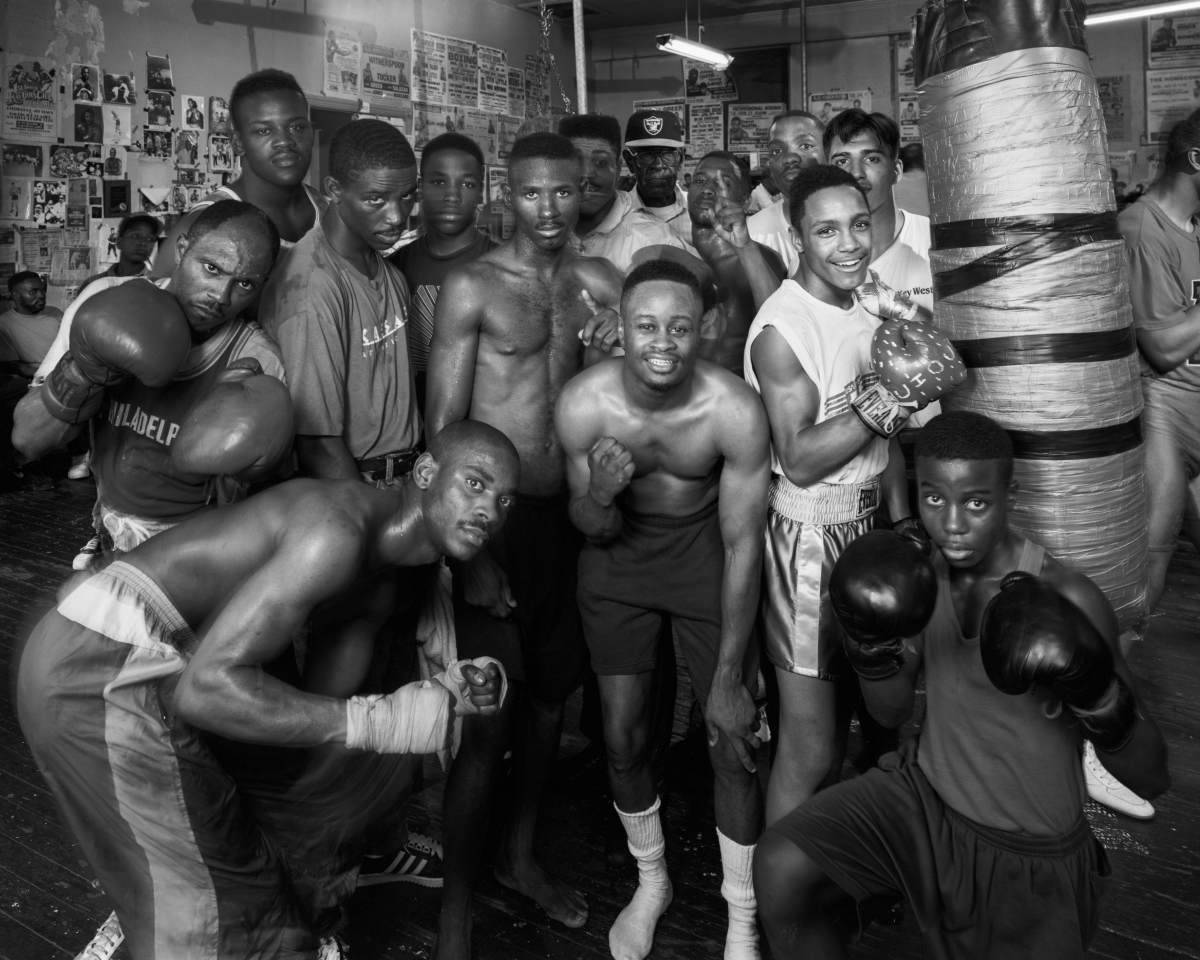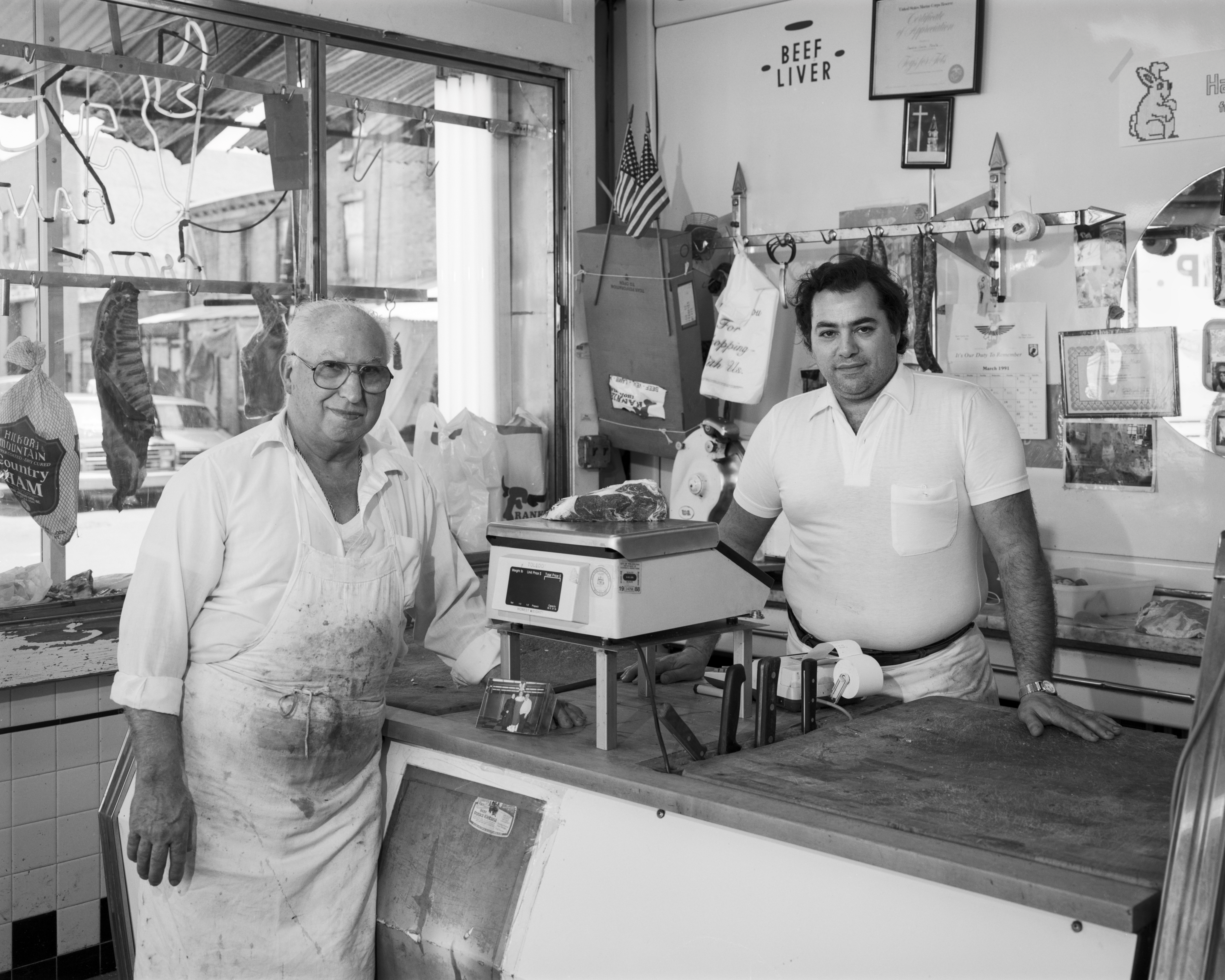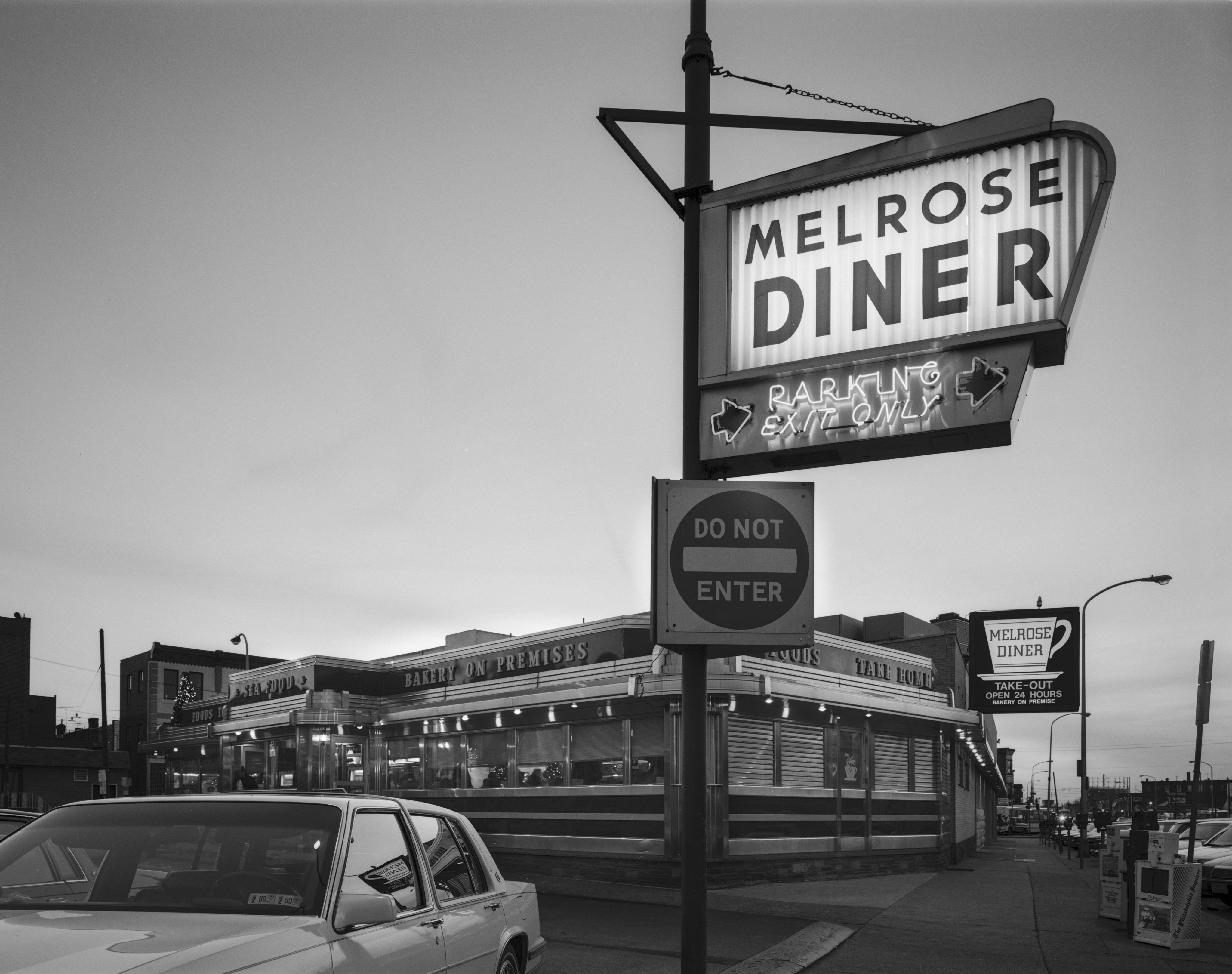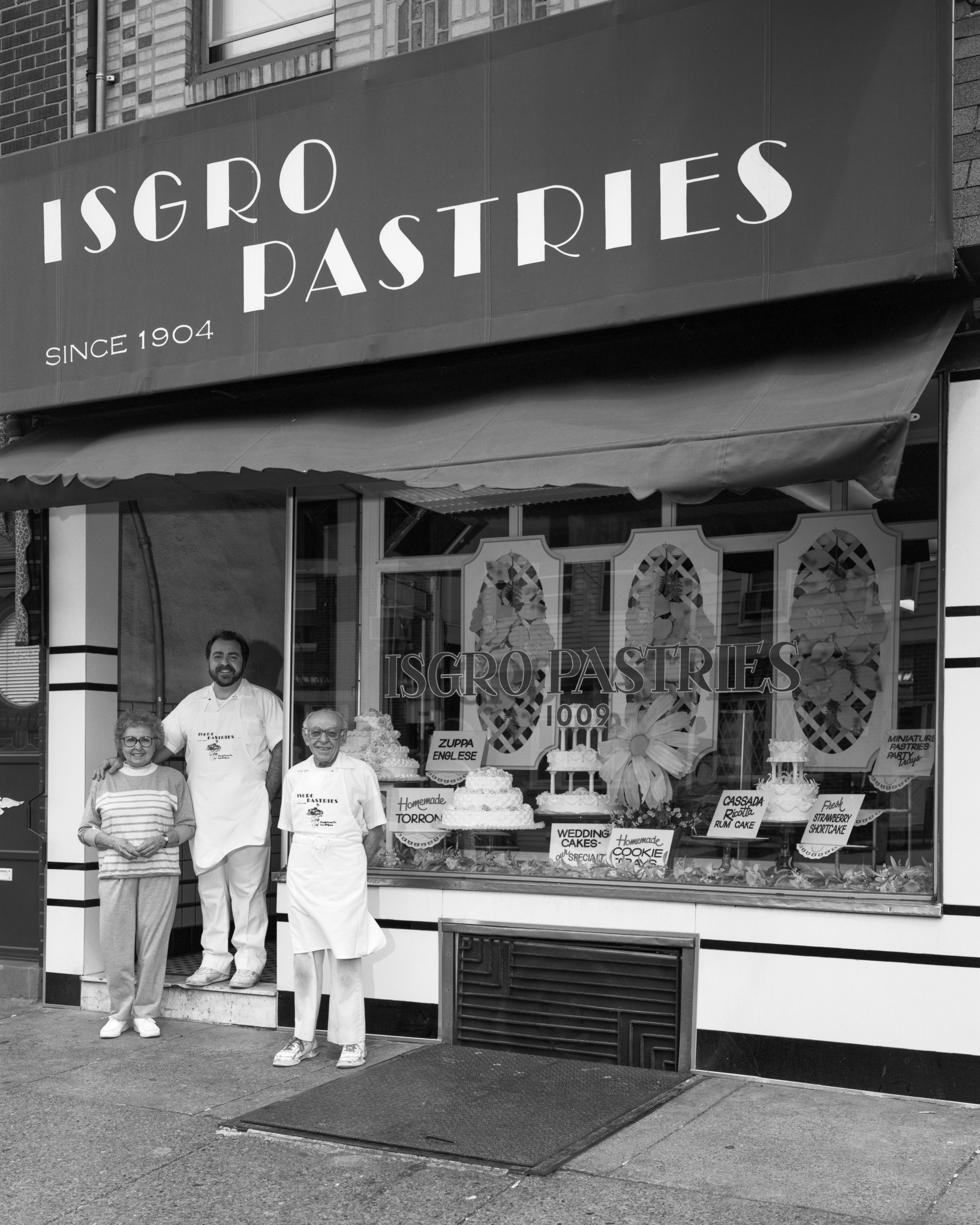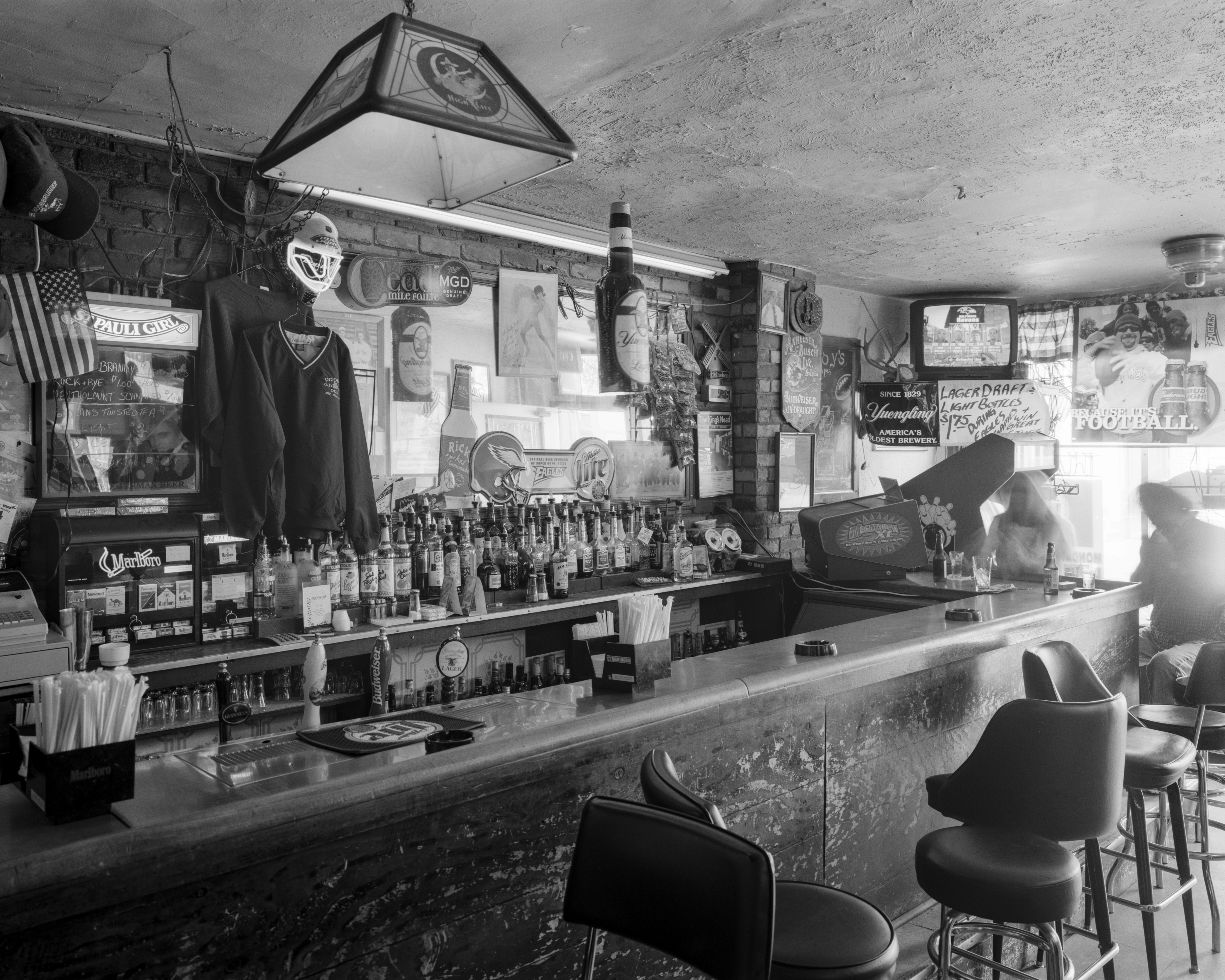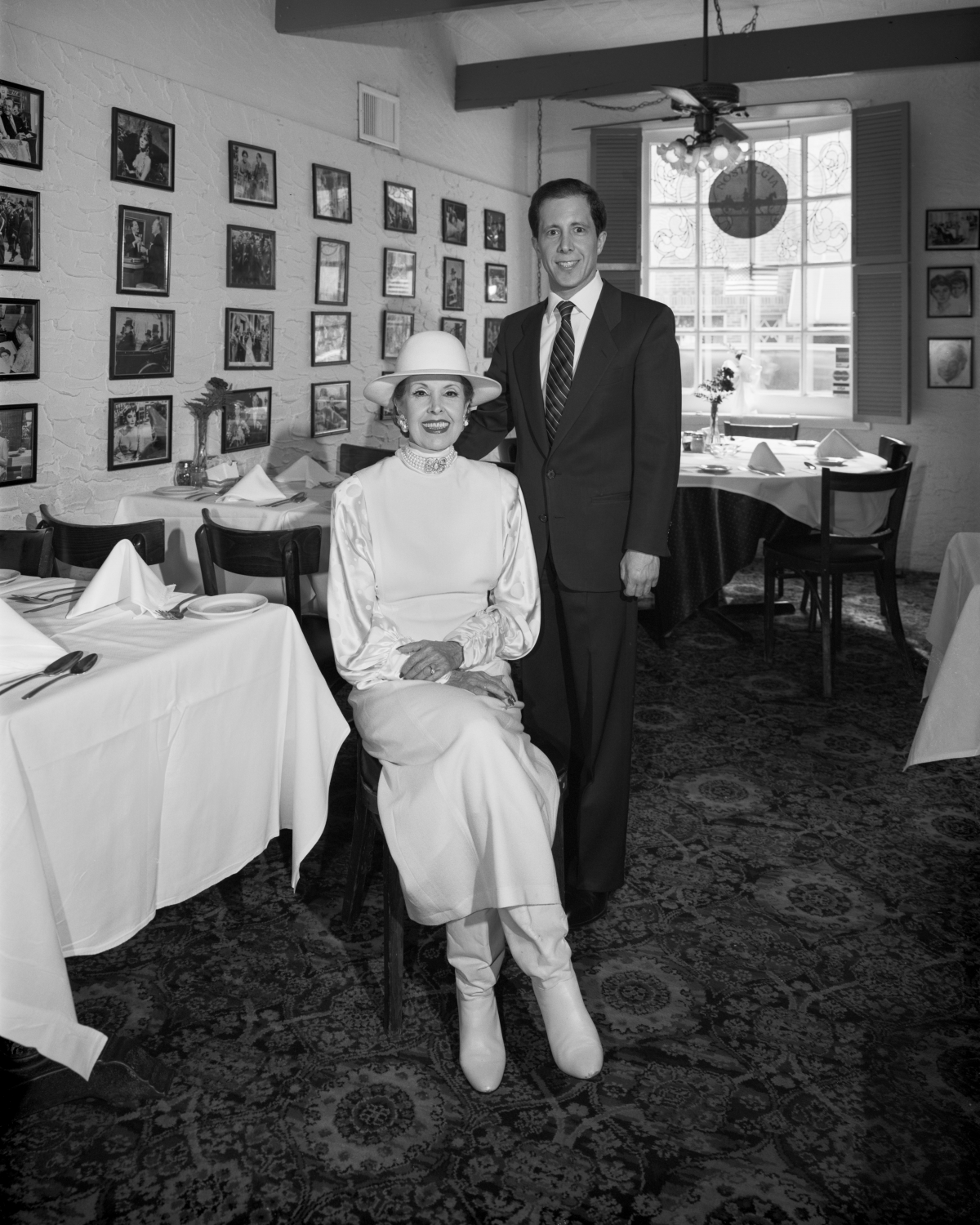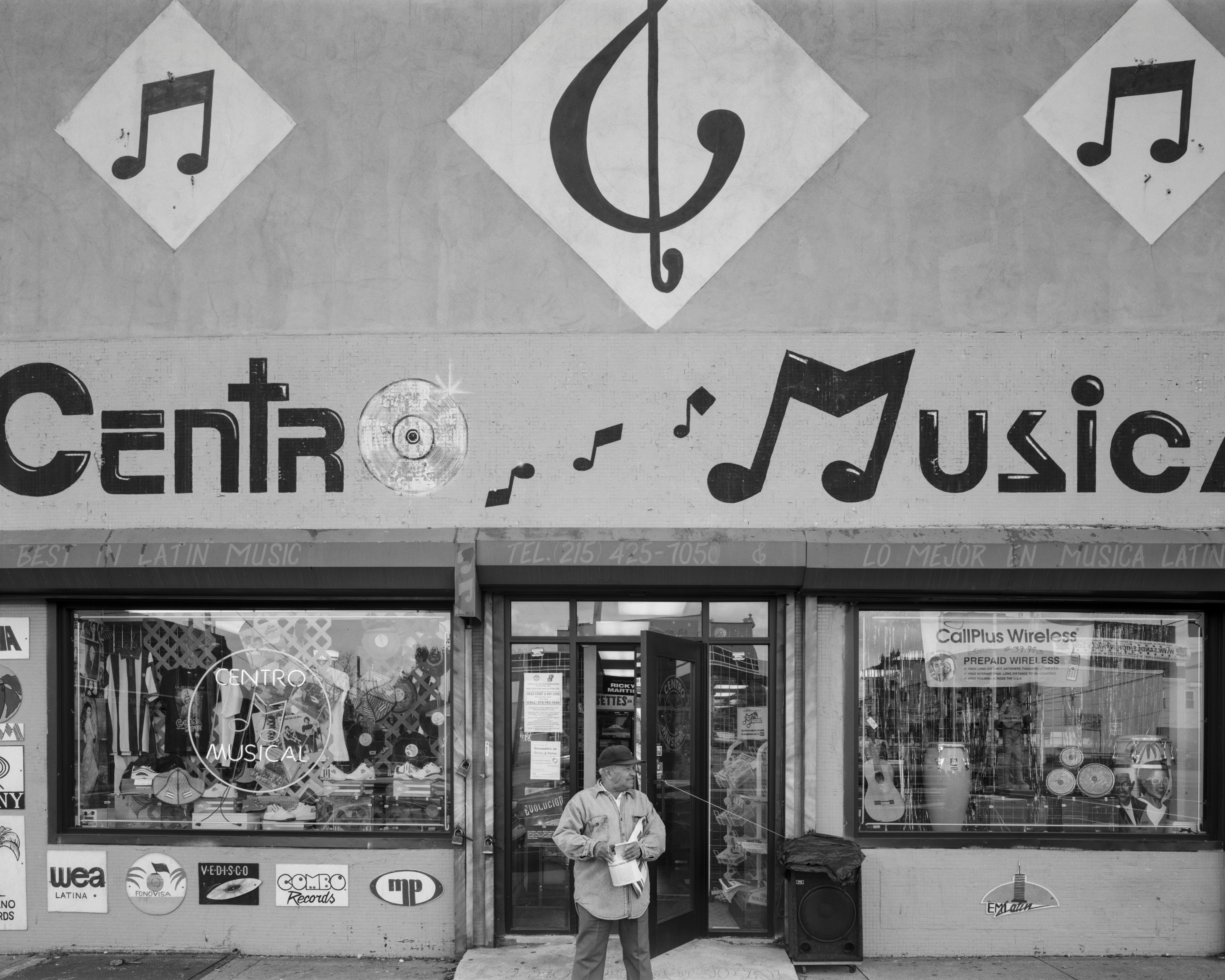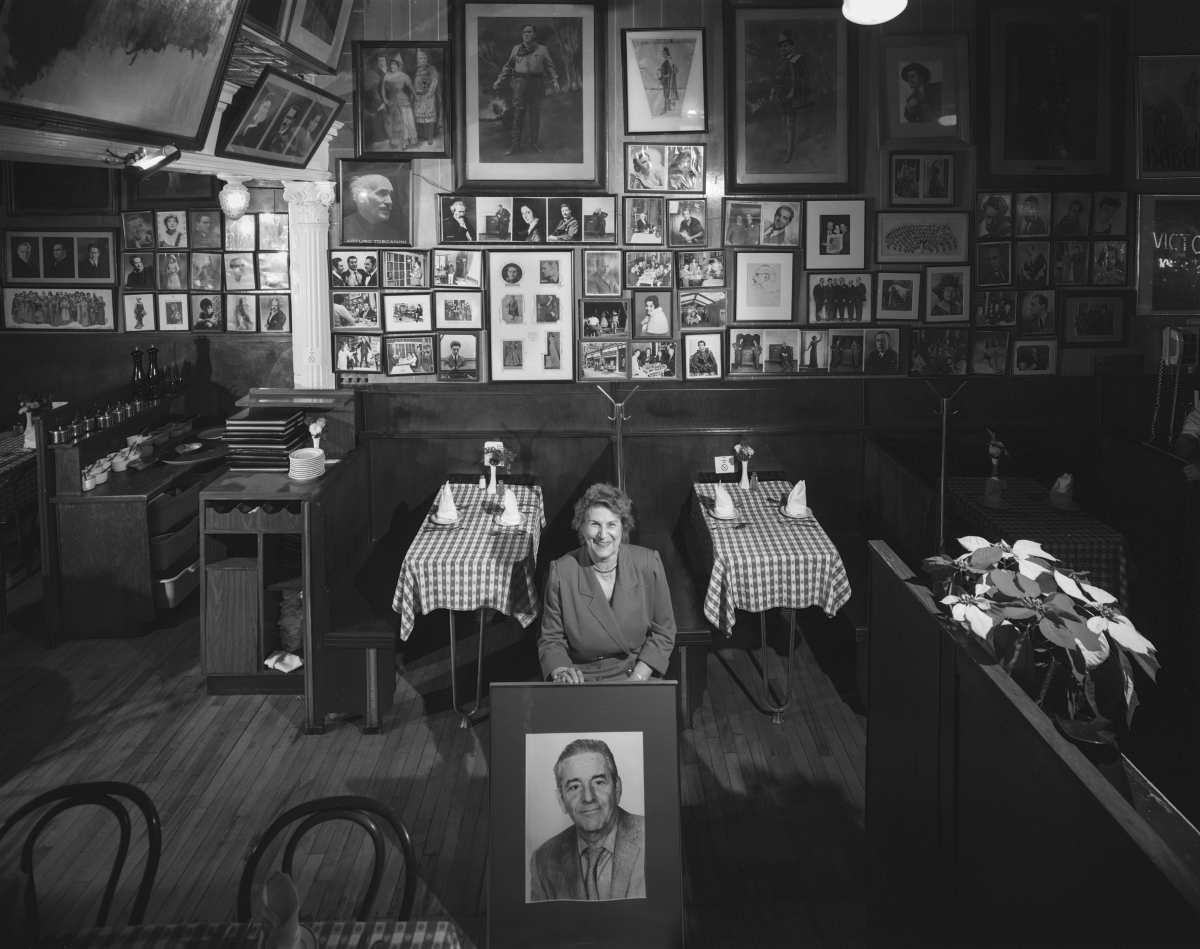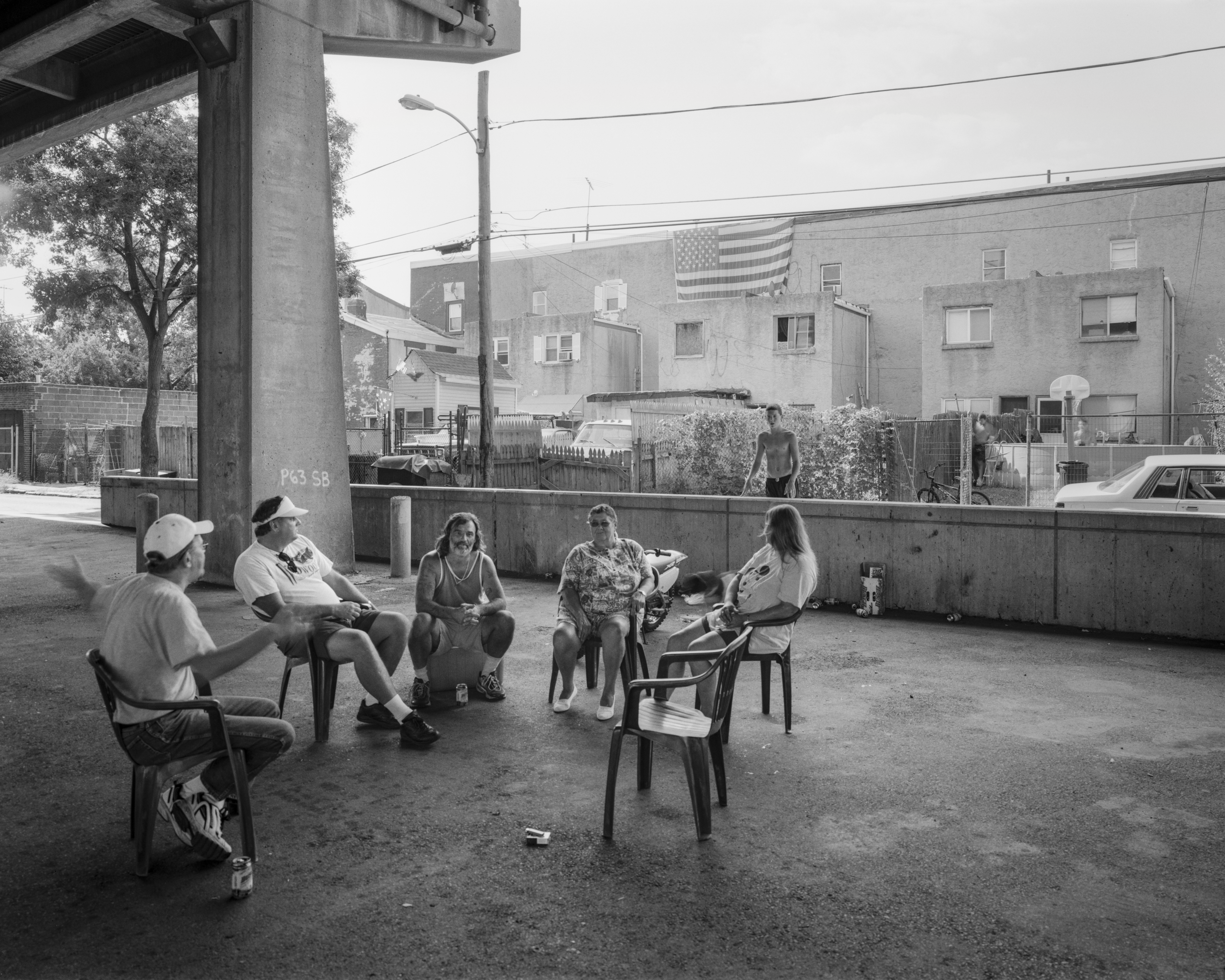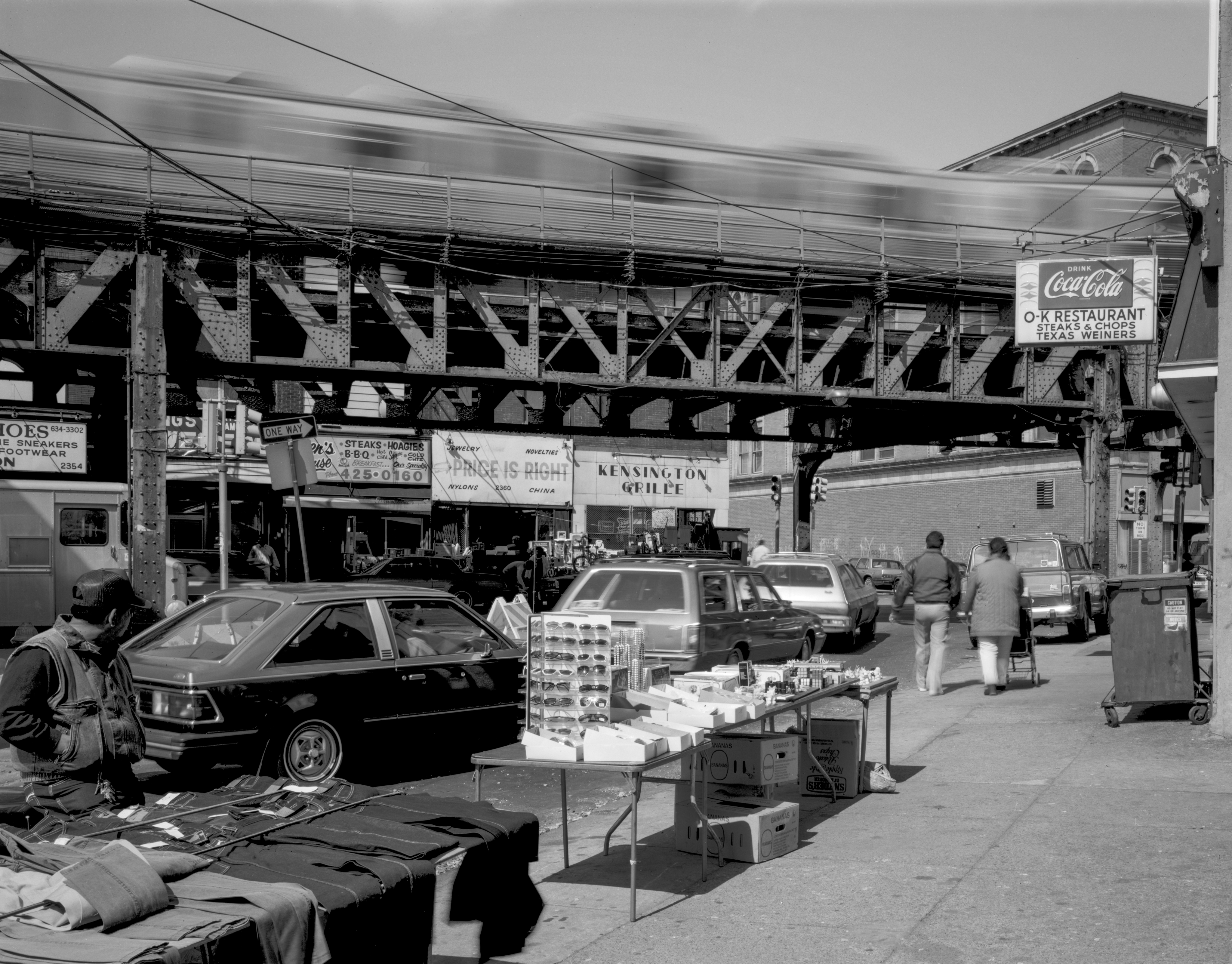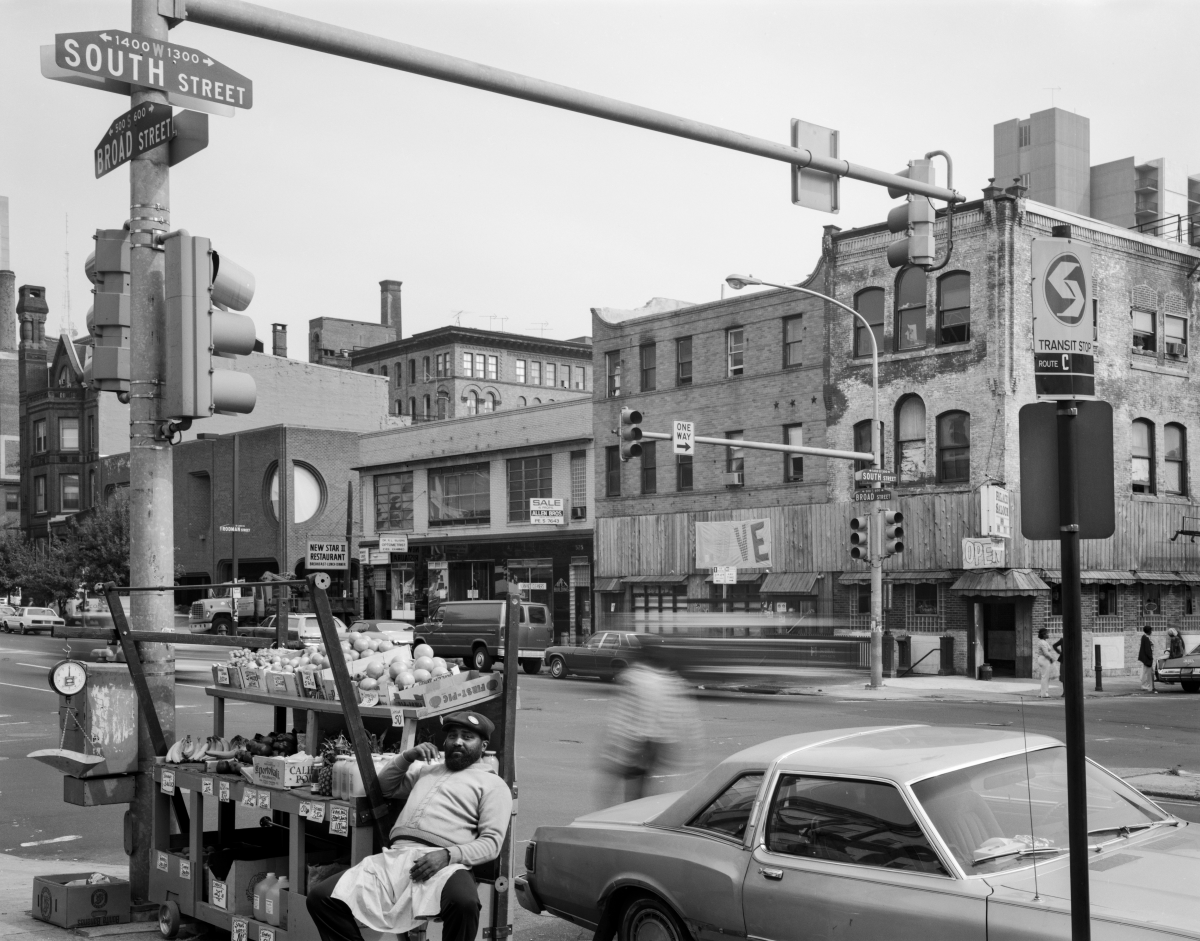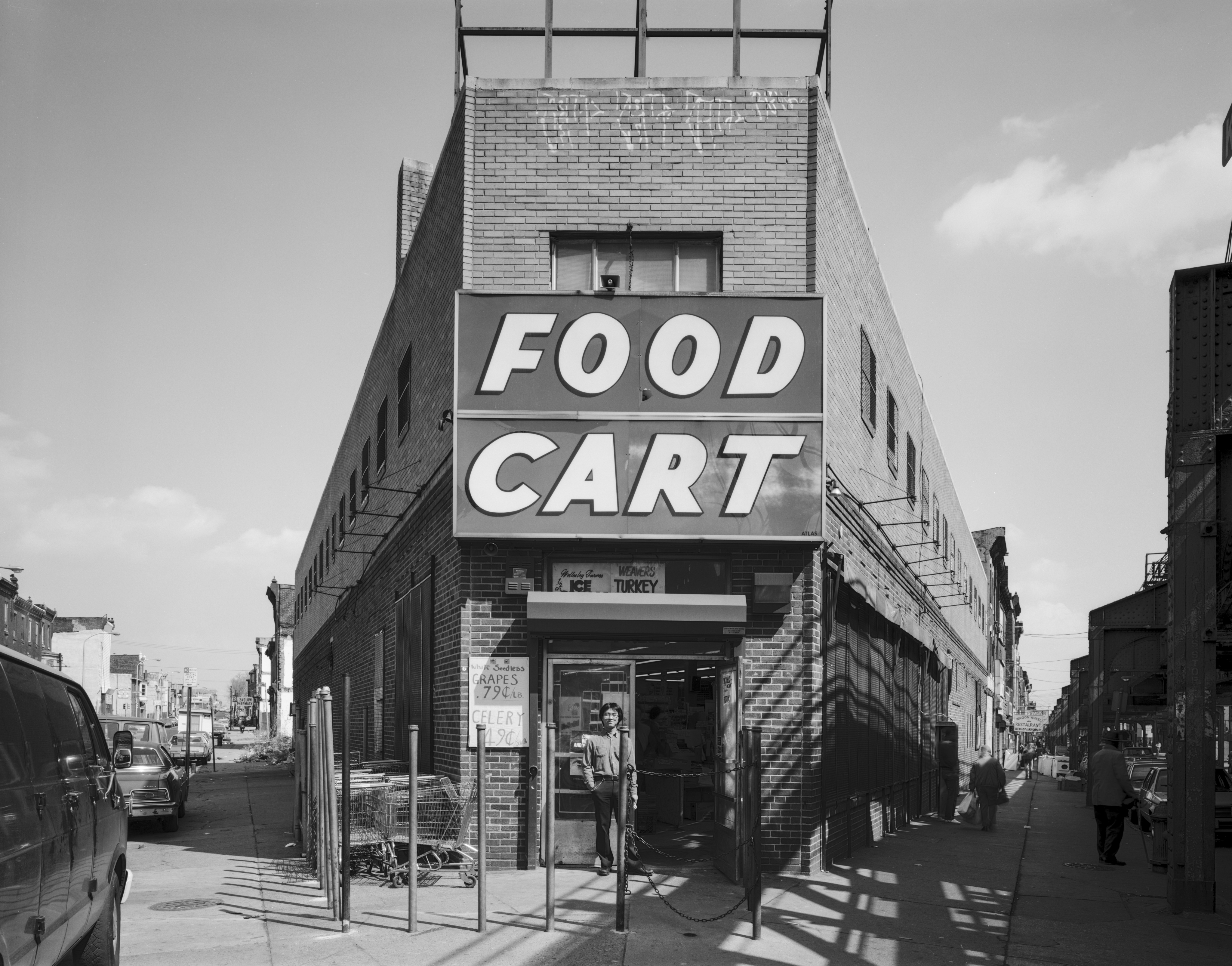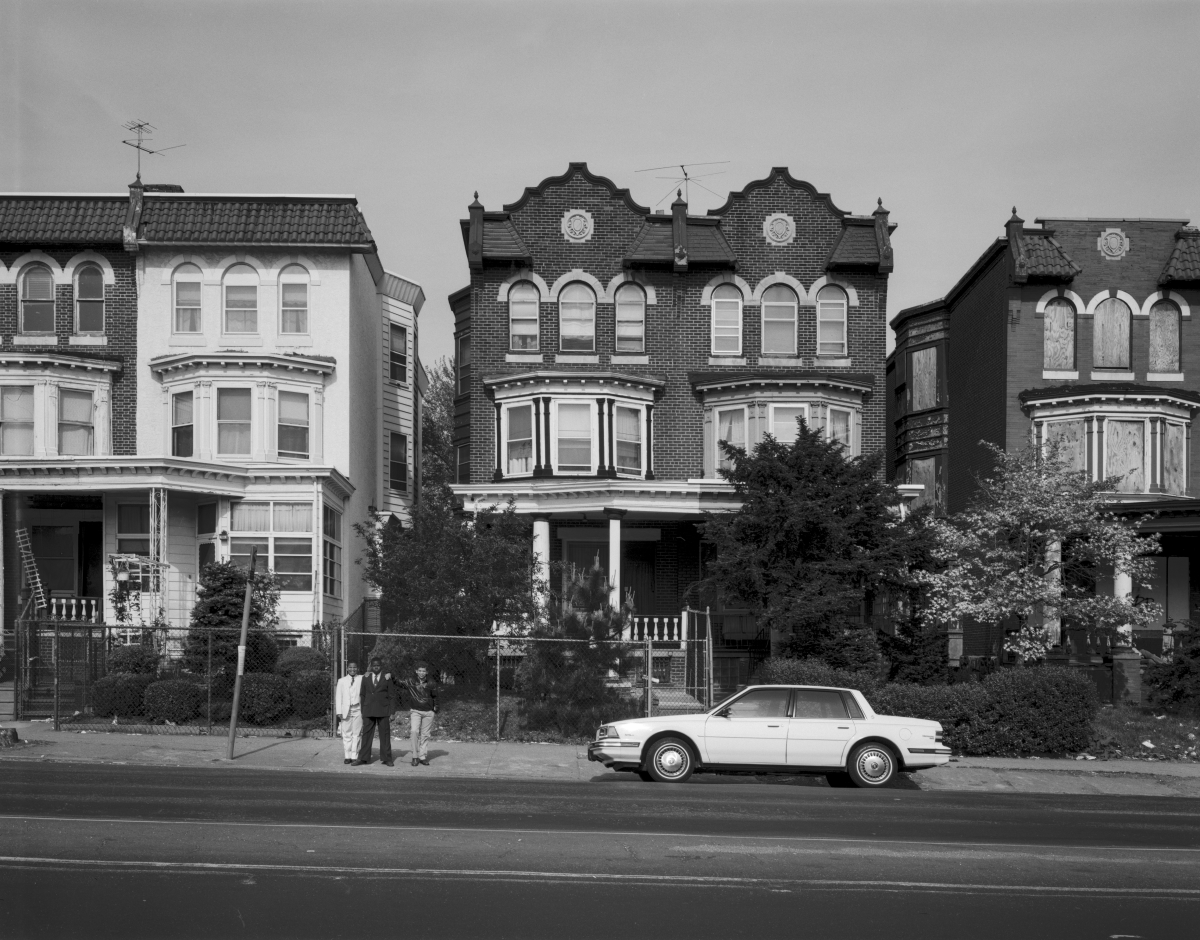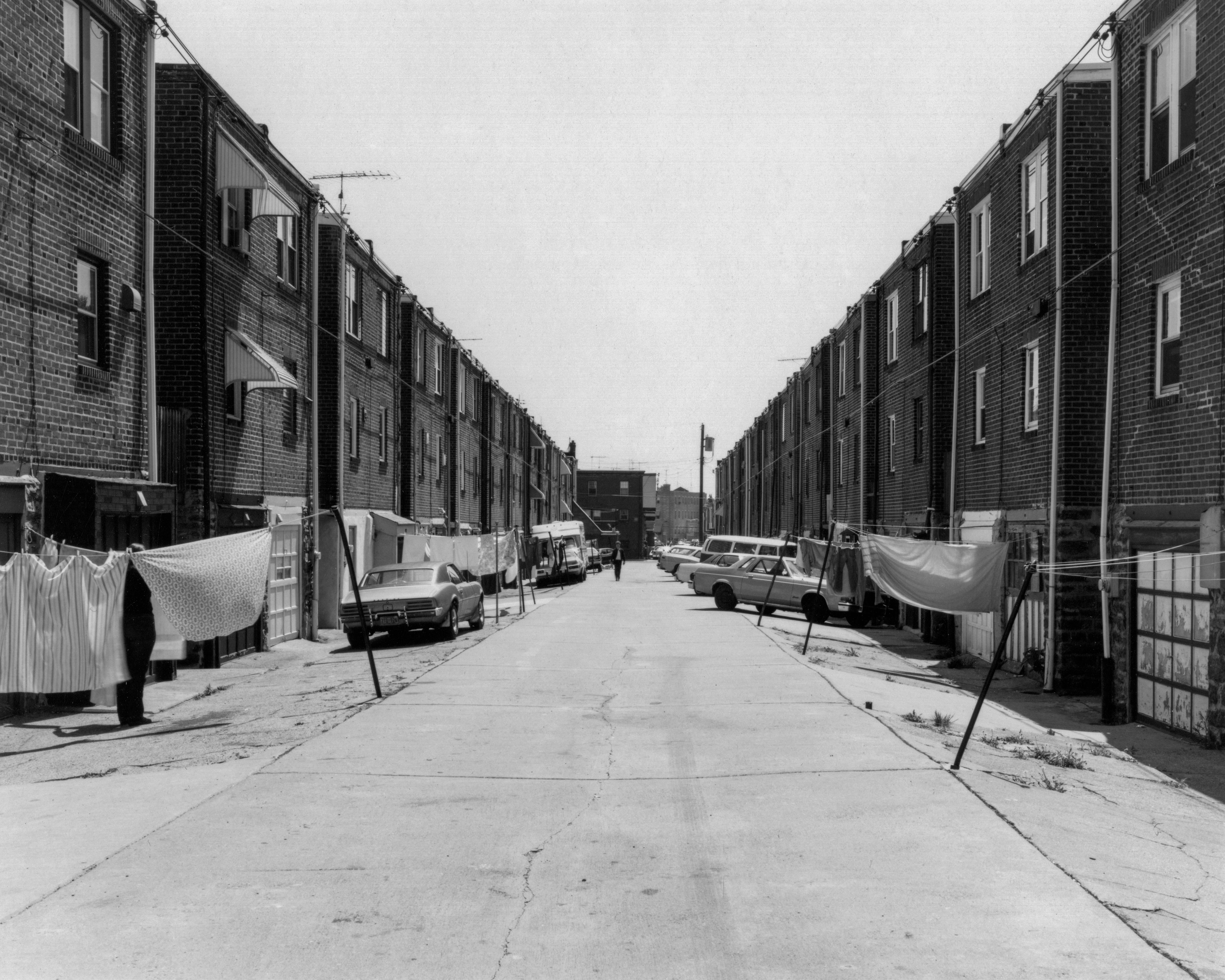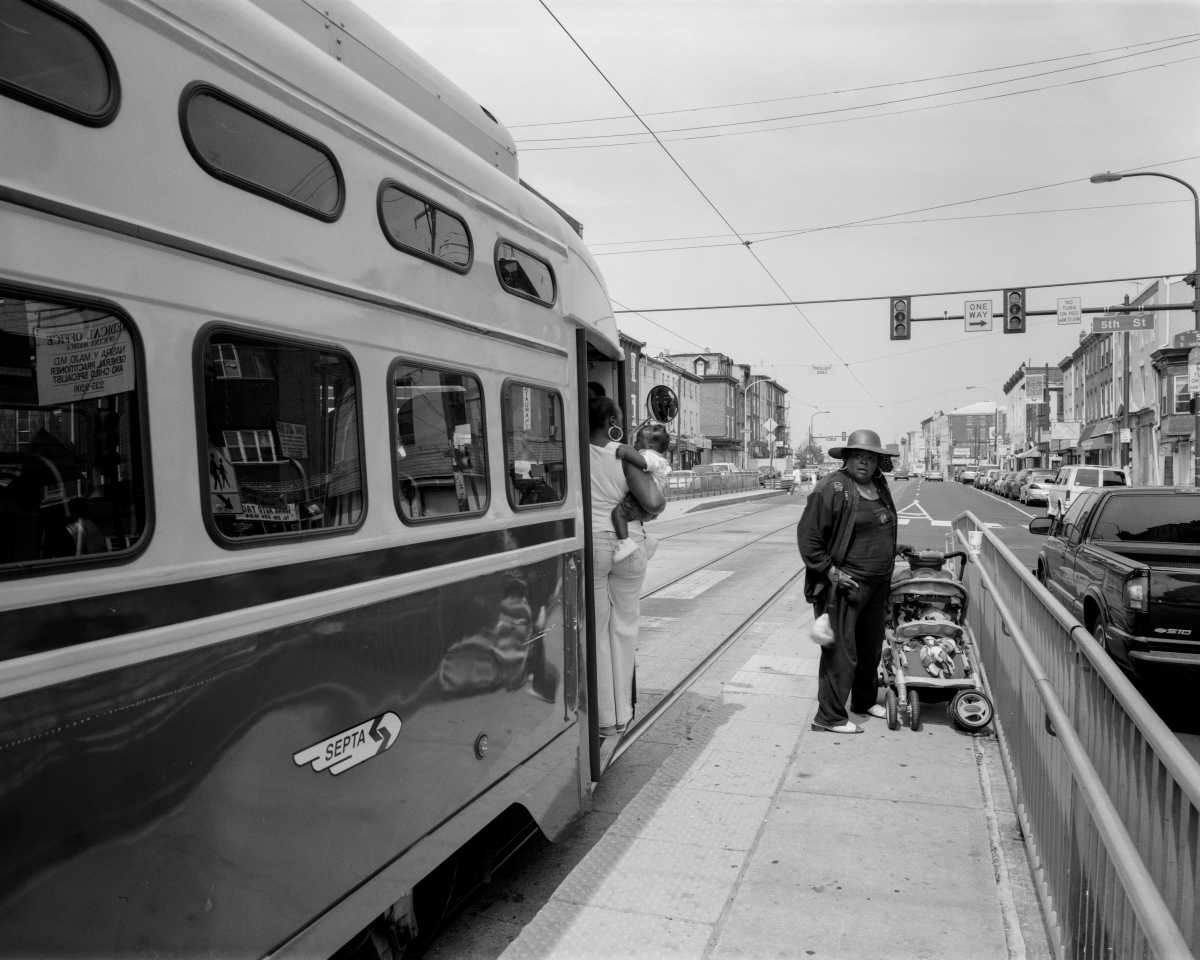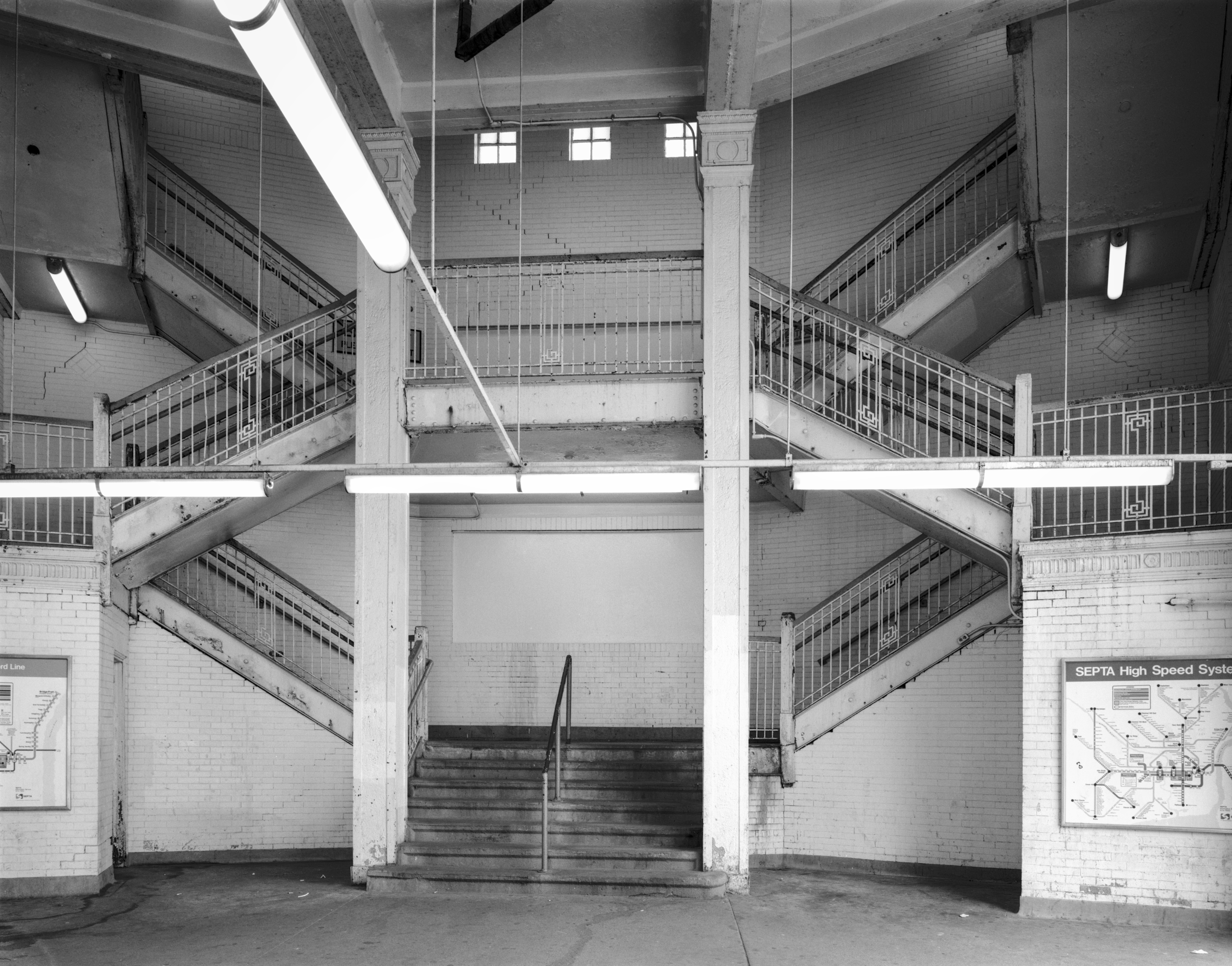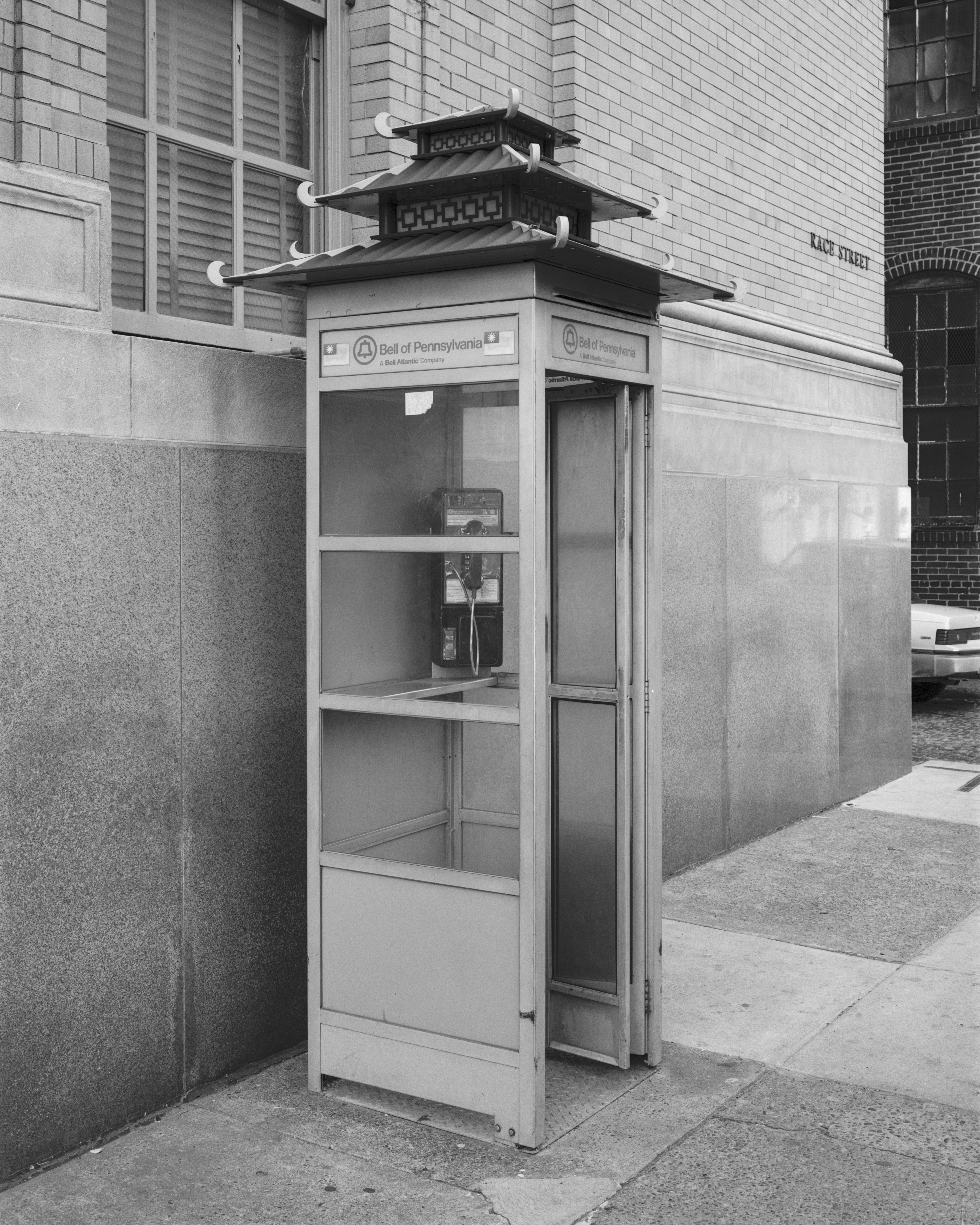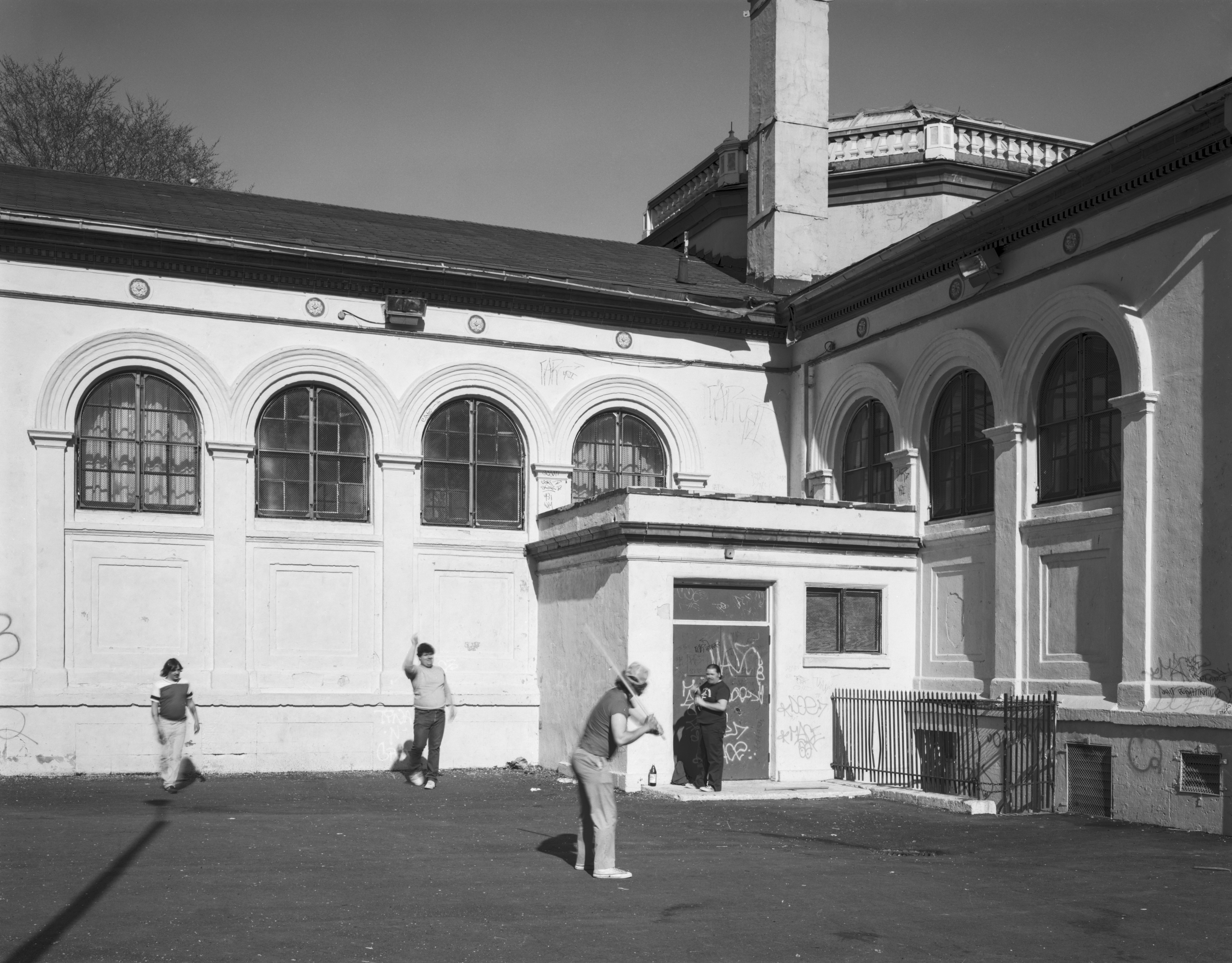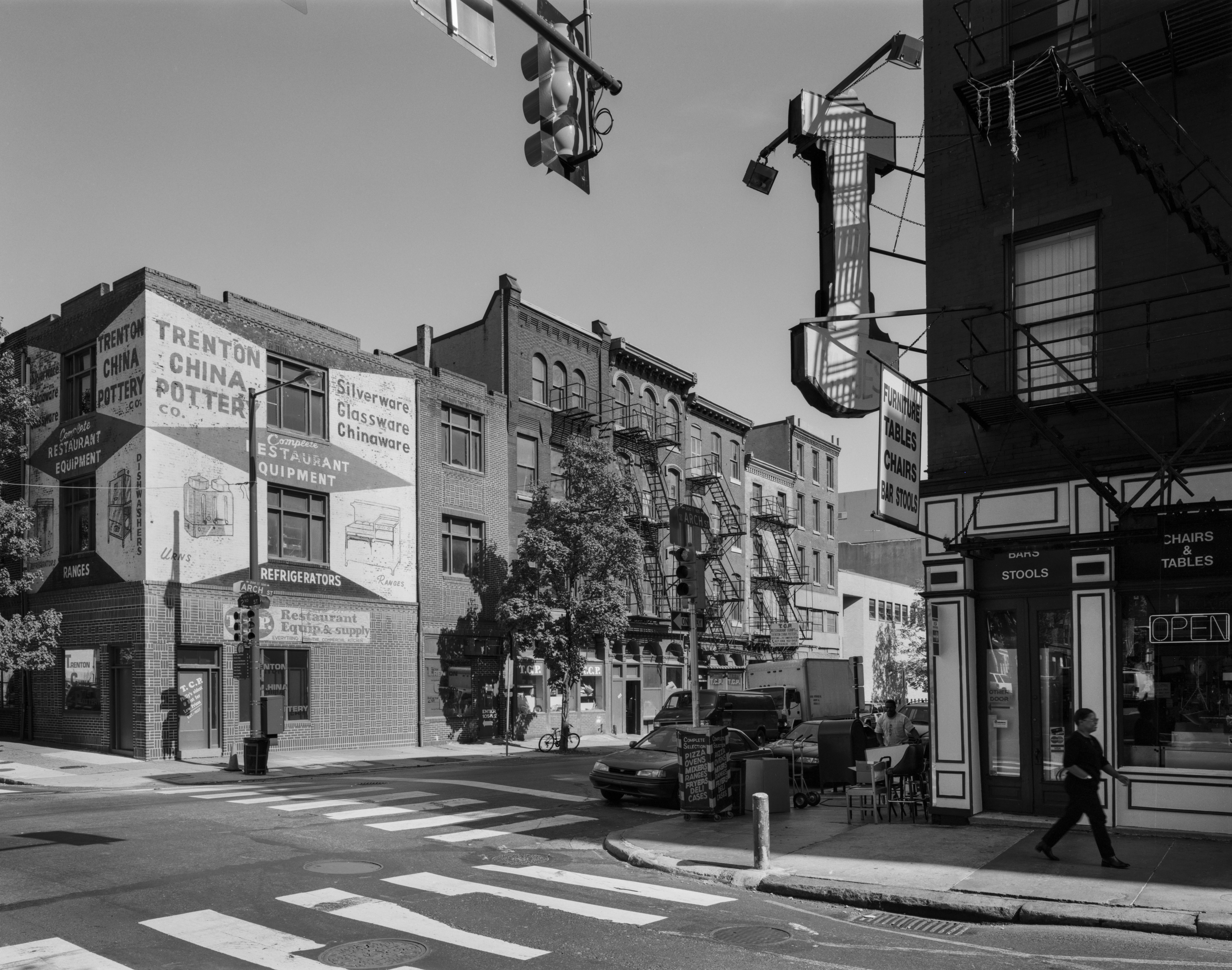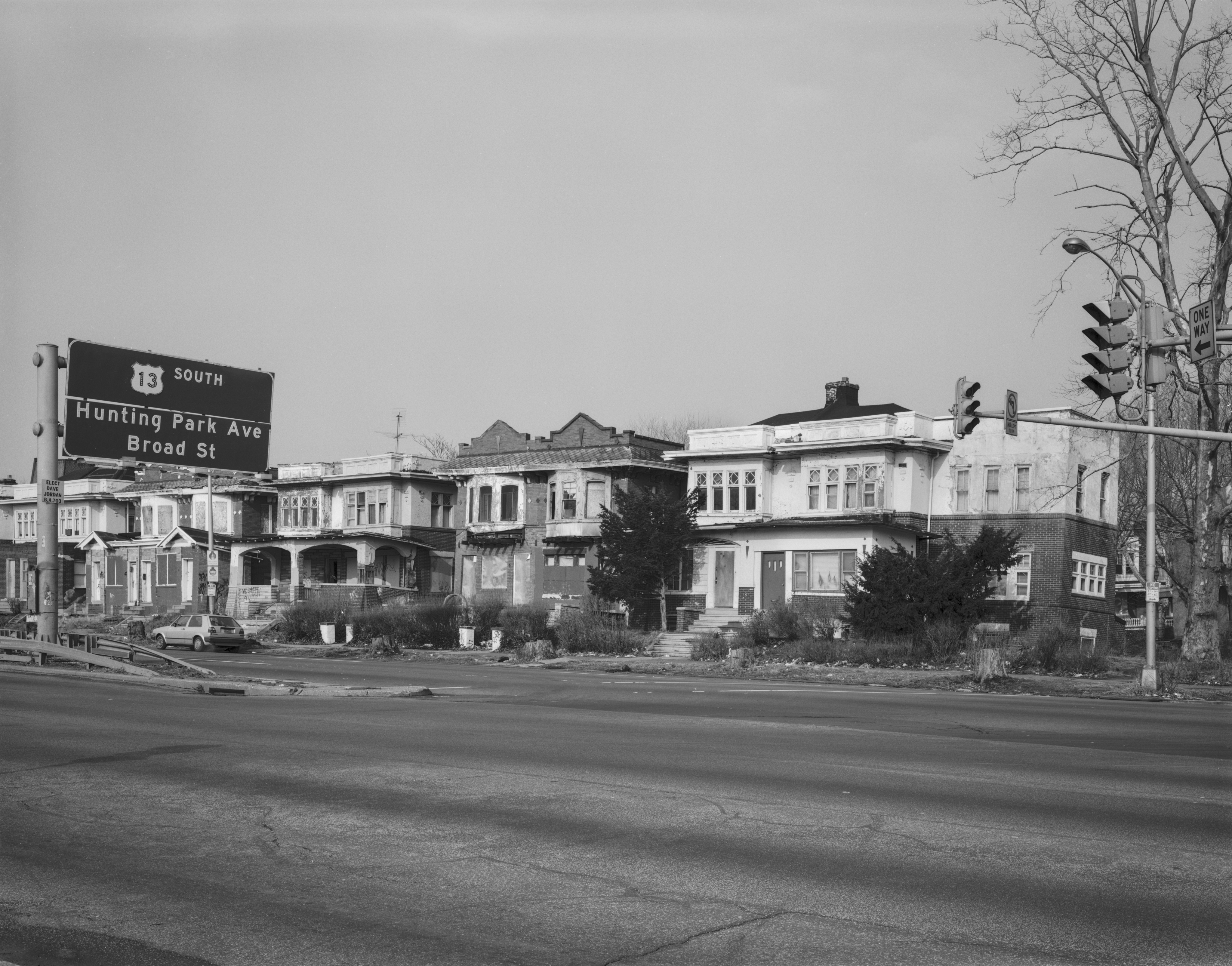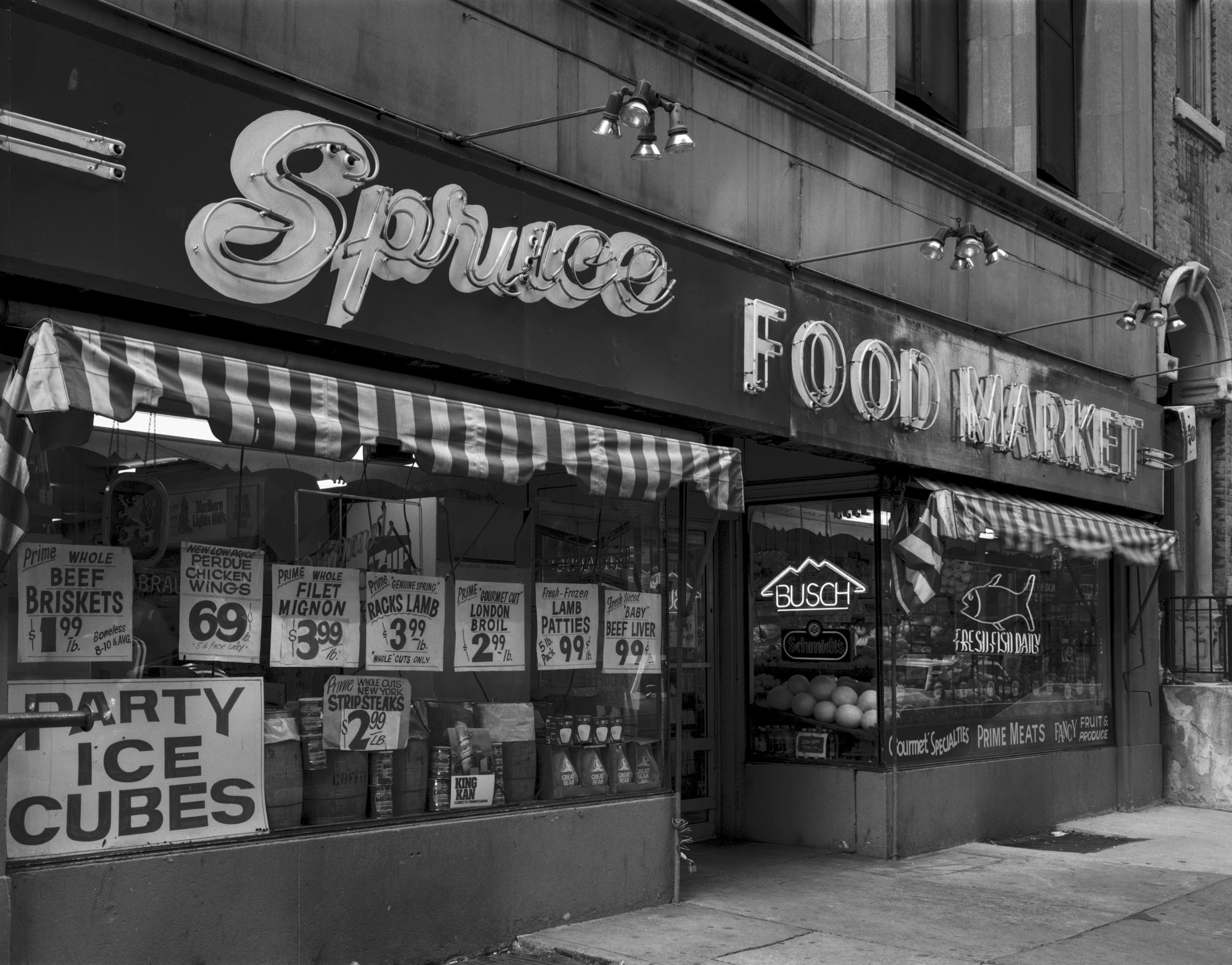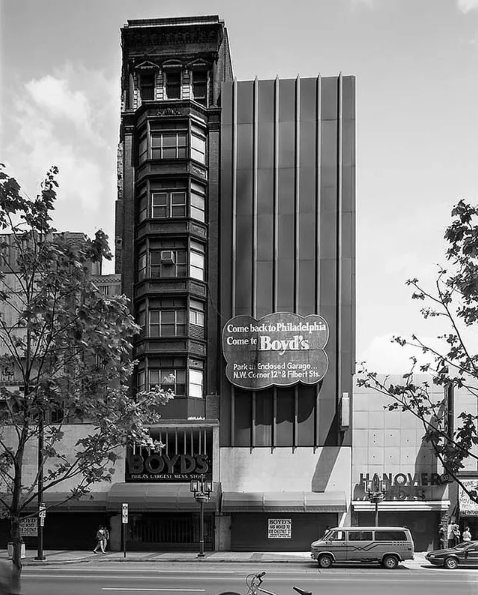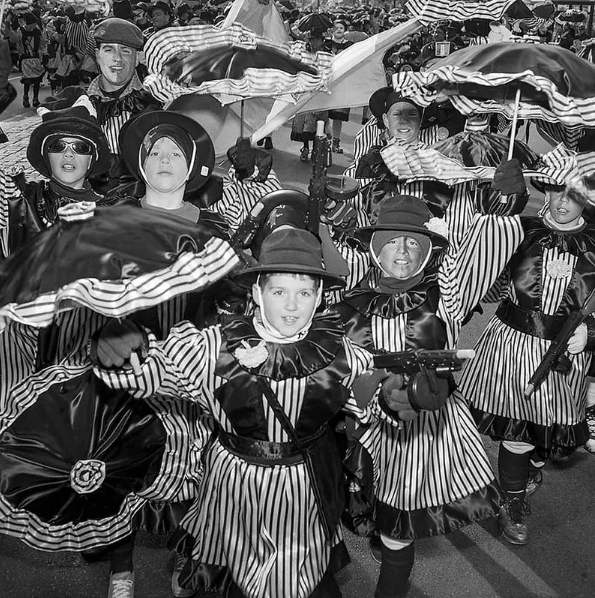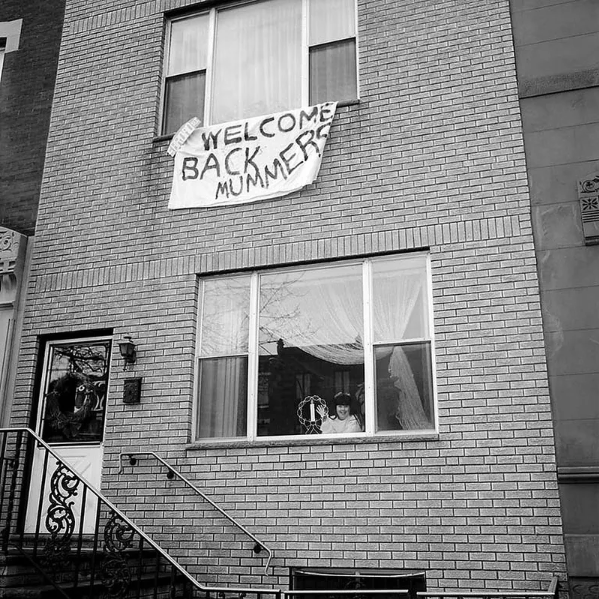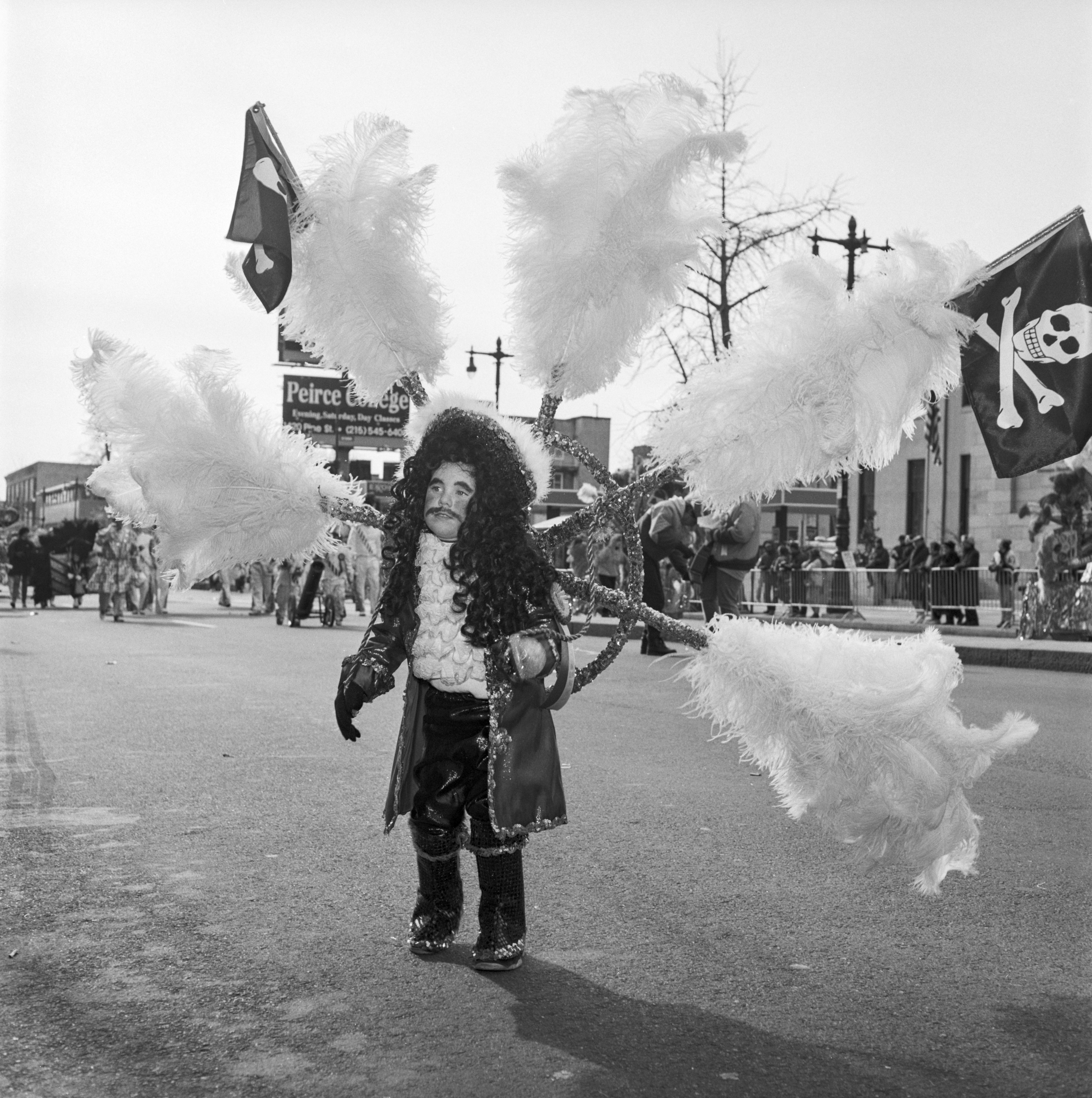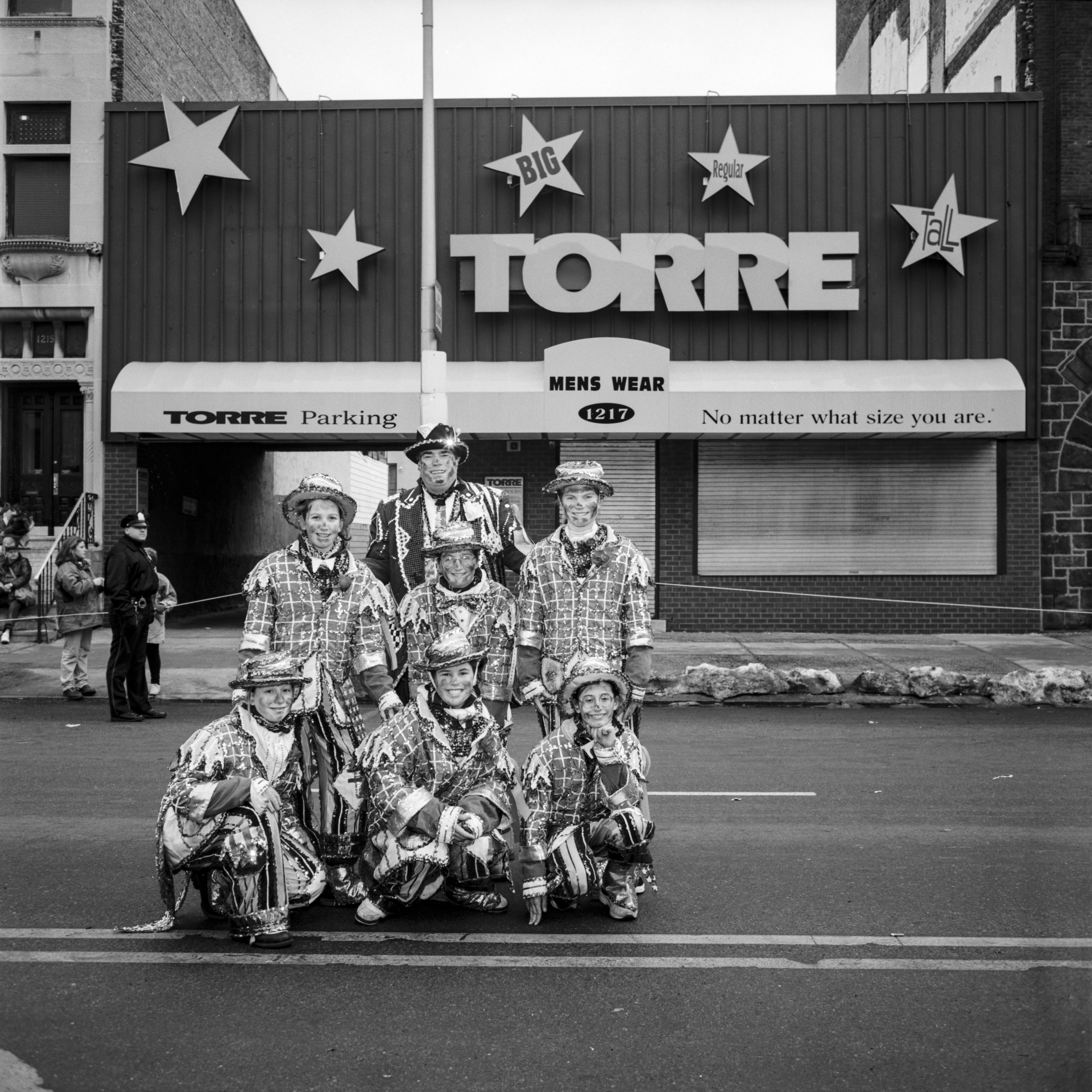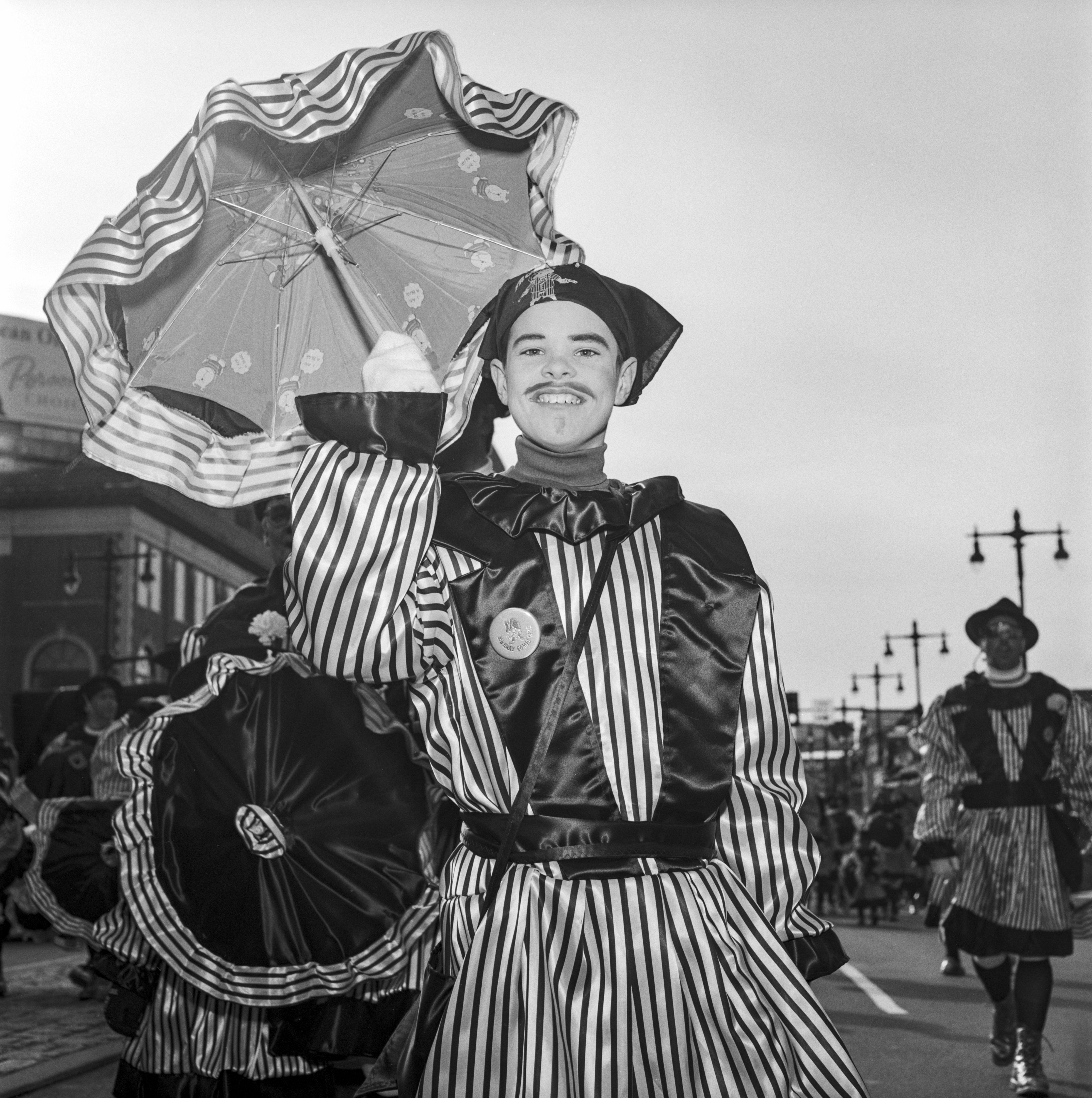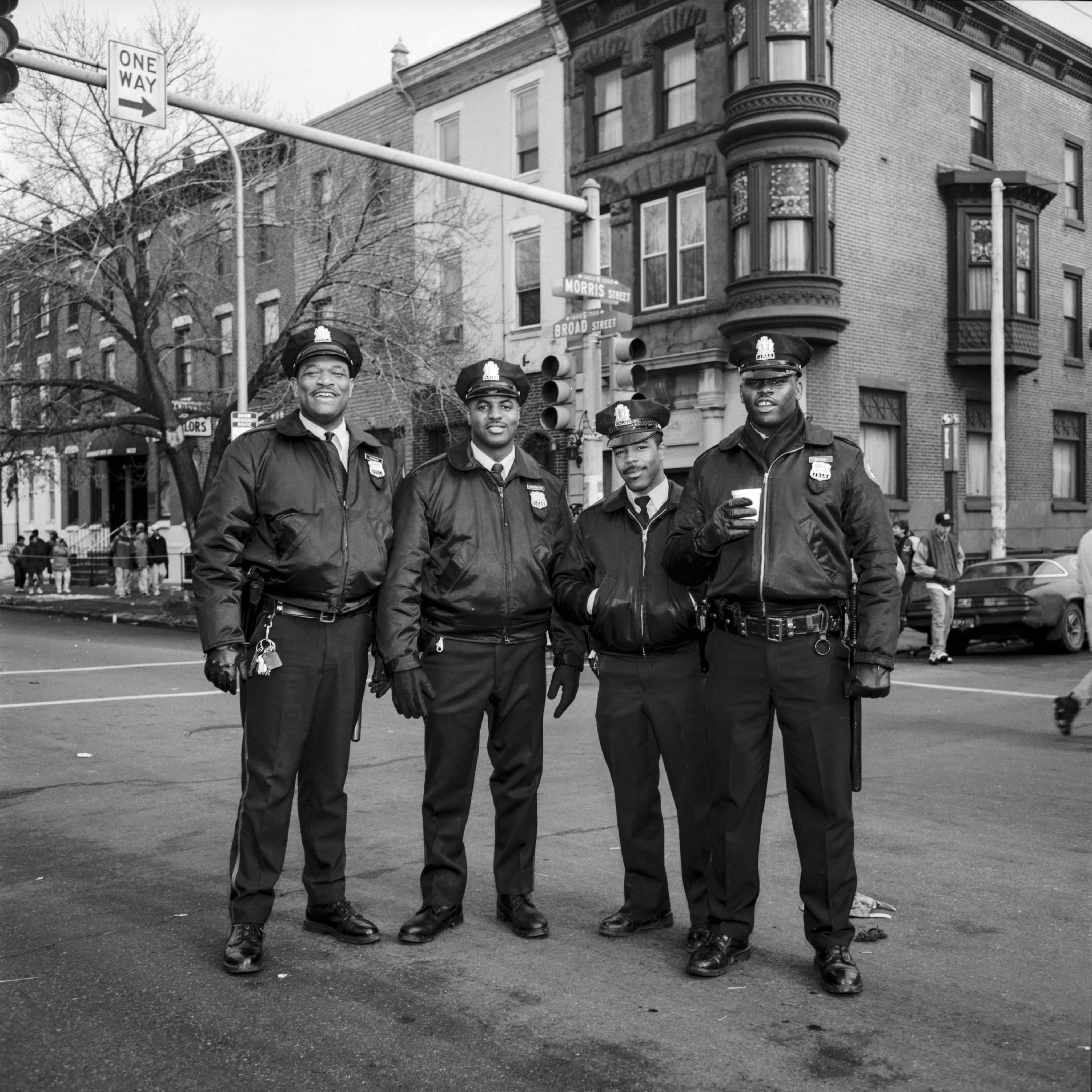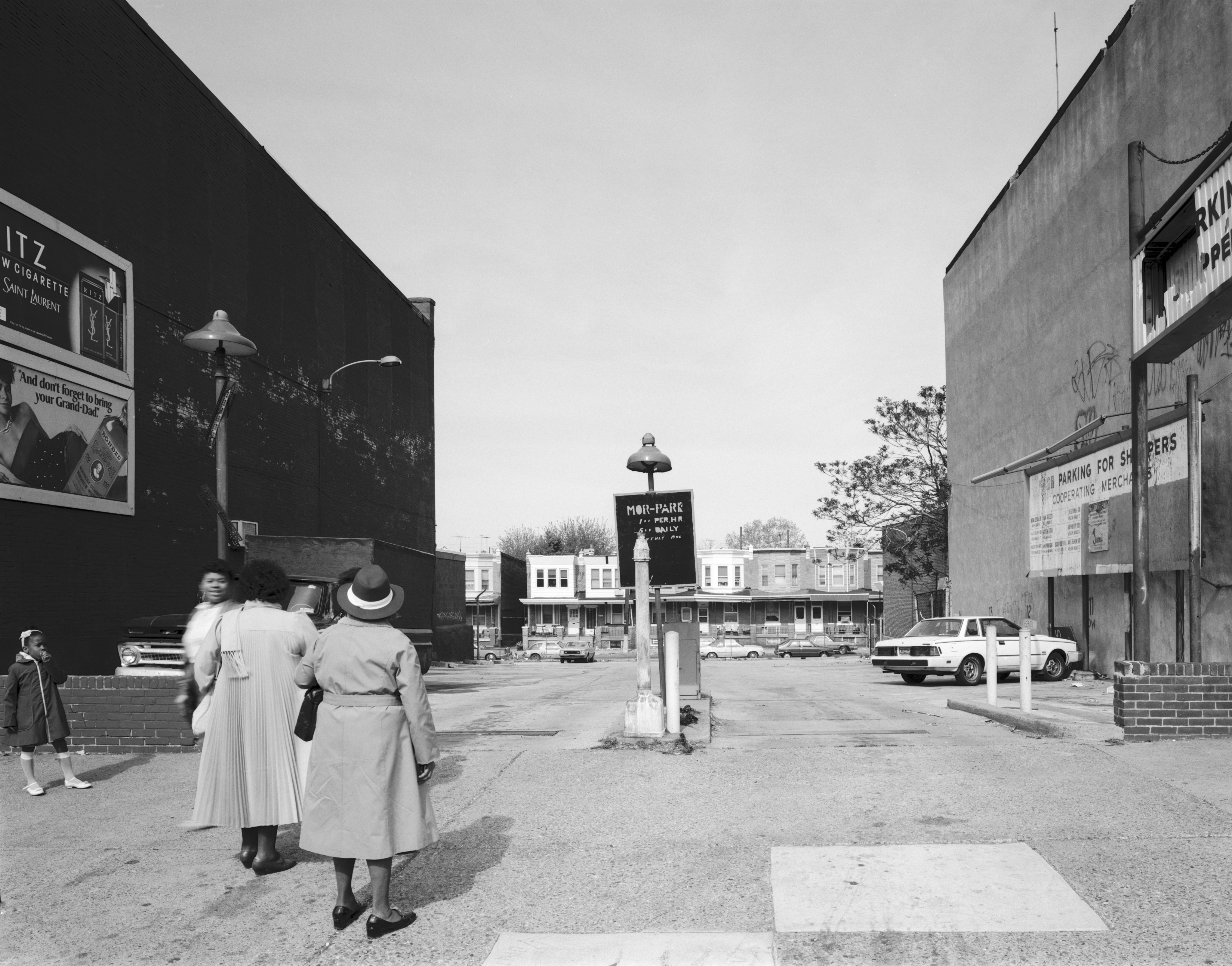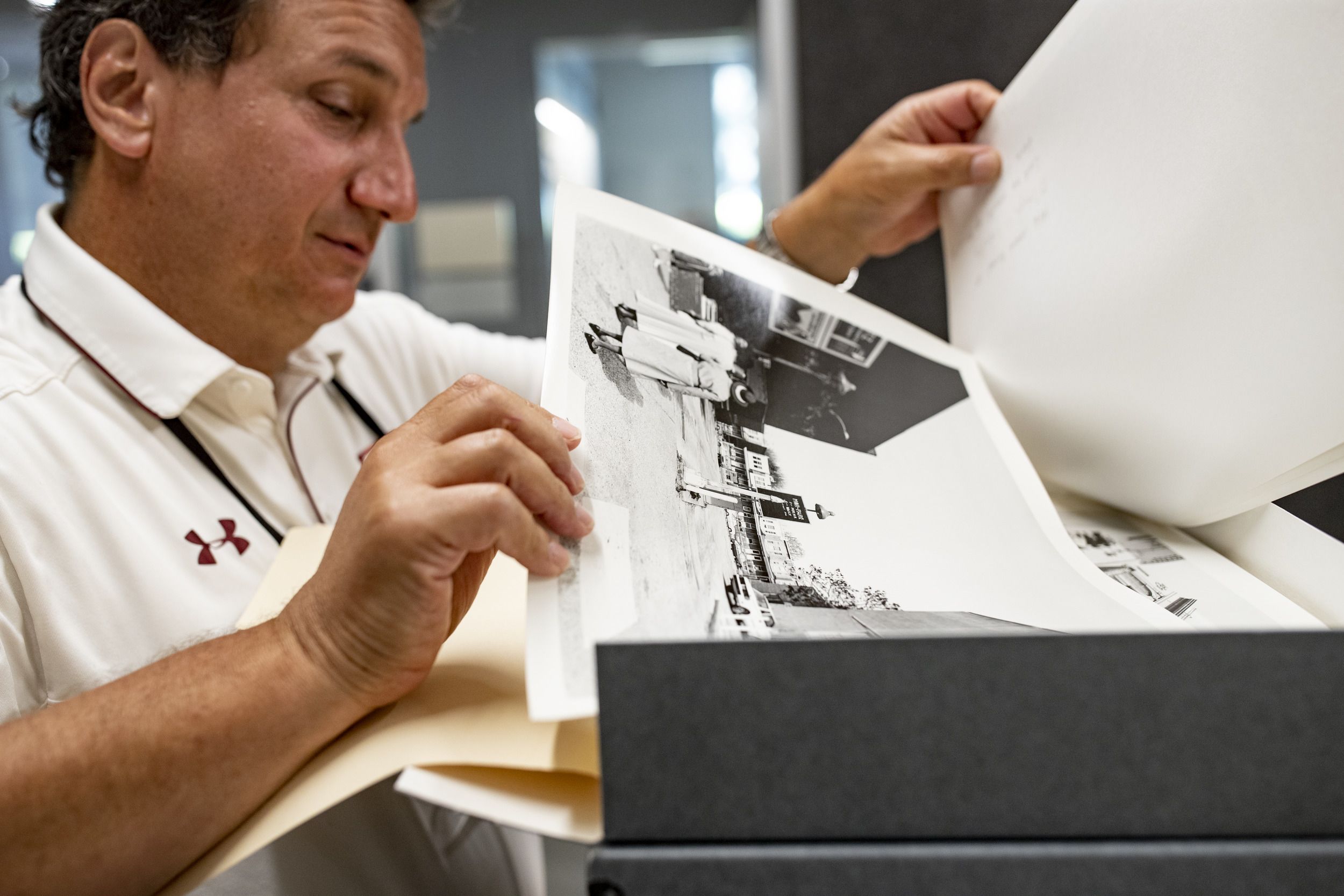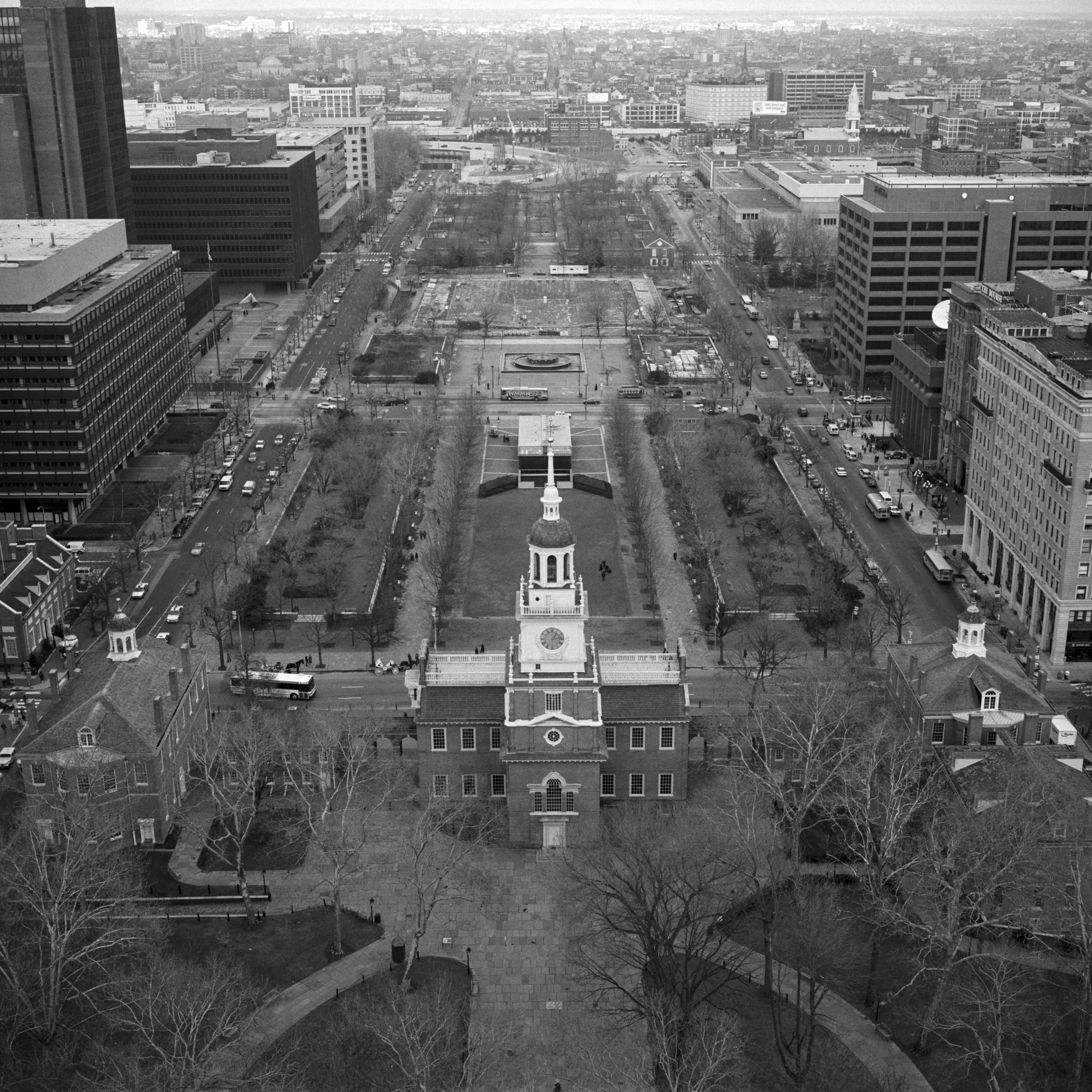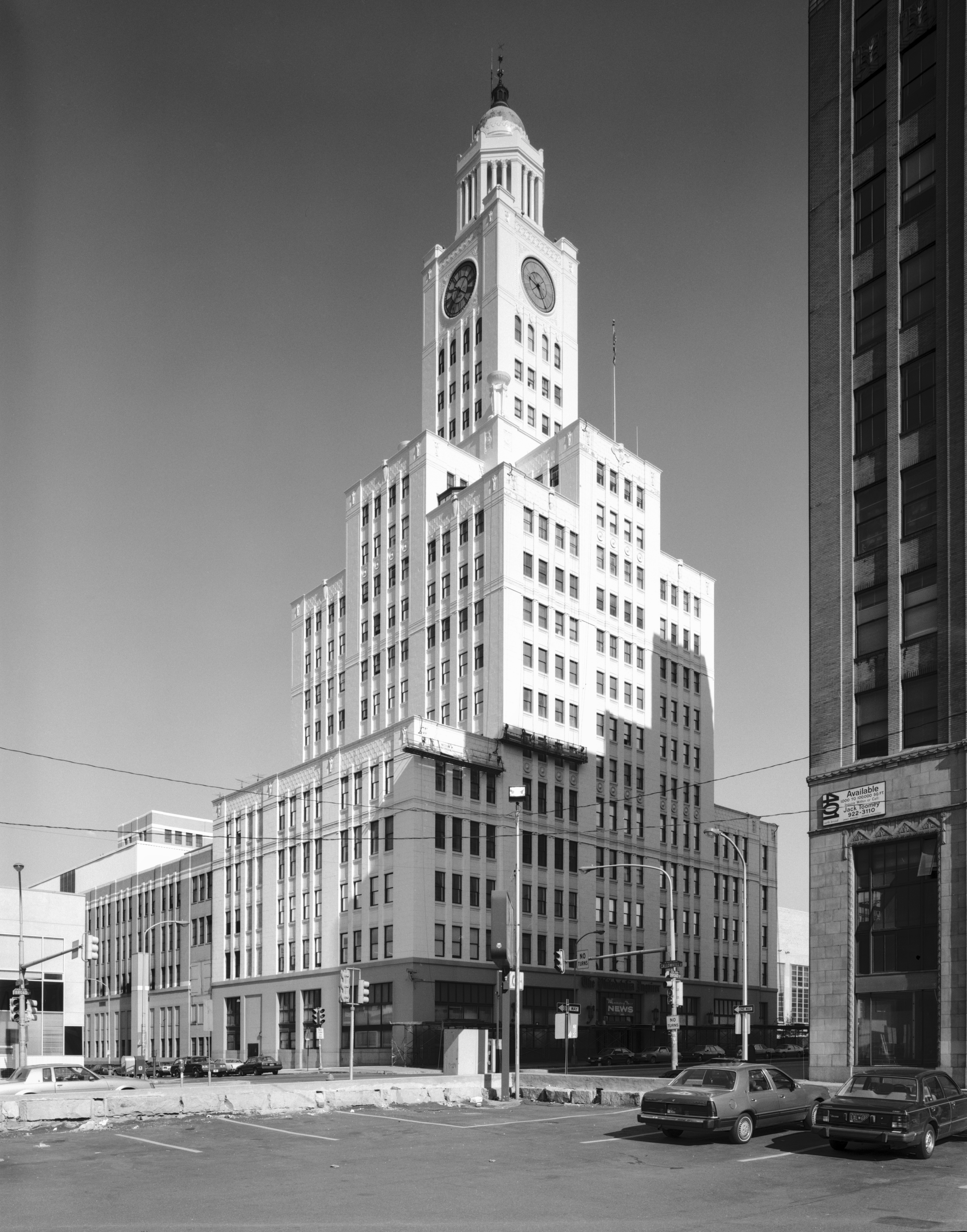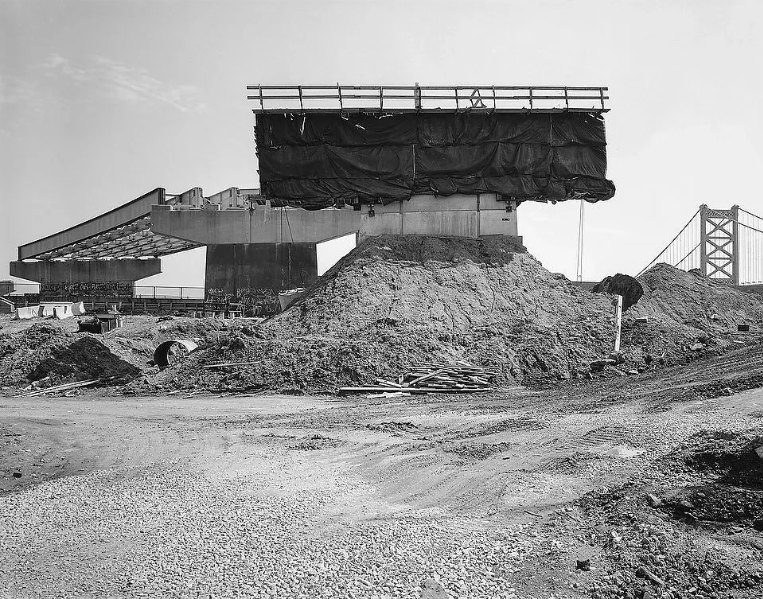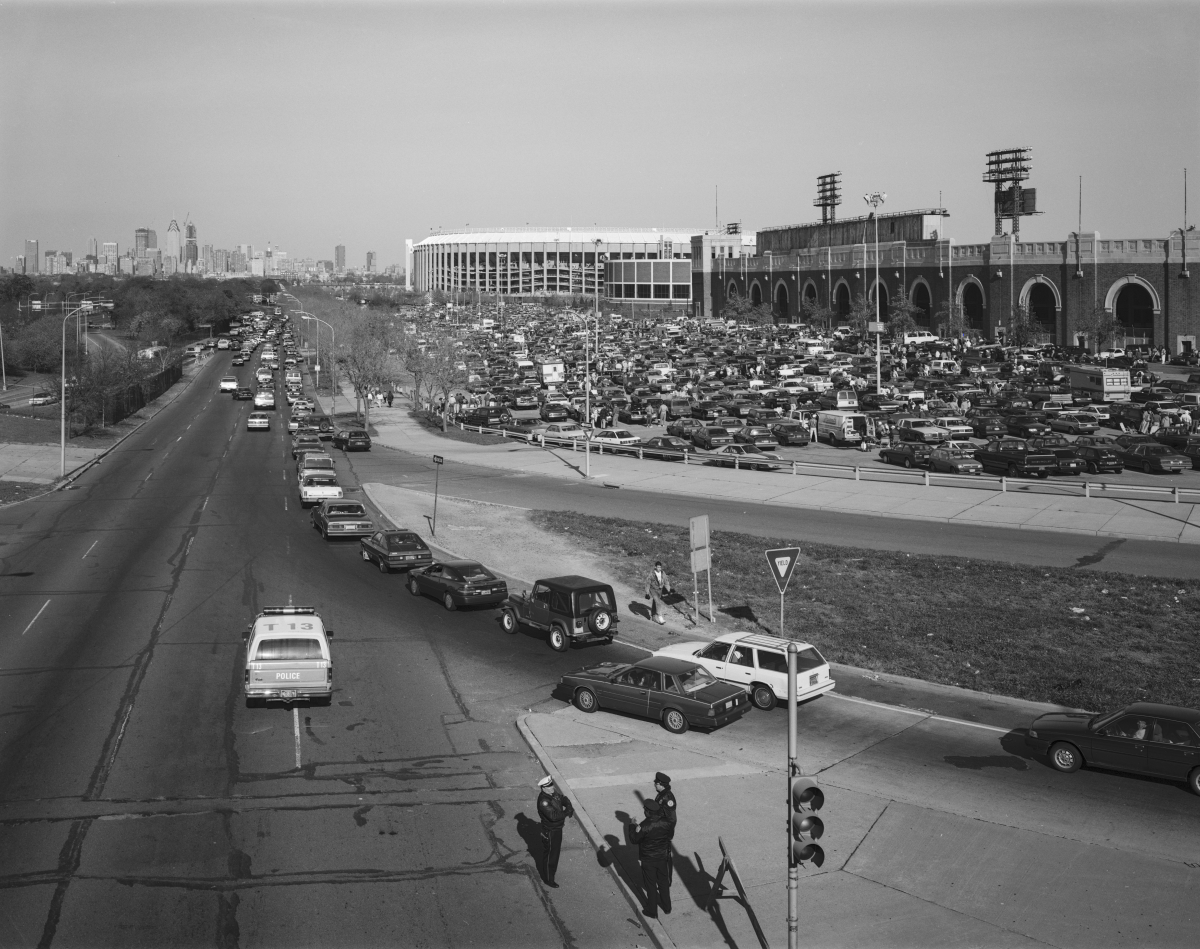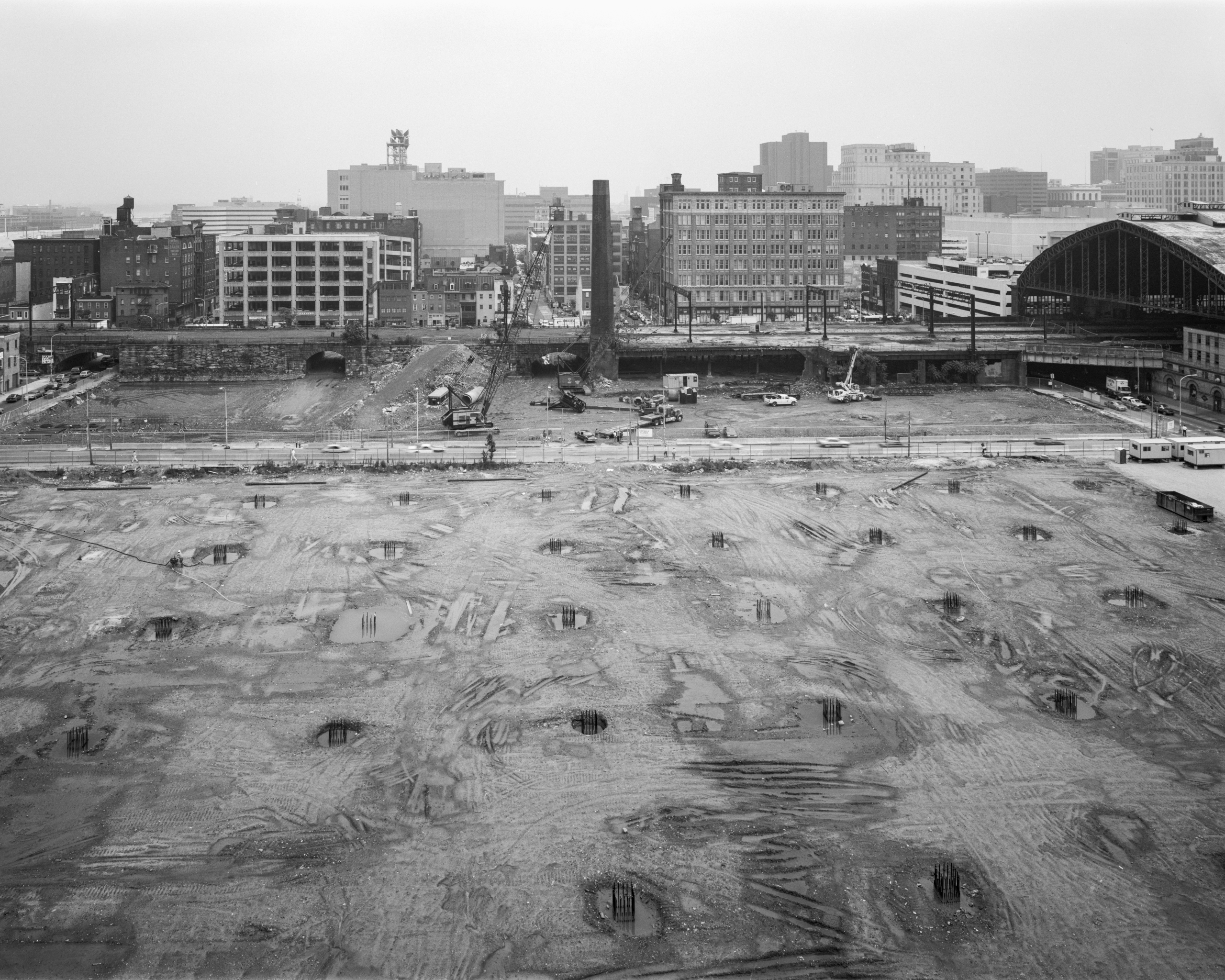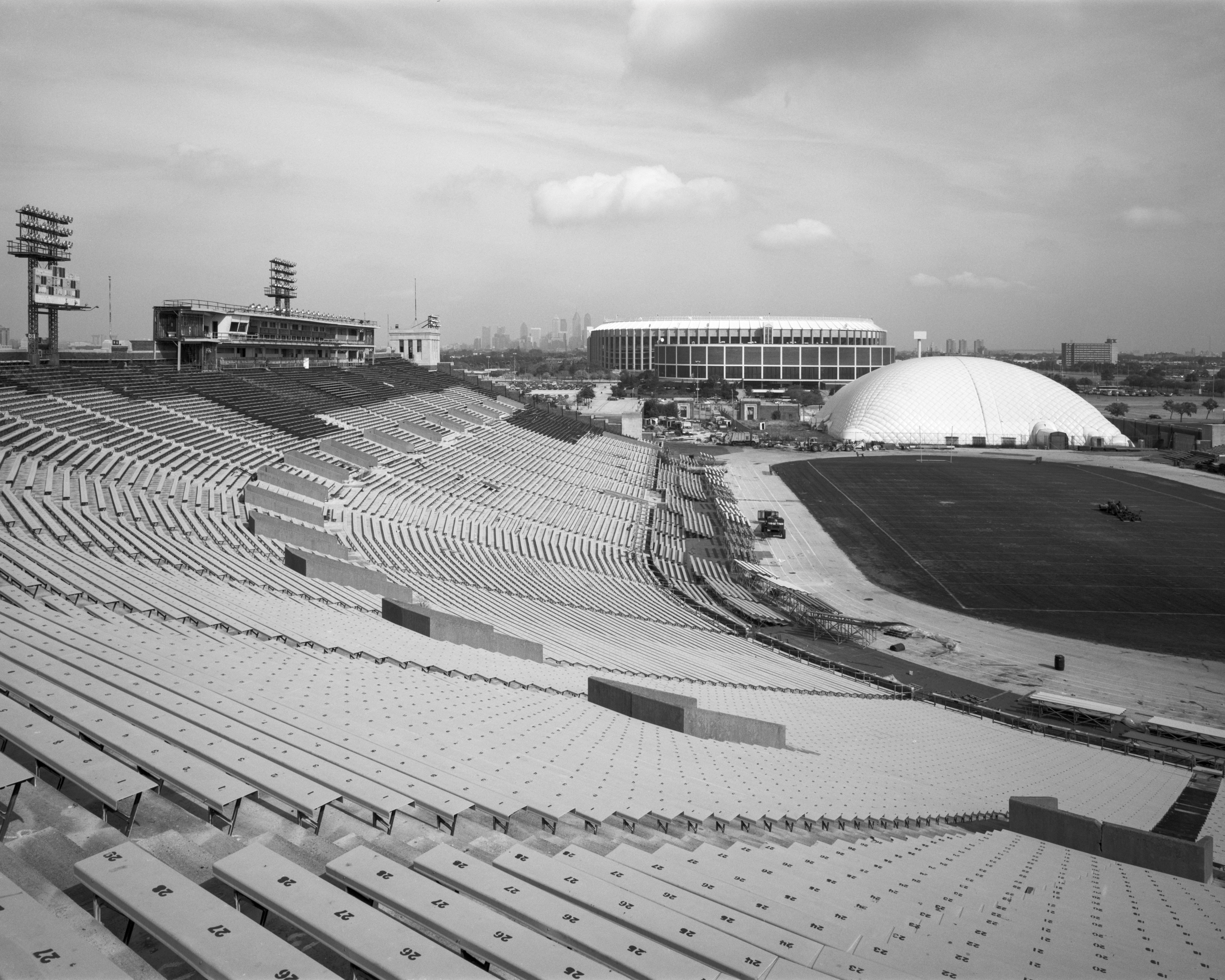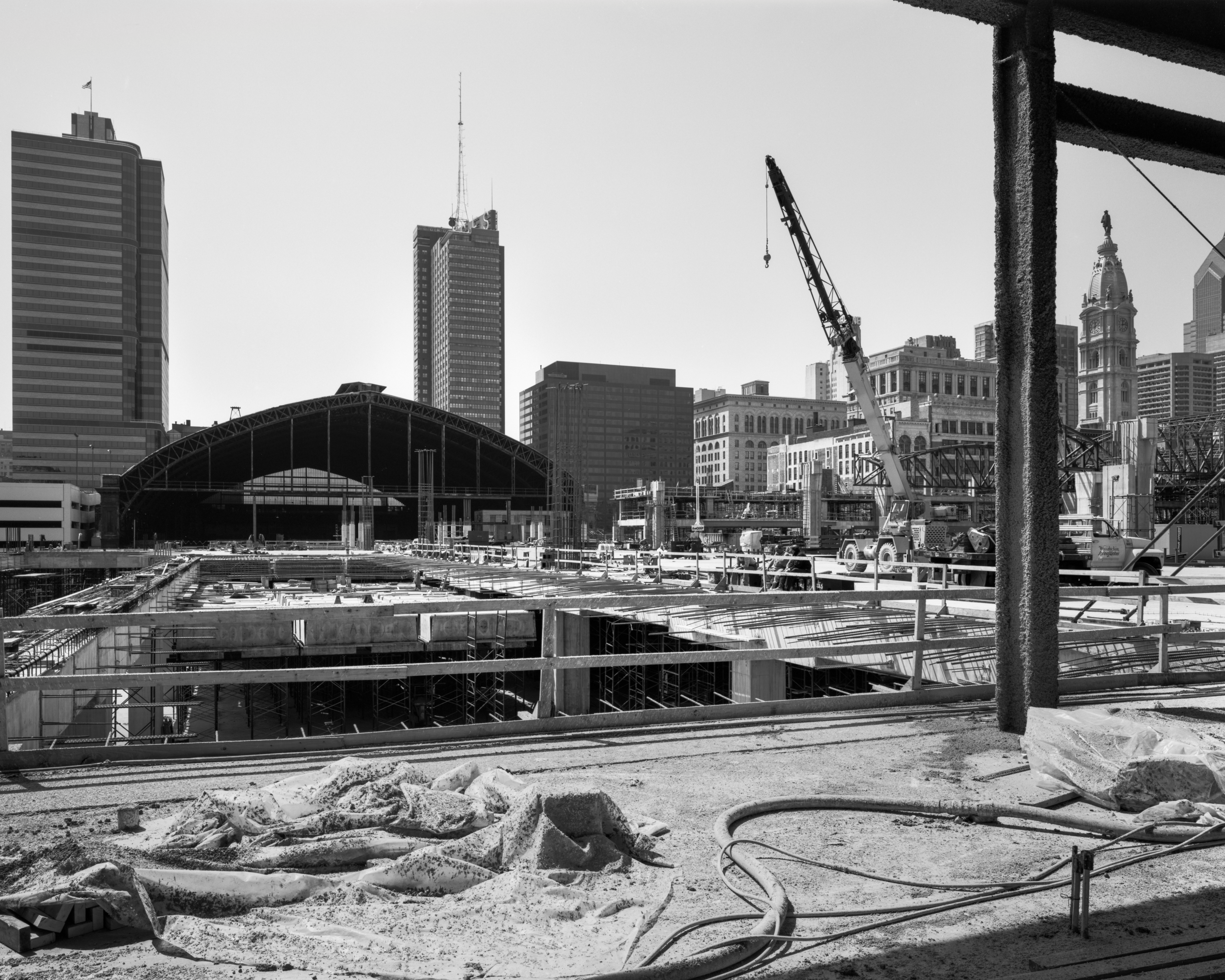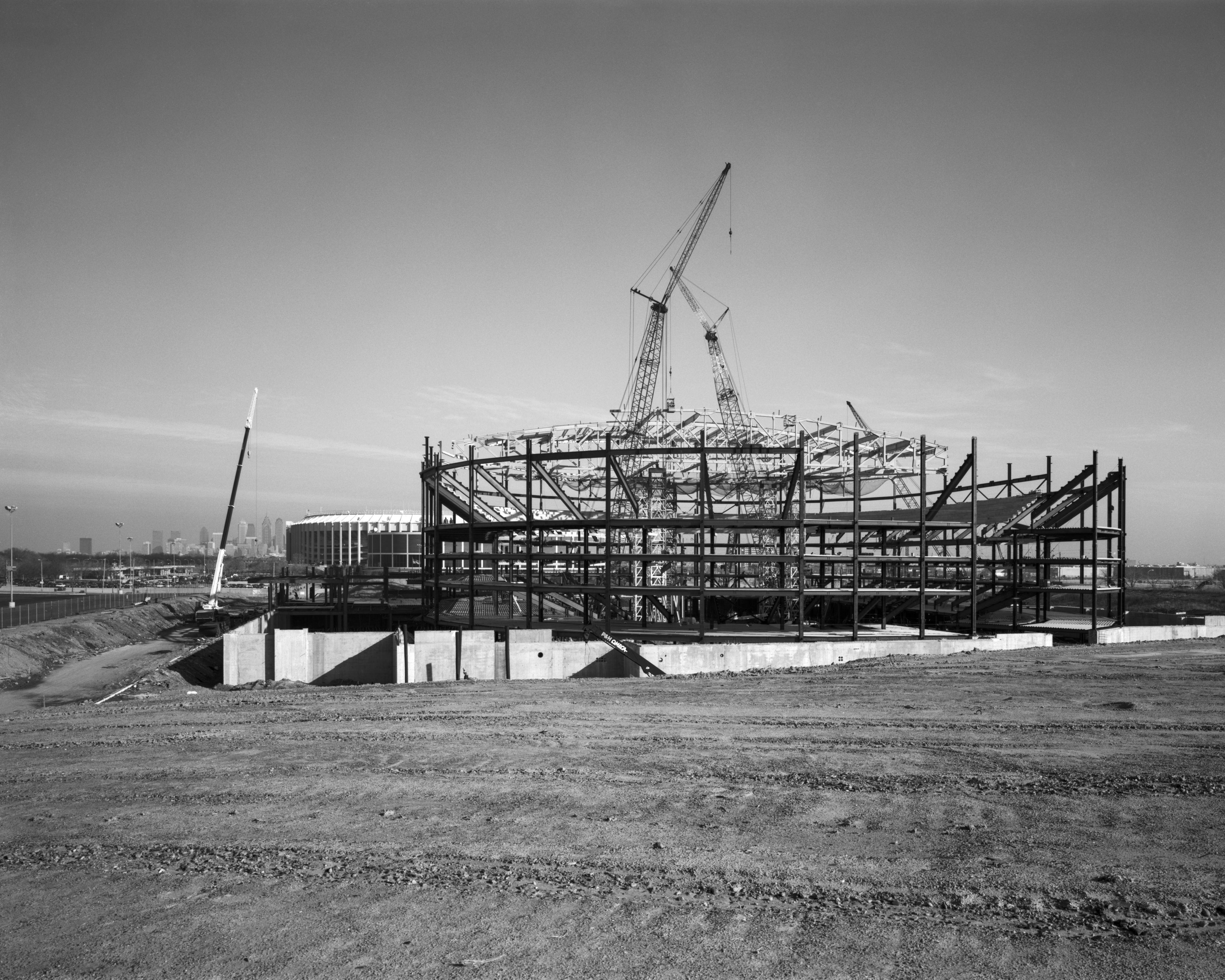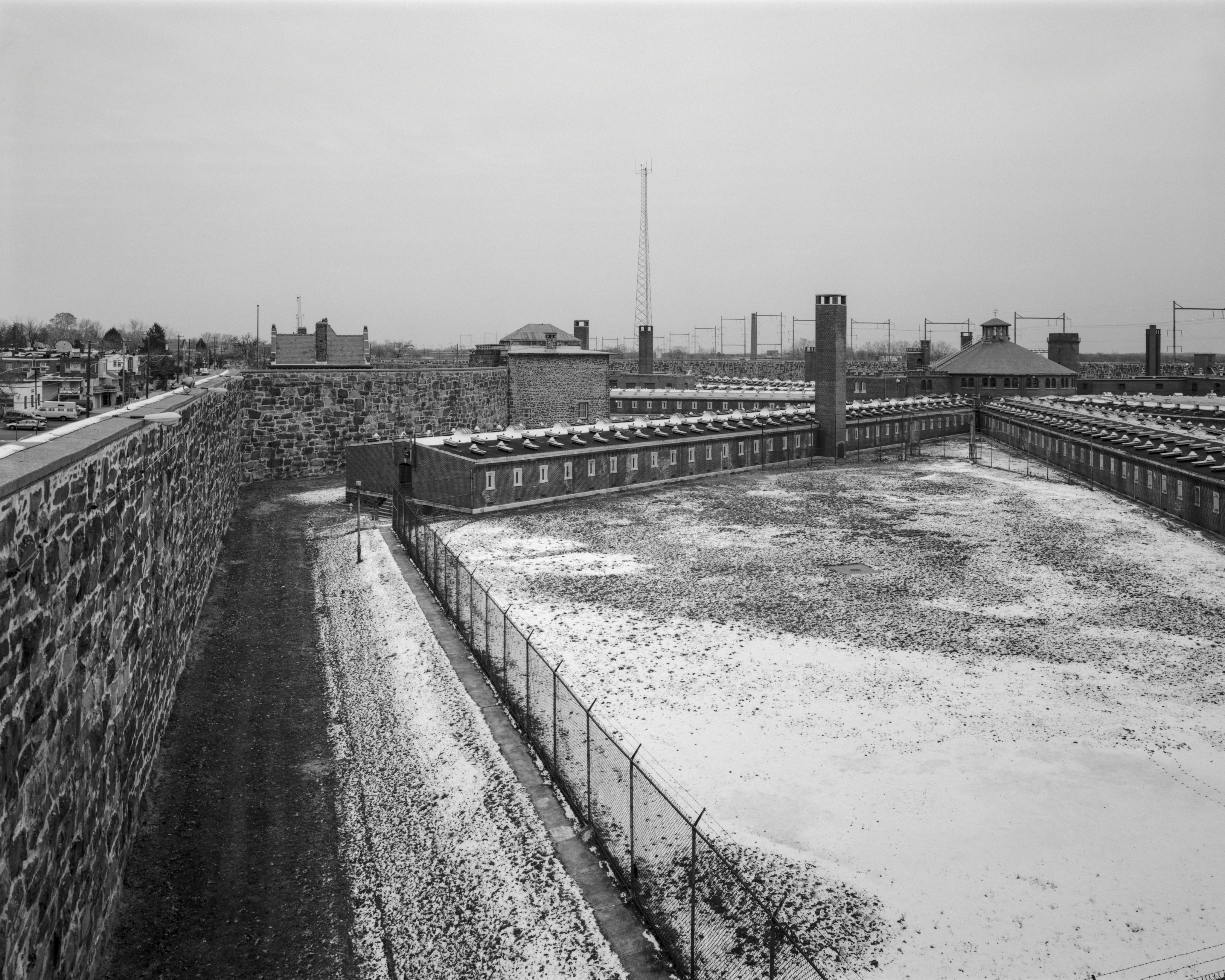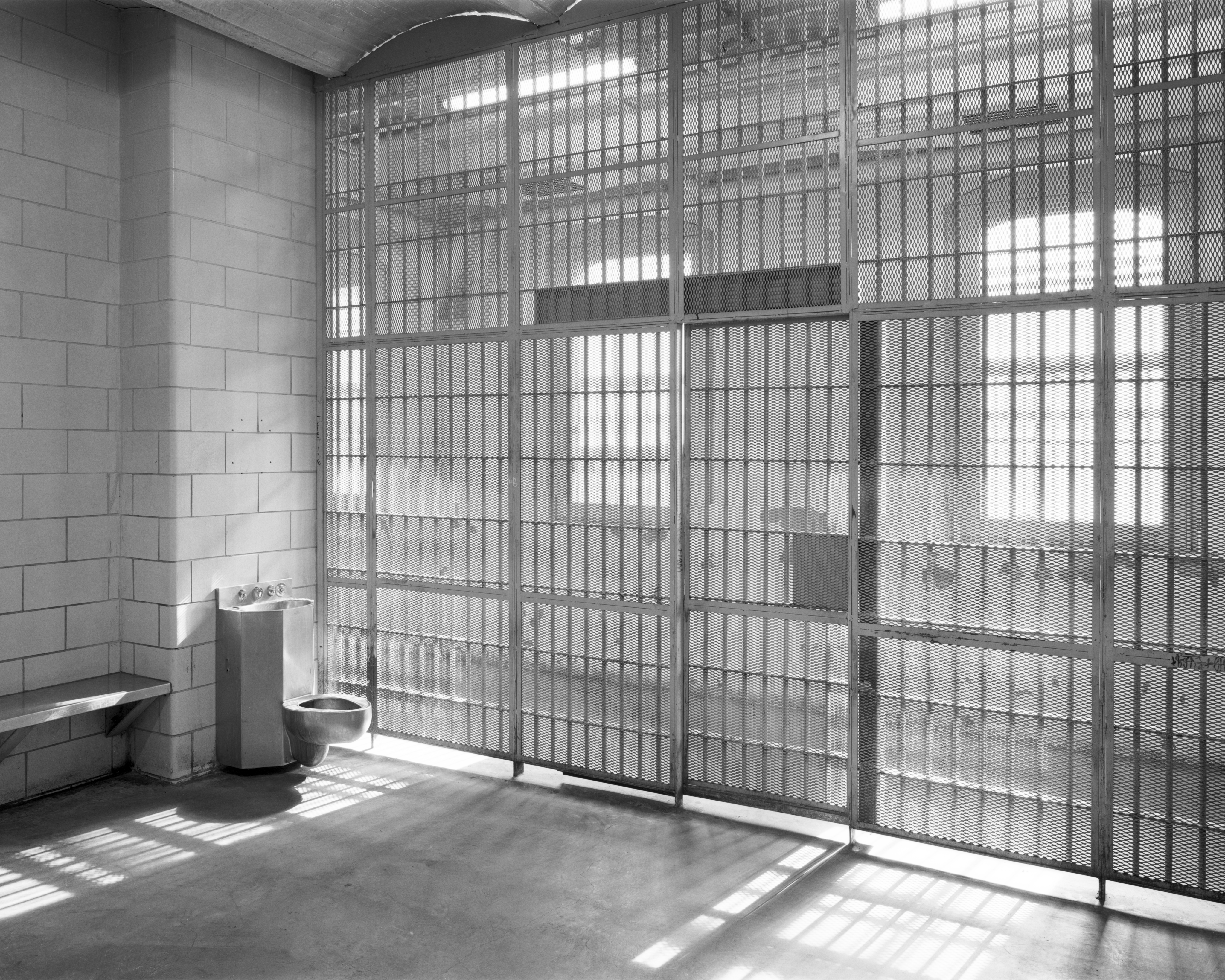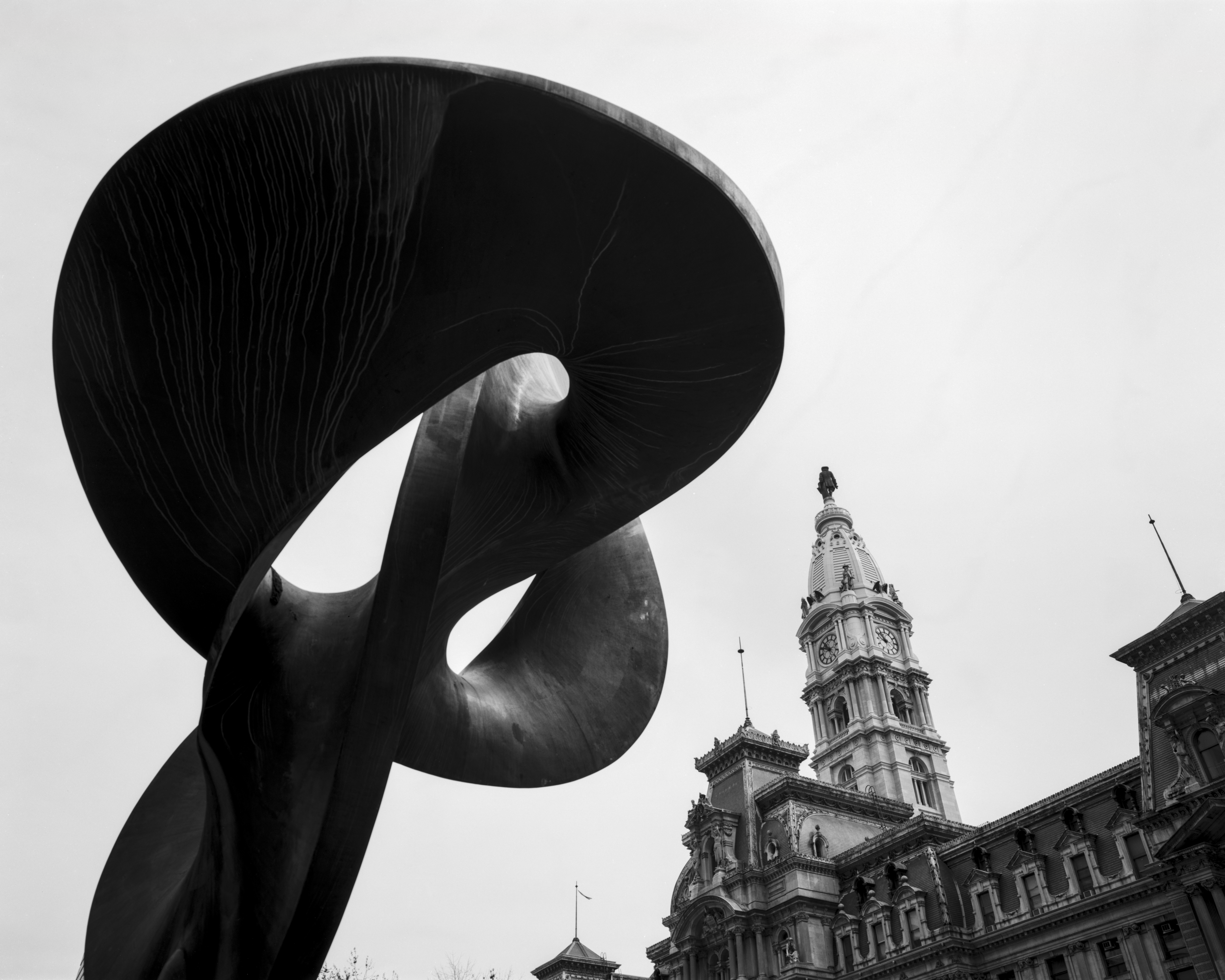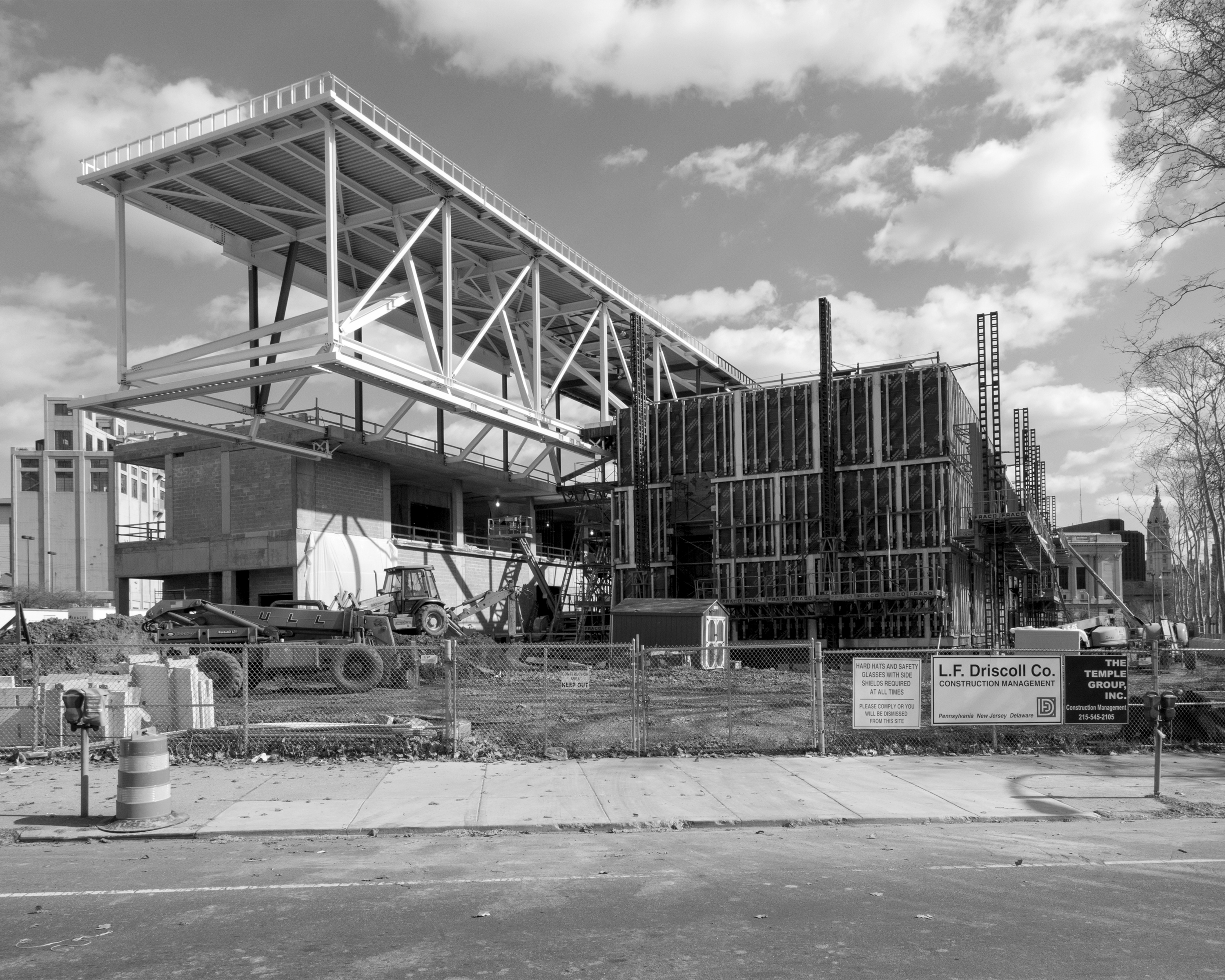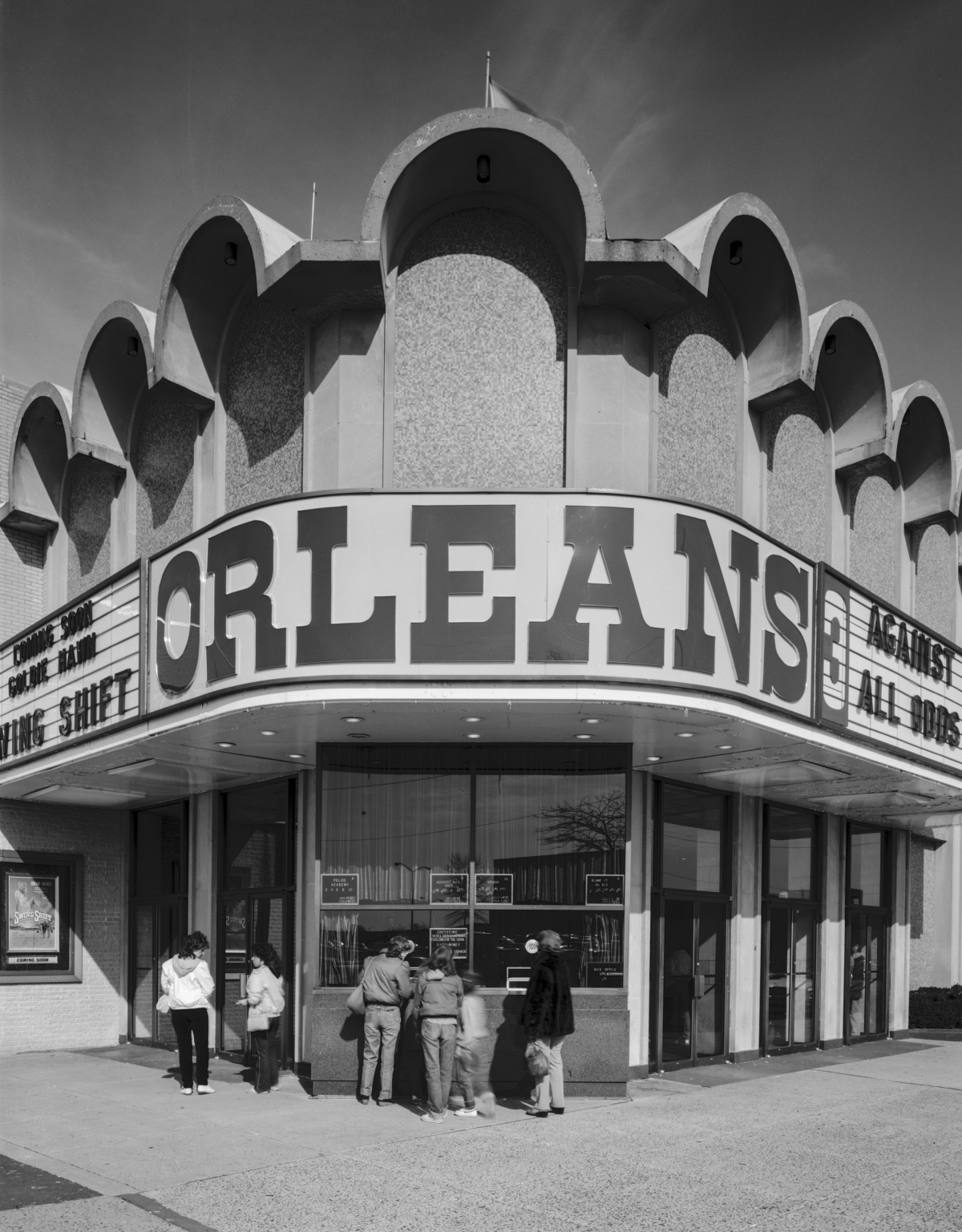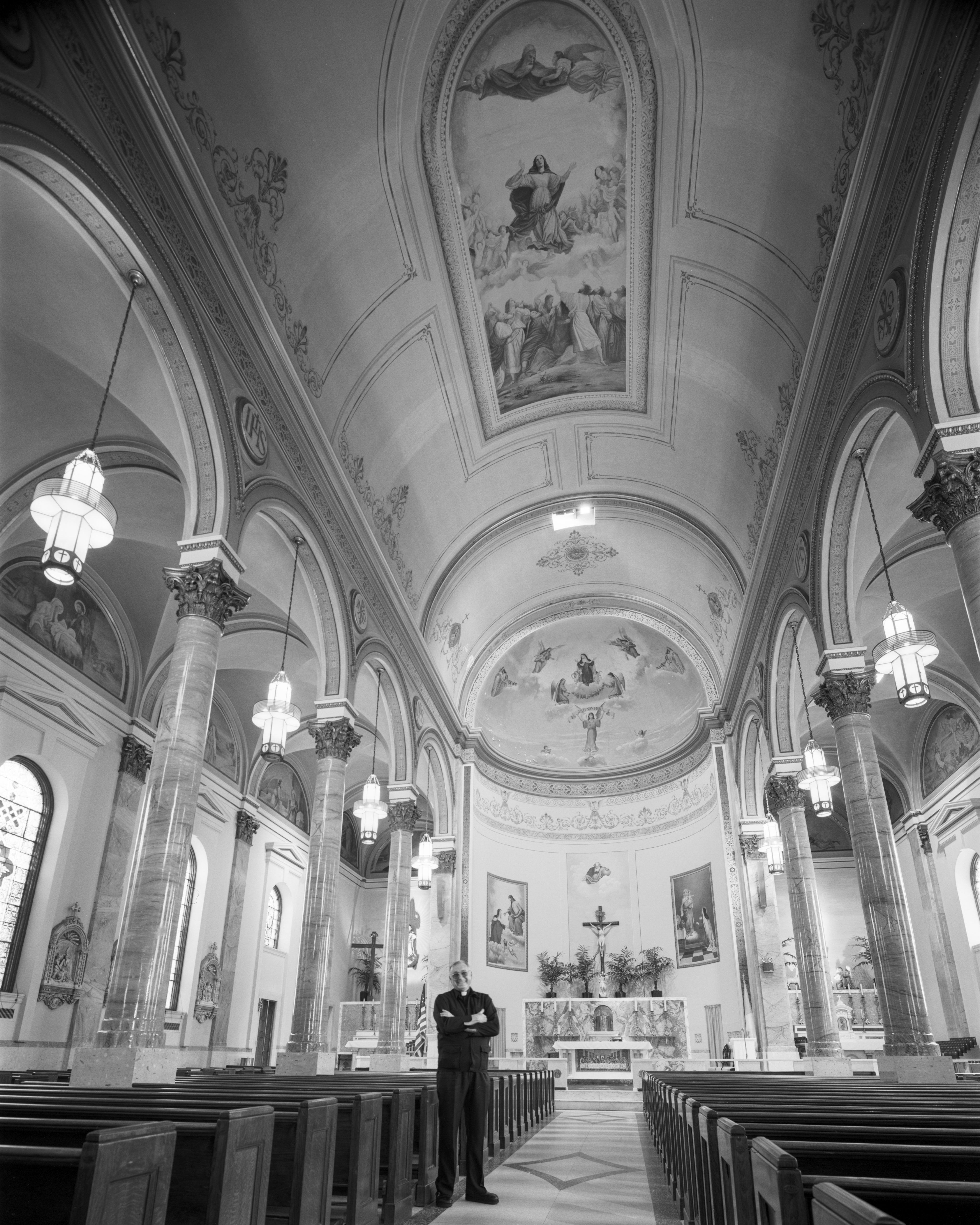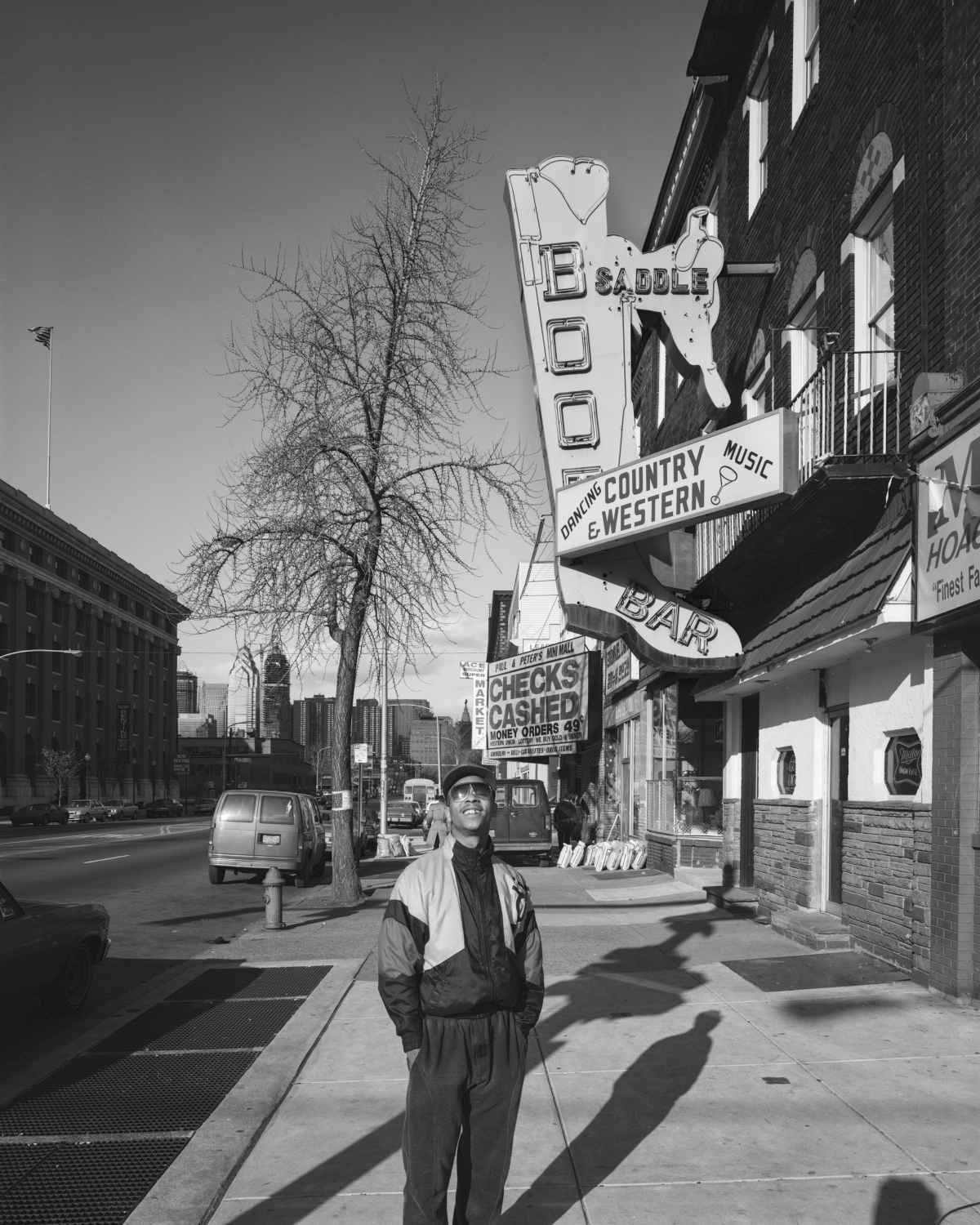40 years of historic Philadelphia photography gifted to Temple Libraries
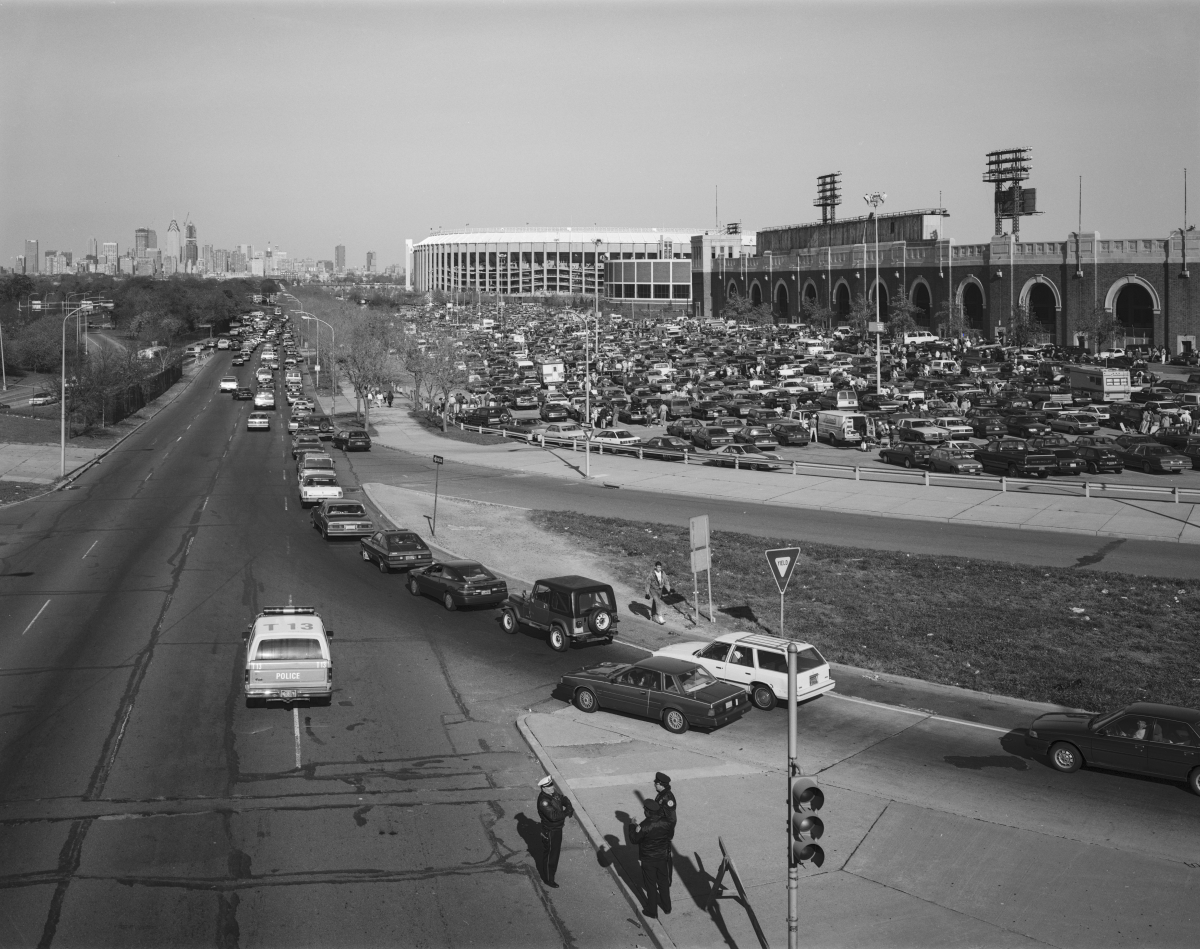
If you ask Joseph V. Labolito how he got hired at Temple University in 1996, he’ll joke that it was a pork sandwich at Willie's Sandwich Shop on 842 Christian St. in Philadelphia.
“One day I went to Willie’s, who makes a great pork sandwich. I gave a guy working at the shop a print that I shot of their shop’s staff and after he looked at it he said, ‘wow gorgeous’. Then he took a push pin out of the drawer and pinned my immaculate print to the greasy wall behind him,” laughed Labolito, who works as a senior photographer in the university’s Department of Strategic Marketing & Communications.
“And I thought at least the guy liked the picture.”
“Fast forward to two weeks later George Ingram, the associate vice president for university relations at Temple (at the time) who was a ‘foodie’ before it was fashionable shopped on 9th St. every Saturday and Willie’s was one of his favorite sandwich spots. So, he goes into Willie’s and says ‘that picture on the wall, tell me about that’. Then a guy comes out from the back of the shop and says, ‘an Italian kid came by and shot that, real nice kid’,” added Labolito.
“A week later George calls me and says the guys at Willie’s said you are alright, so we hired you.
The image print of staff members at Willie’s Sandwich Shop that Labolito shot and gifted to the sandwich shop, 842 Christian St., 1996.
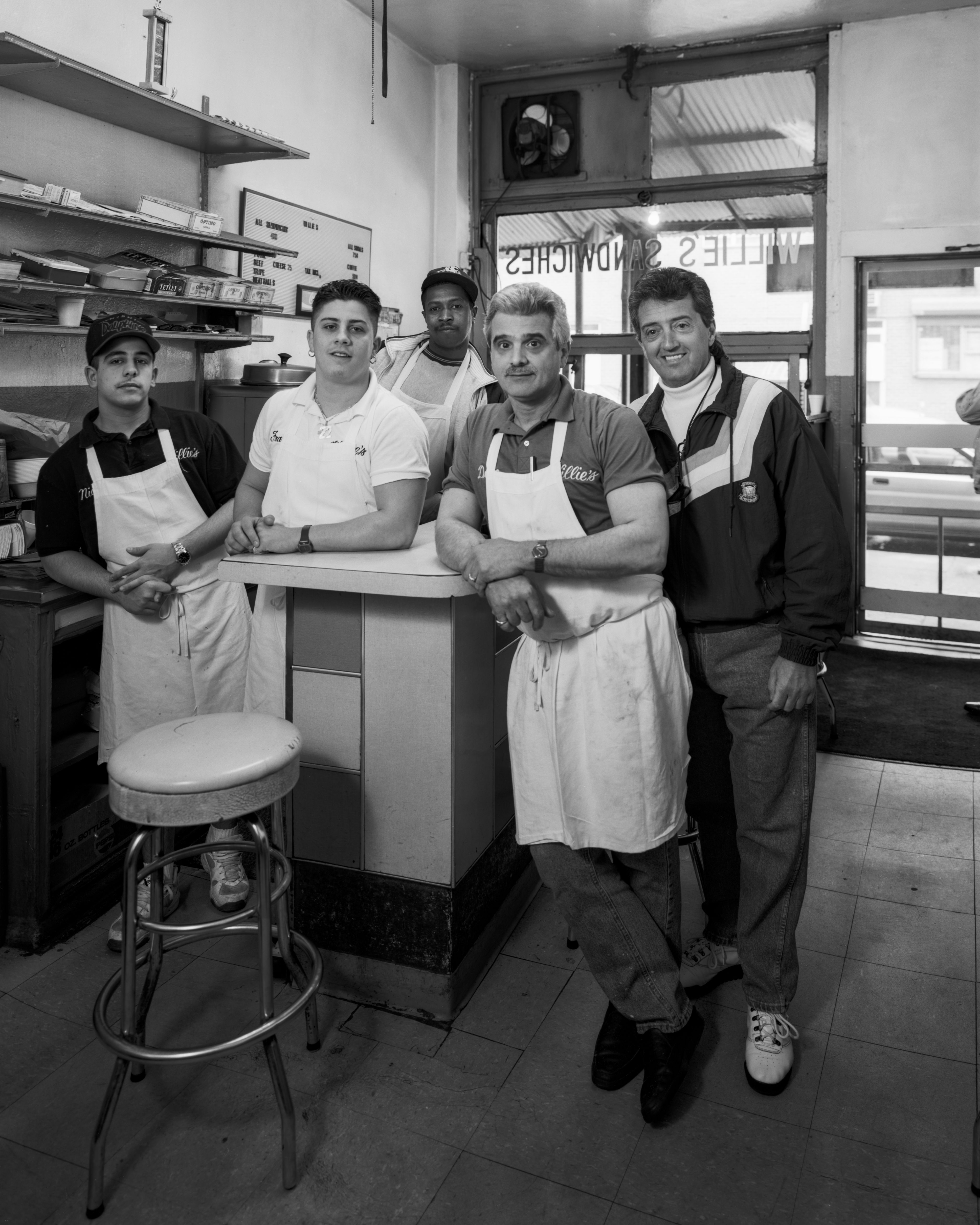
When Temple hired me, I had no idea how big it was,” he said. “Once I got here, I decided that this campus would be my new neighborhood, so I'm going to treat everybody, well, the same way I treat people in my neighborhood.”
Labolito fulfilled that promise this past May by giving back to his “neighborhood” in a very special way.
From capturing candid shots of people racing through the 1986 North Broad Street Run to documenting in black and white the early construction stages of the Pennsylvania Convention Center in 1993, Labolito has been archiving a collection of more than 1,200 images of people, places and things in Philadelphia since 1981.

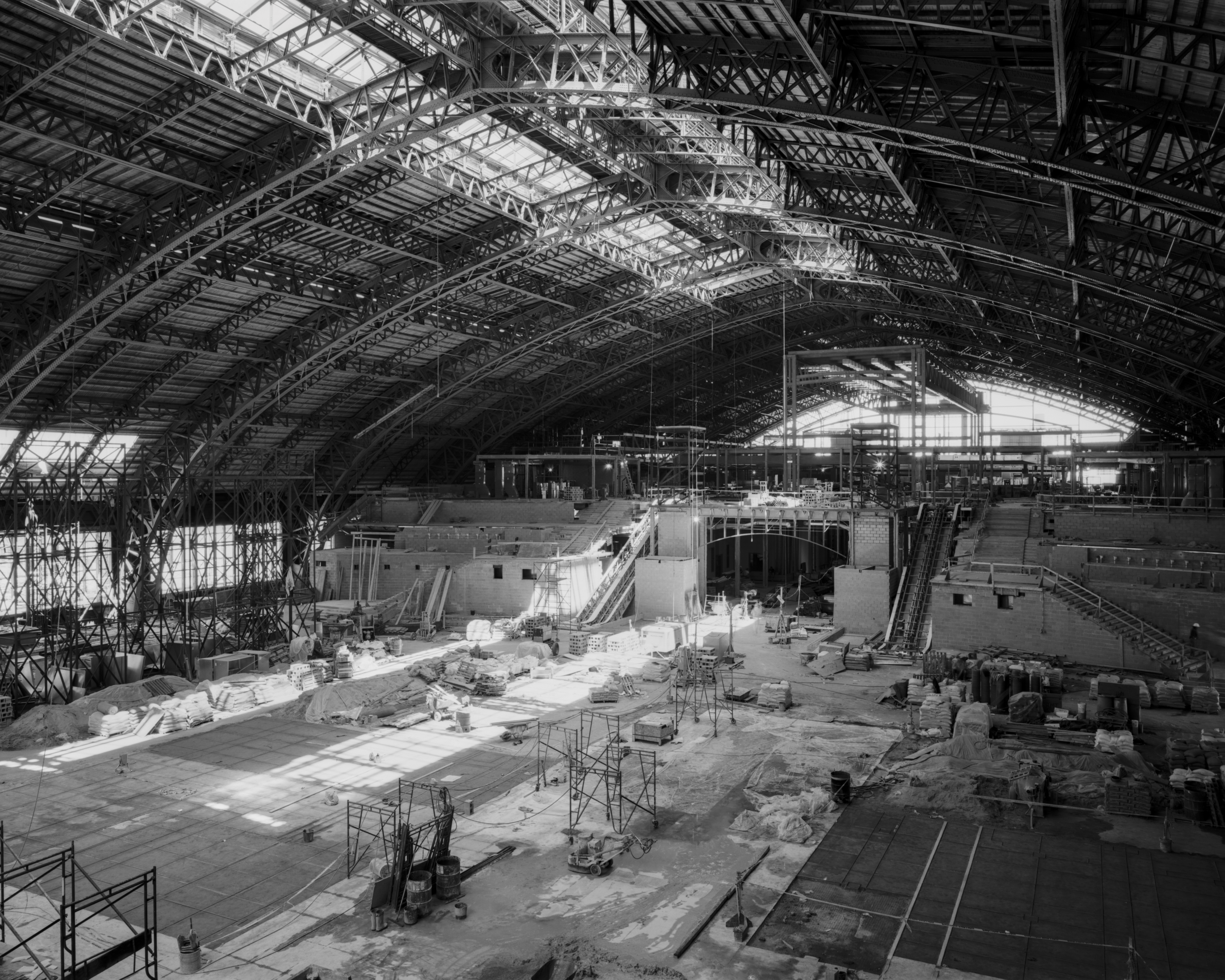
Having developed a strong relationship with Temple as a university photographer over the last 25 years, he donated his complete Philadelphia collection to Temple University Libraries’ Special Collections Research Center (SCRC) in May.
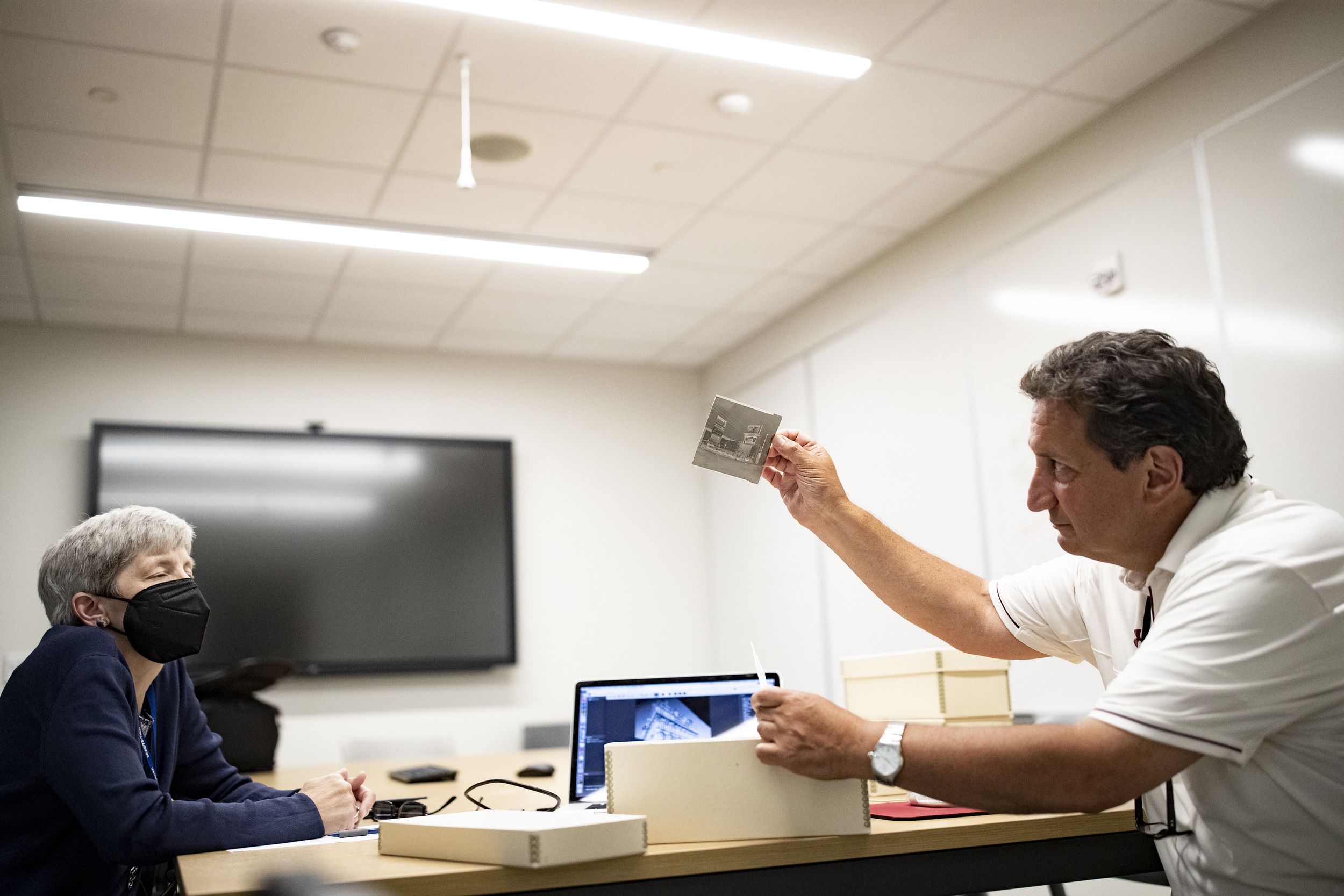
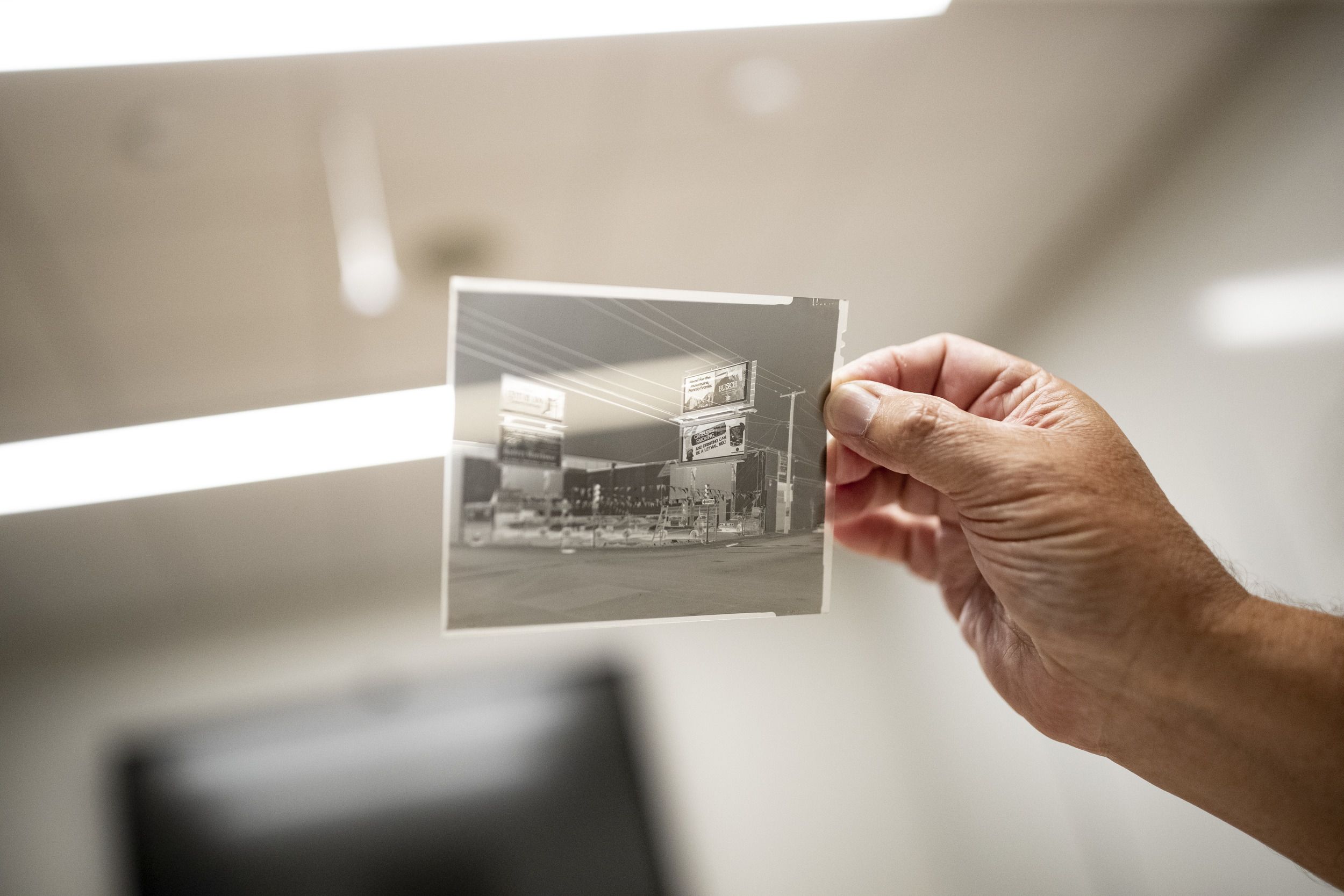
Capturing Philadelphia History in the ’80s, ’90s and ’00s
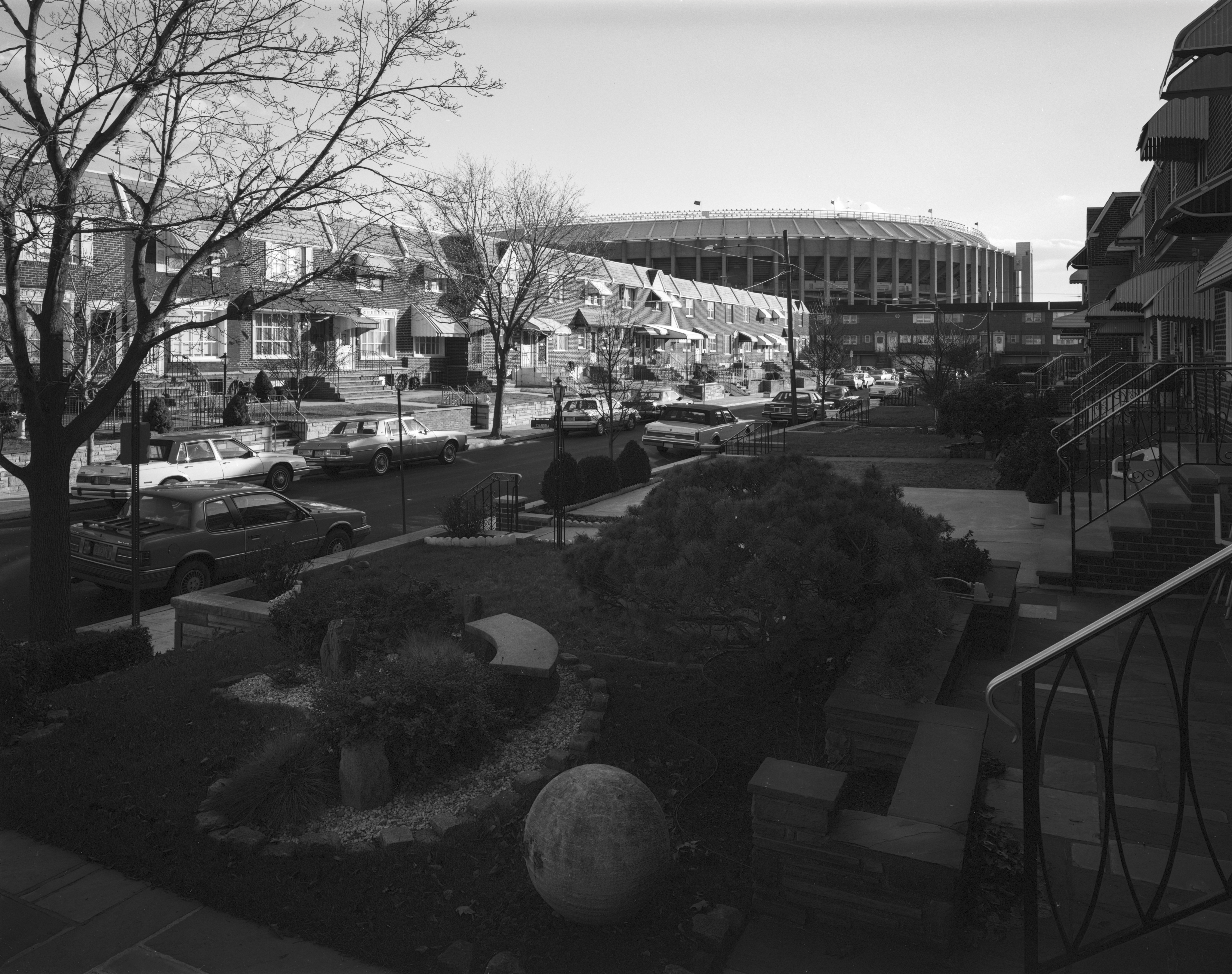

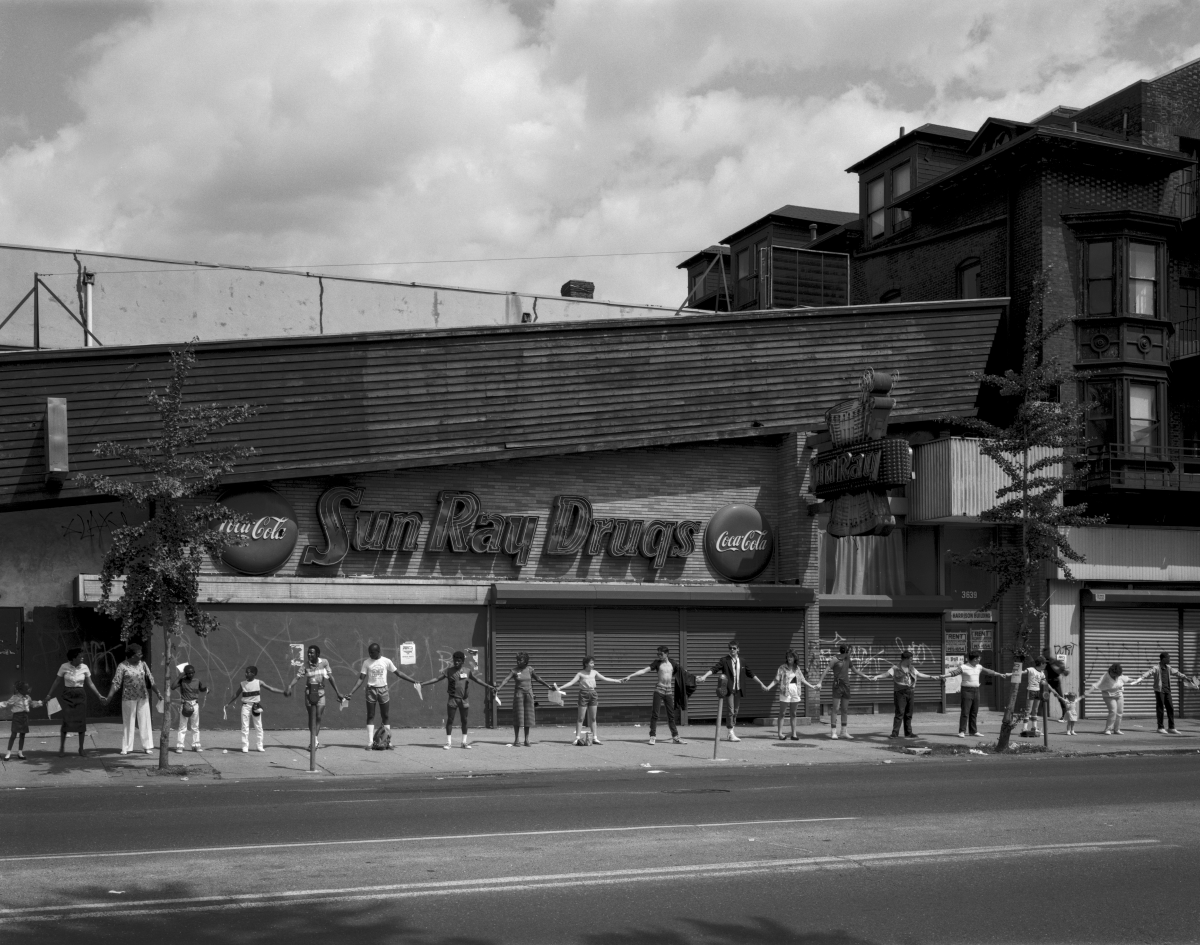

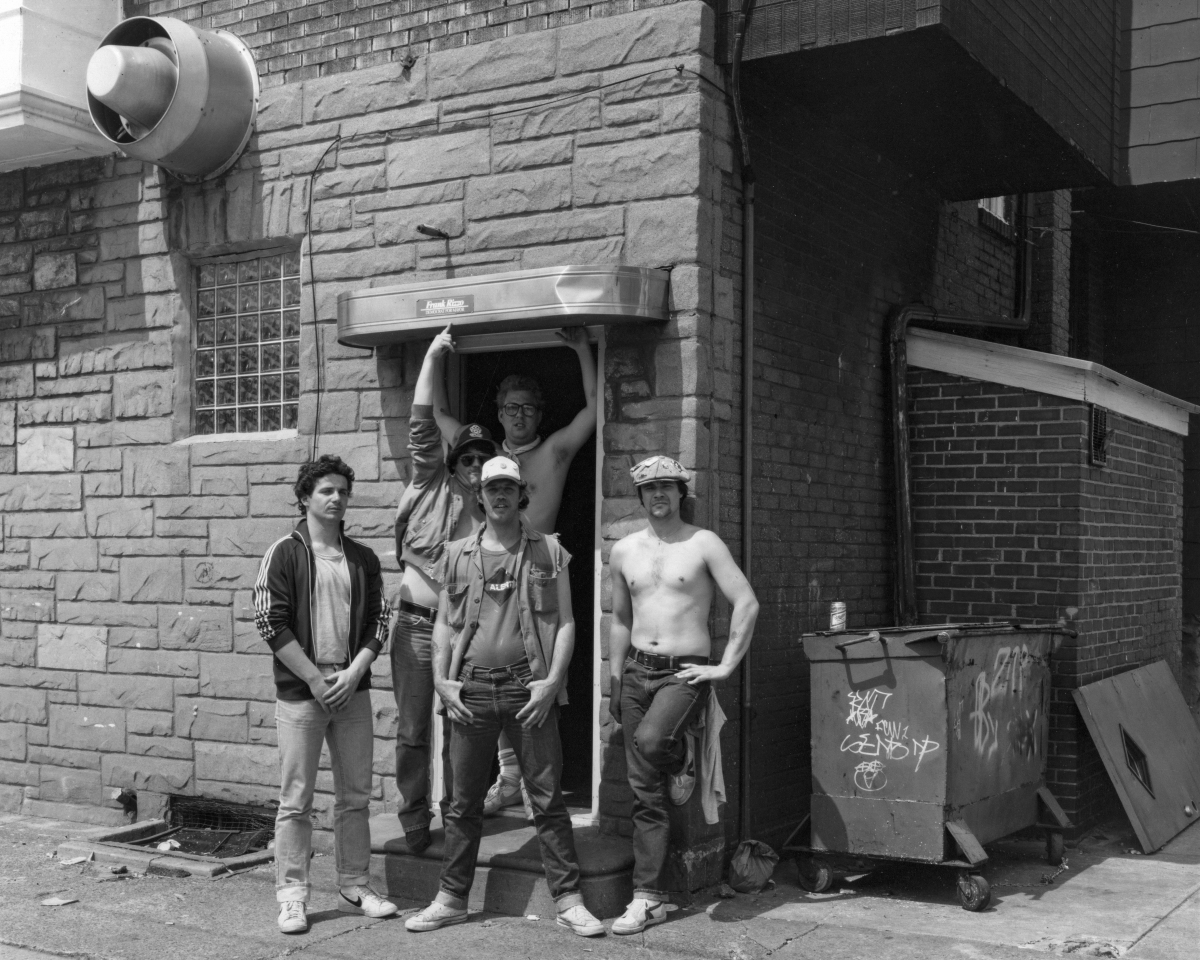
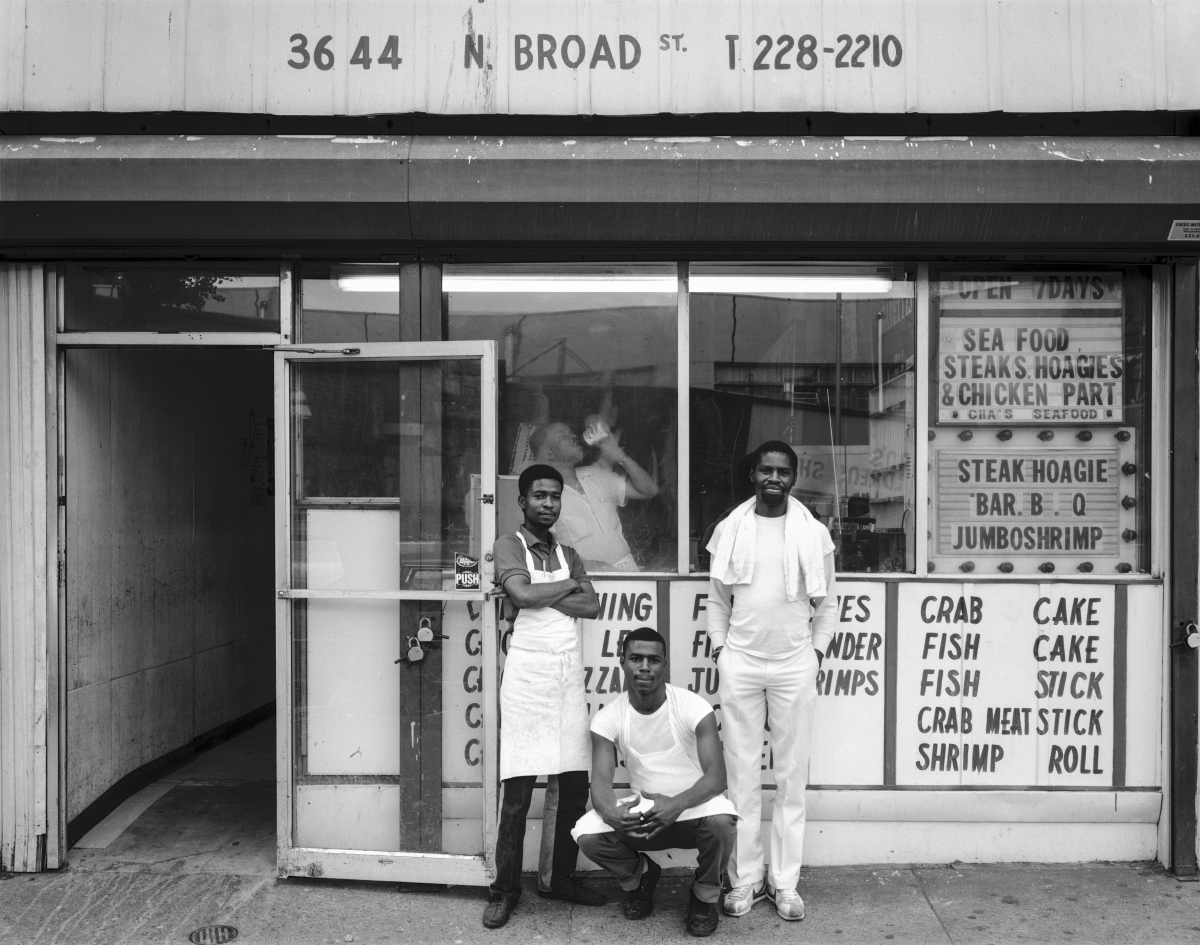
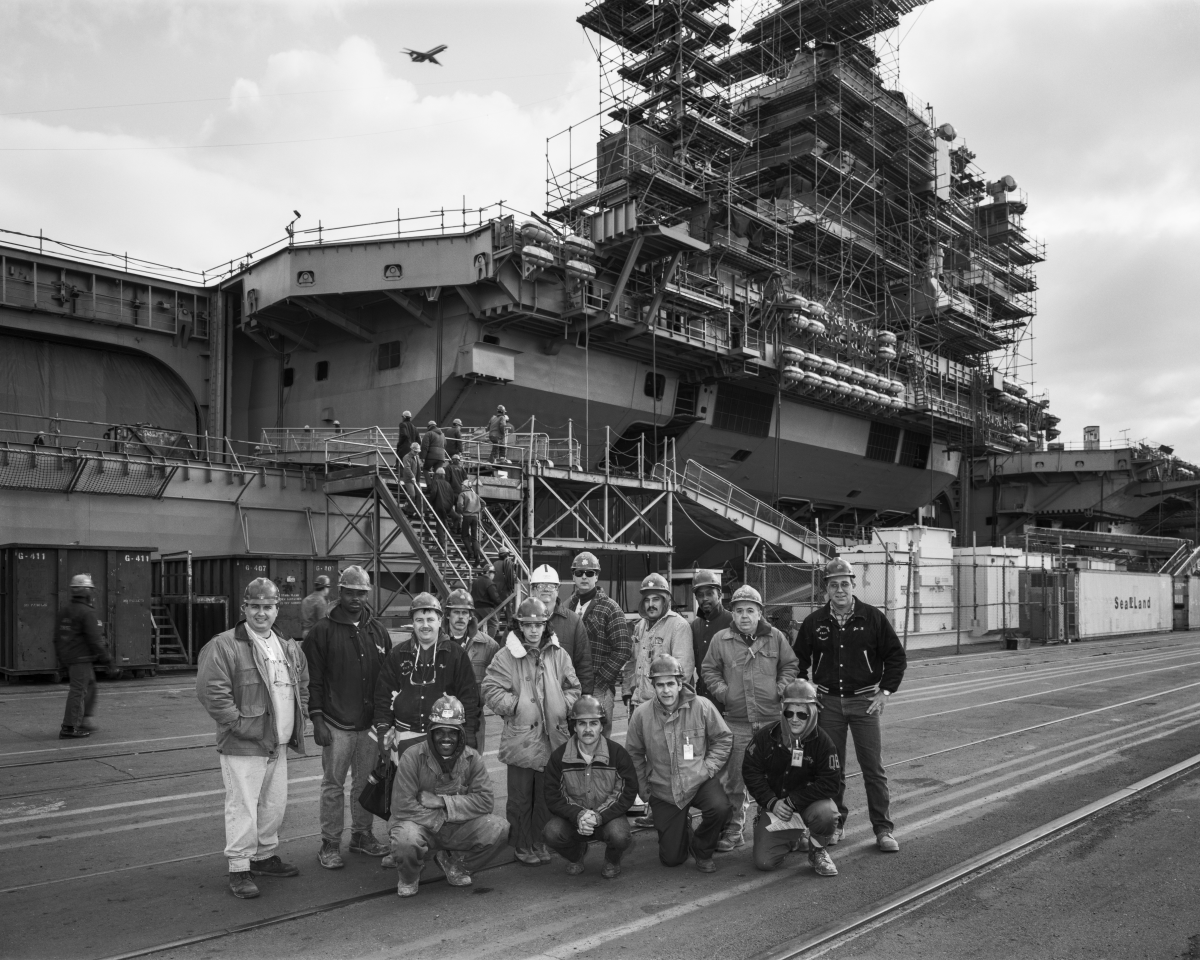
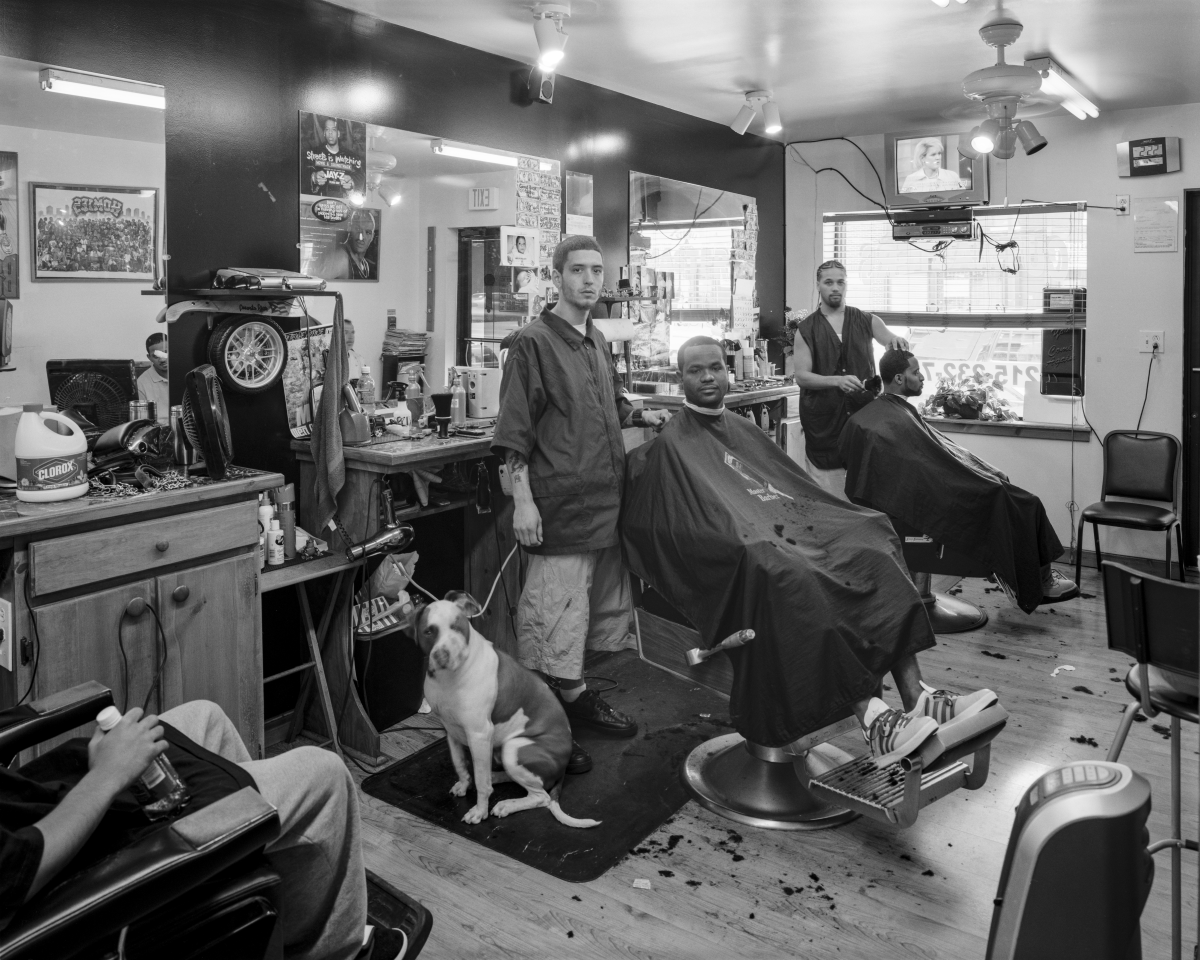
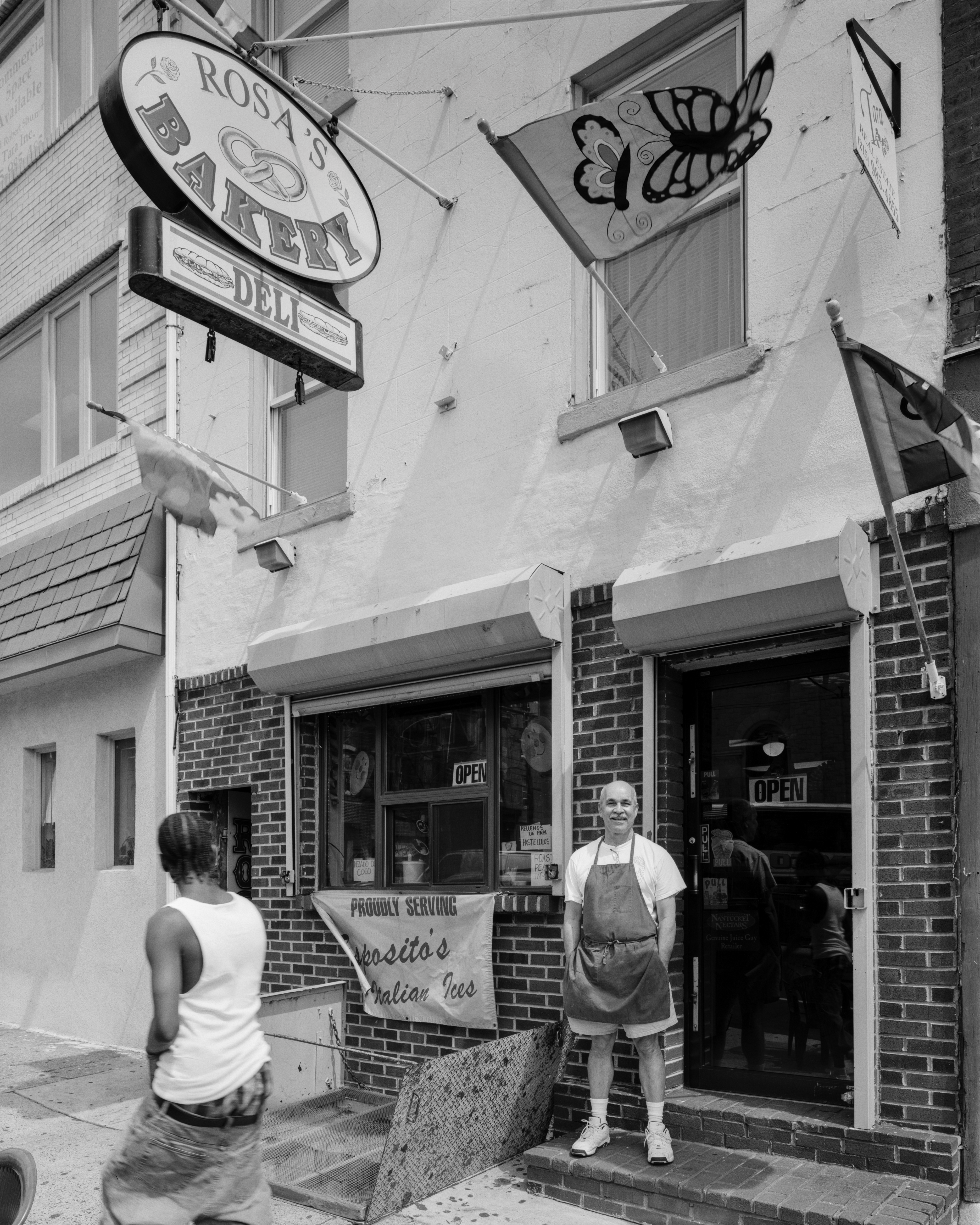
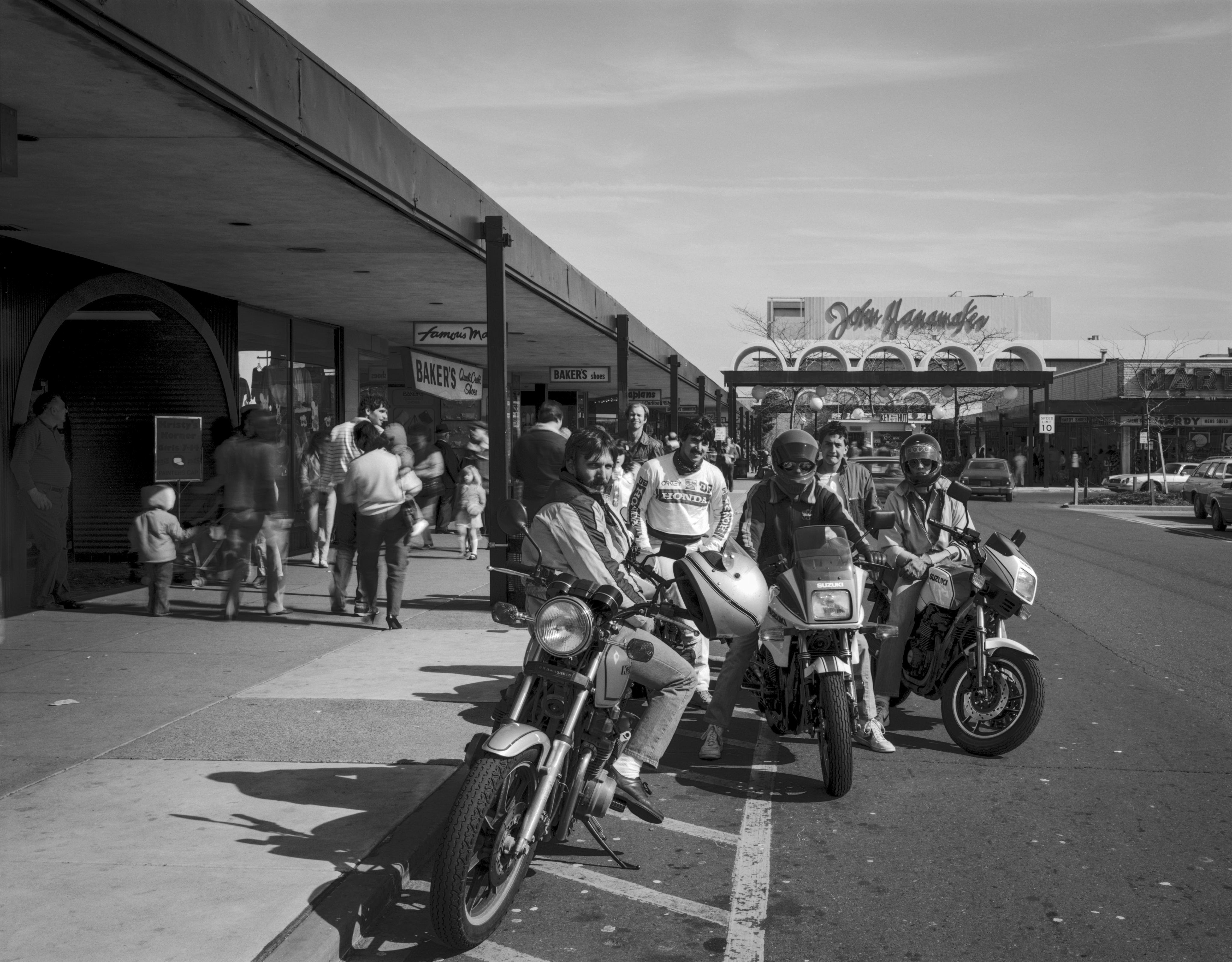
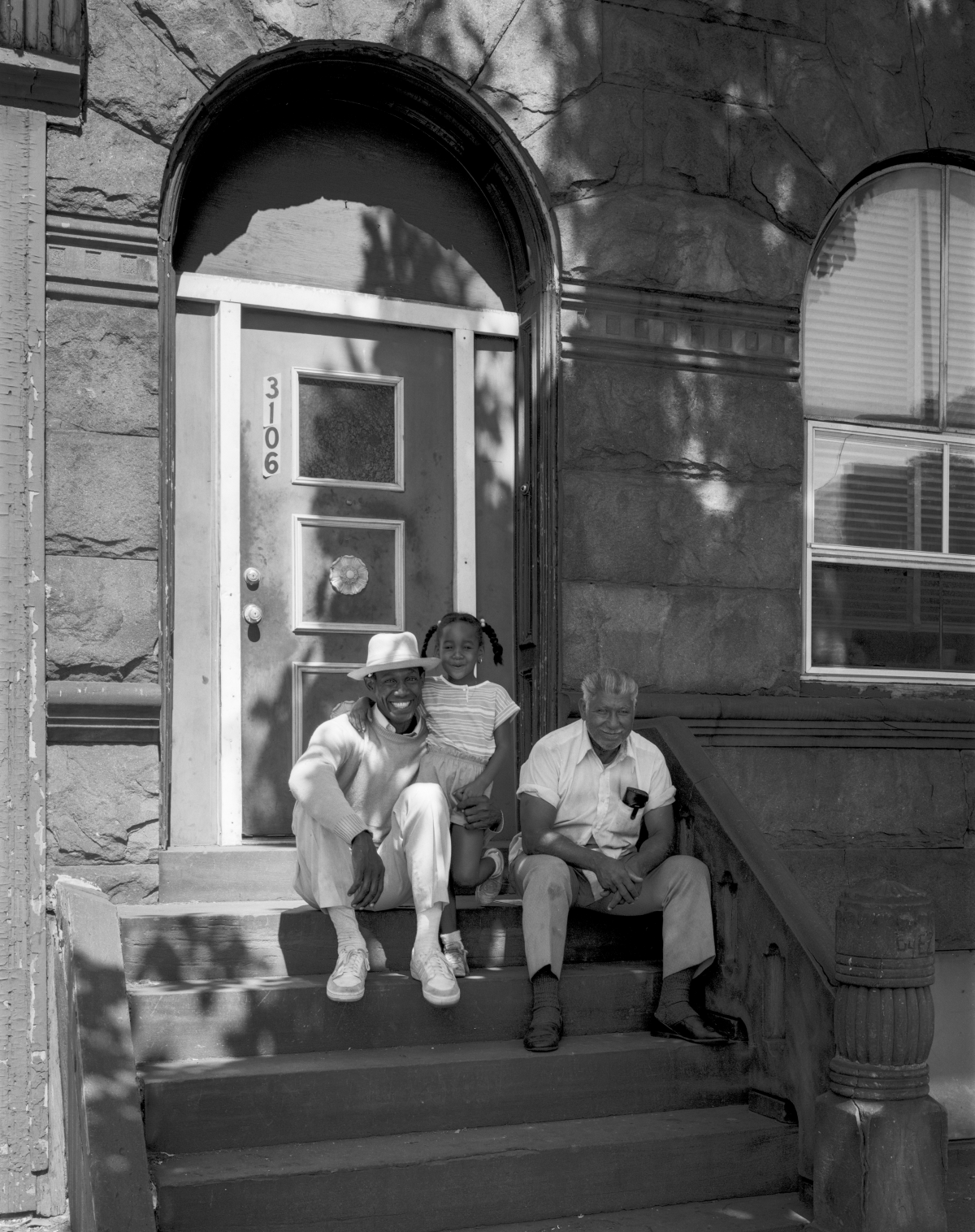
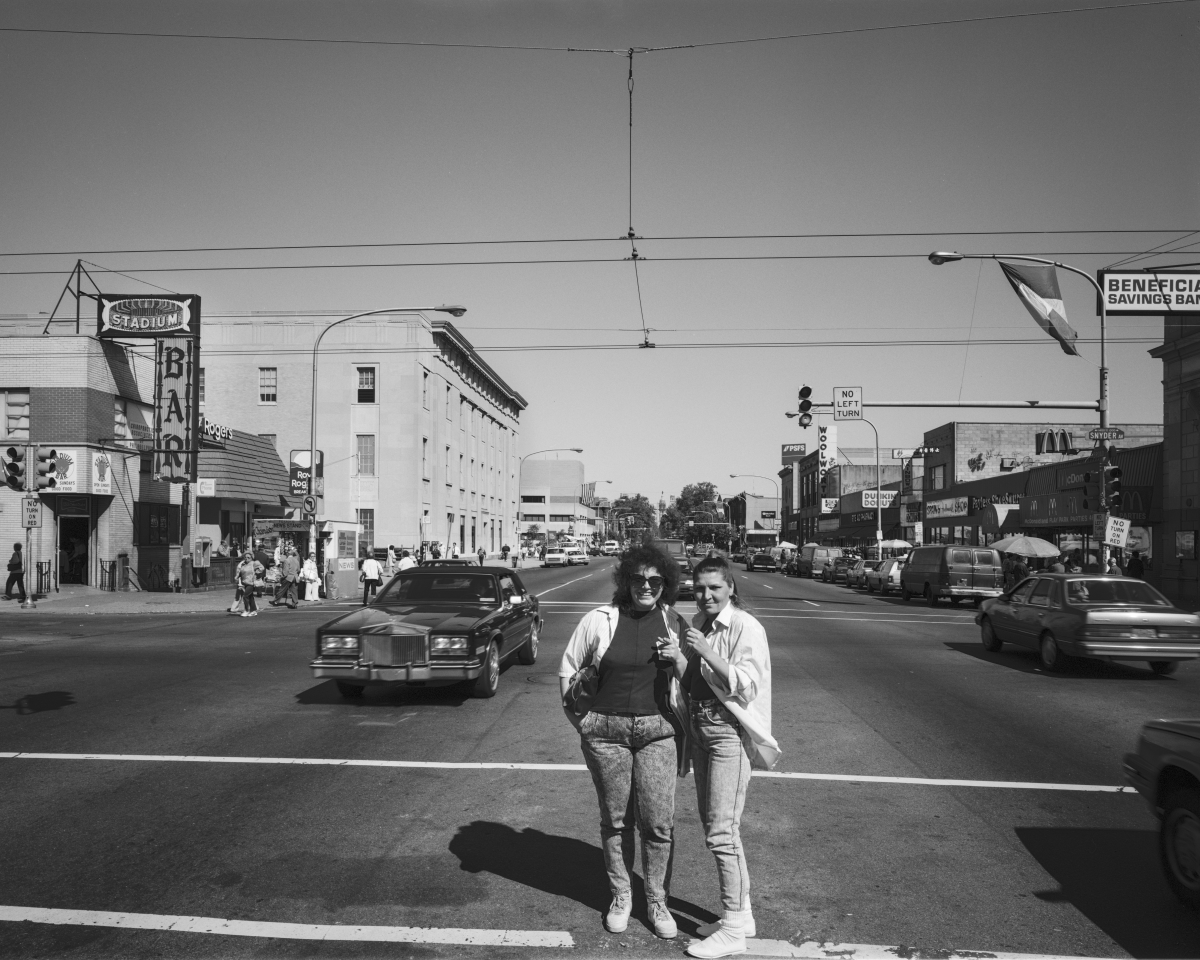
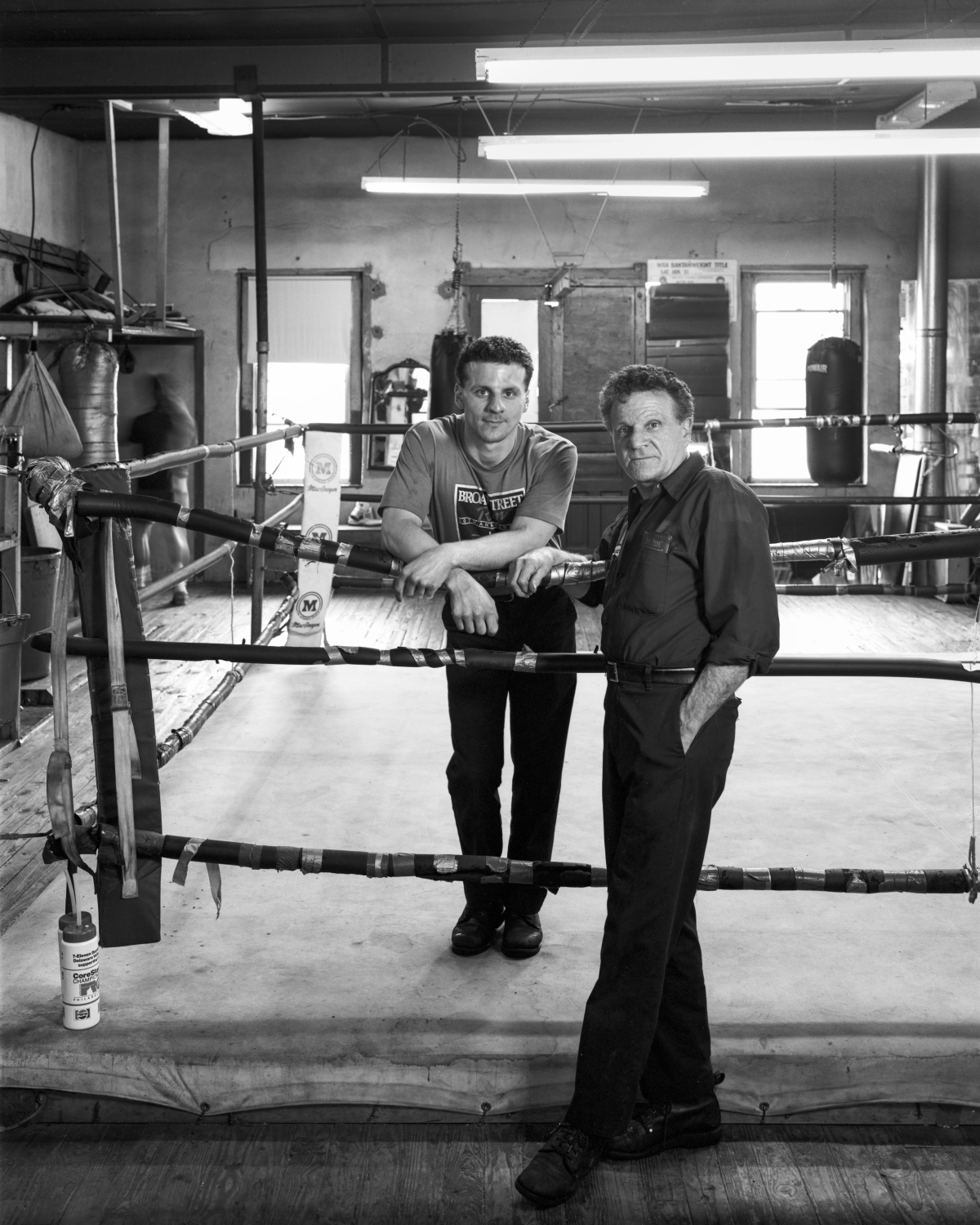
Organized by the decade from the 1980s to the 2000s, all of the images in the collection were shot with a 4x5 camera developed in black and white by Labolito.
Labolito explained that his historic collection offers a view of Philadelphia from the perspective of its citizens, including a look at the creation and demolition of buildings, skylines, intersections and row homes. He added that the collection offers a look into how the city’s people, businesses and culture continues to shape Philadelphia into what it is today.
“If you put together a chronological list of the images, you can see where I was at in my life, where I was going, what I was looking at and where I was spending my time,” he said.
Boxers posing at Champ’s Camp, a local training camp for boxers, 1243 N. 26th St., Philadelphia, 1992.
Boxers posing at Champ’s Camp, a local training camp for boxers, 1243 N. 26th St., Philadelphia, 1992.
Generations of Philadelphia People, Places and Businesses
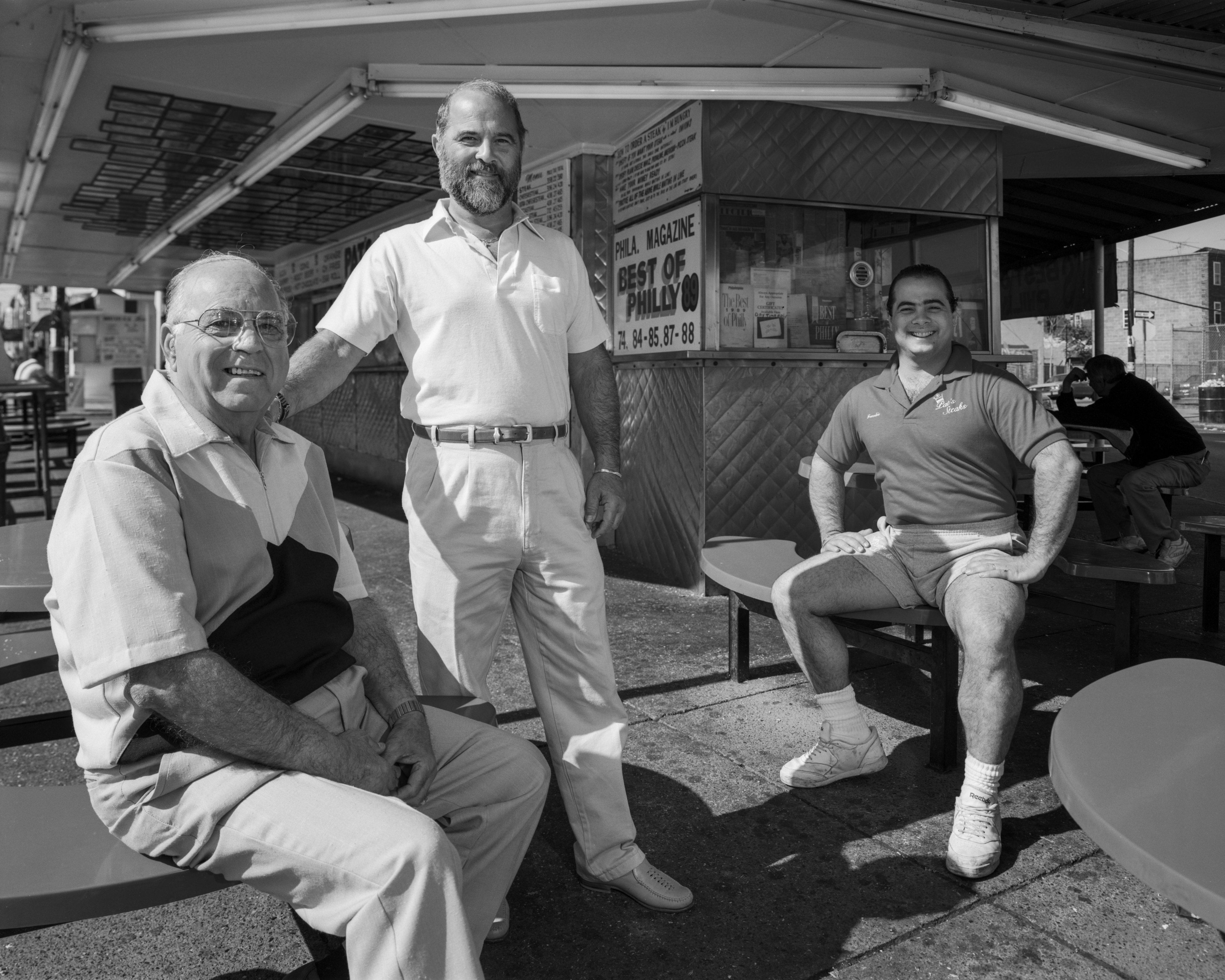
A native of Northeast Philadelphia, Labolito graduated from the Philadelphia College of Art in 1981. While a student there, a professor took one of his classes to the Historical Society of Pennsylvania, a research facility based in Philadelphia that collects historic items. However, Labolito said he did not see any images of the working class neighborhoods in Philadelphia where he was raised.
“I didn’t see the neighborhood I knew. I only saw images of Center City and some of the bigger buildings. I thought to myself, they don’t have any pictures of Northeast or the Frankford el,” he explained. “I thought I should shoot the Frankford el, Kensington Avenue and the places that I don’t see pictures of that I know of. These are the areas that I knew that I grew up in.”
“So even in the 1980s I was thinking that if I start capturing these images now, they are going to look like something in 30 to 100 years,” he added.
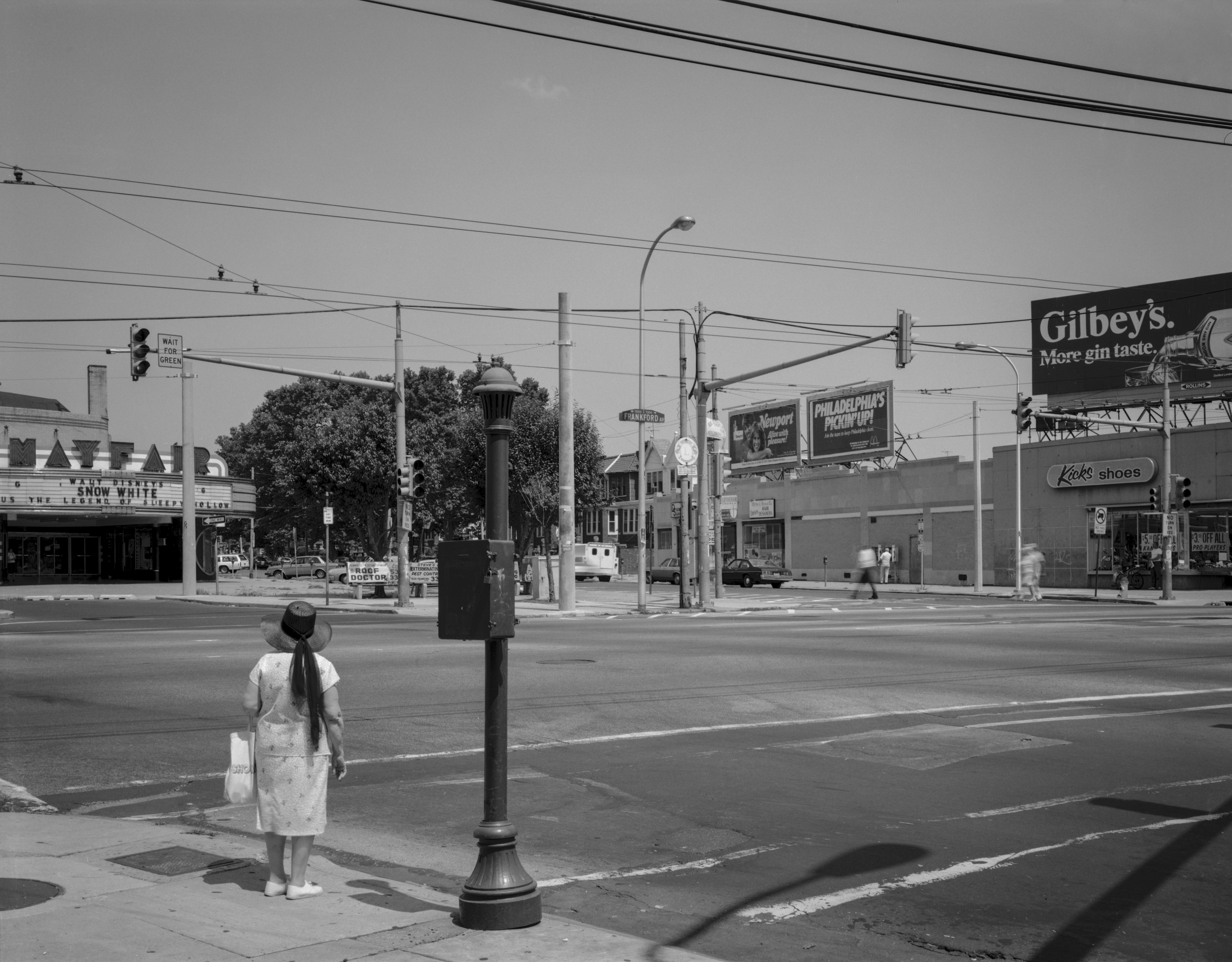
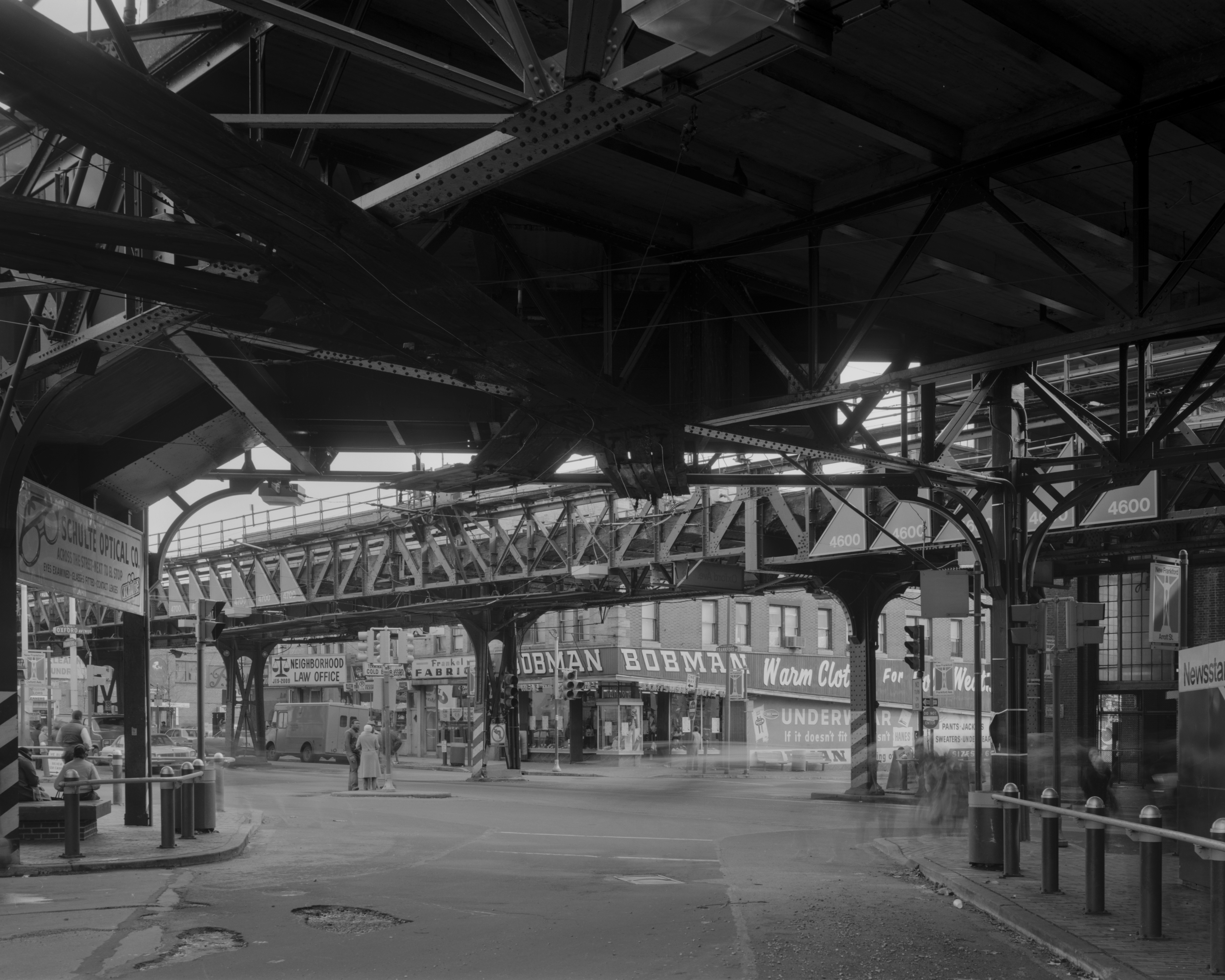
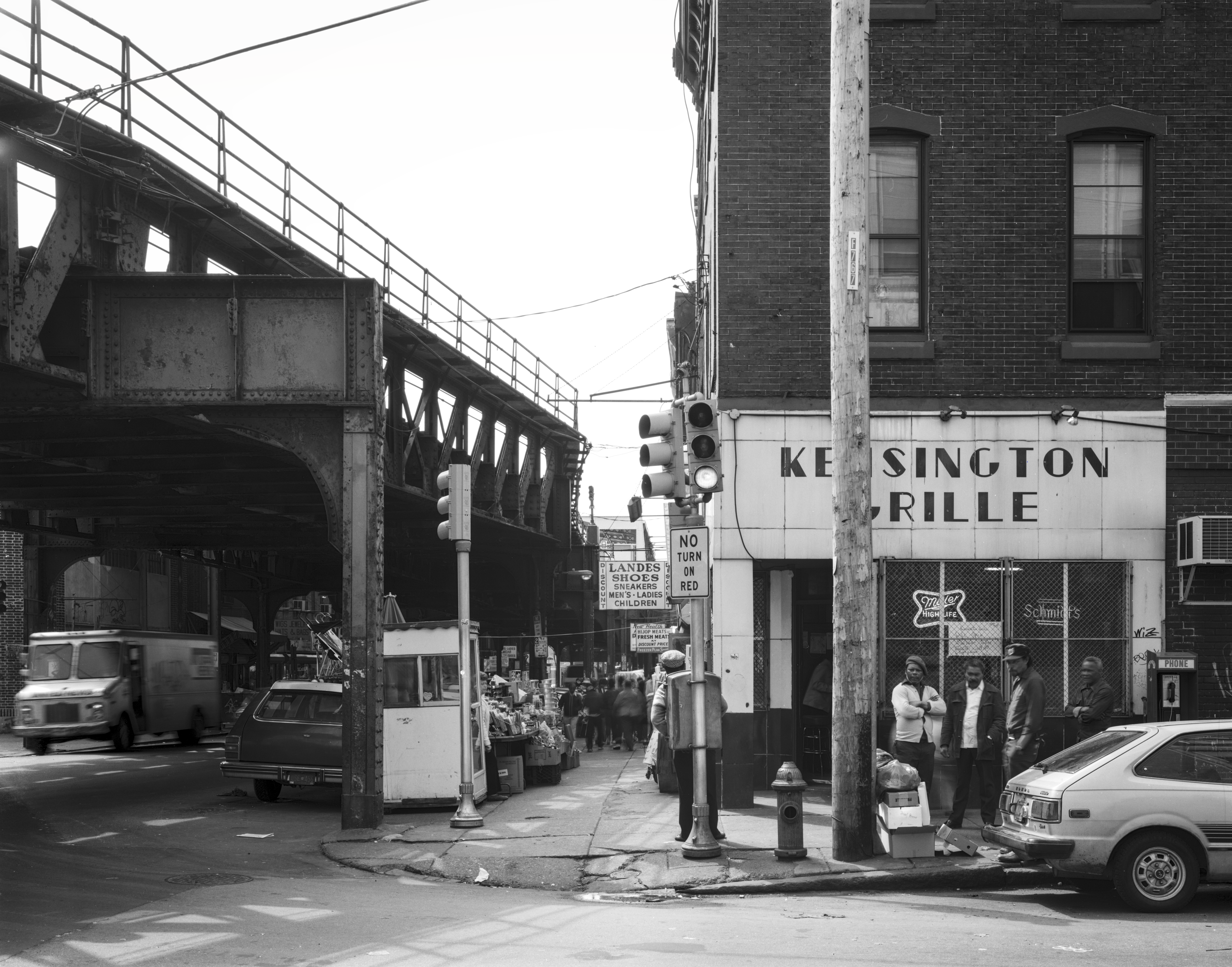
A newspaper vendor inside a newsstand, South Broad Street and Passyunk Avenue, 1989.
A newspaper vendor inside a newsstand, South Broad Street and Passyunk Avenue, 1989.
Two business owners posing inside Frank’s Choice Meats, a local butcher’s shop, 920 S. 9th St., 1991.
Two business owners posing inside Frank’s Choice Meats, a local butcher’s shop, 920 S. 9th St., 1991.
A picture of Melrose Diner, Passyunk off South Broad Street, 1989.
A picture of Melrose Diner, Passyunk off South Broad Street, 1989.
Three business owners posing outside in the front of Isgro’s Pastries, a bakery shop at 1009 Christian St., 1991.
Three business owners posing outside in the front of Isgro’s Pastries, a bakery shop at 1009 Christian St., 1991.
Interior of Paddy’s Pub Old City, a neighborhood bar in Philadelphia, Race Street at Bread Street, Old City, 2000.
Interior of Paddy’s Pub Old City, a neighborhood bar in Philadelphia, Race Street at Bread Street, Old City, 2000.
A picture of business owners Kippie Palumbo and her son Frank Jr. inside Palumbo’s Cafe, 824 Catherine St., 1991.
A picture of business owners Kippie Palumbo and her son Frank Jr. inside Palumbo’s Cafe, 824 Catherine St., 1991.
A man standing in front of Centro Musical, a music store, Lehigh Avenue near North 5th Street, 2003.
A man standing in front of Centro Musical, a music store, Lehigh Avenue near North 5th Street, 2003.
Antoinette DiStefano, the wife of John DiStefano’s son, is pictured holding a portrait inside Victor Cafe, 1303 Dickinson St., South Philadelphia, 1989.
Antoinette DiStefano, the wife of John DiStefano’s son, is pictured holding a portrait inside Victor Cafe, 1303 Dickinson St., South Philadelphia, 1989.
A group of neighbors gather under Interstate 95 at Richmond Street and Lehigh Avenue in Fishtown, 2002.
A group of neighbors gather under Interstate 95 at Richmond Street and Lehigh Avenue in Fishtown, 2002.
A street vendor watching the Frankford elevated train, Kensington Avenue at Front Street, 1987.
A street vendor watching the Frankford elevated train, Kensington Avenue at Front Street, 1987.
A produce man at South Broad and South streets, 1982.
A produce man at South Broad and South streets, 1982.
The proprietor stands in front of the Food Cart supermarket at Front Street and Kensington Avenue, 1987.
The proprietor stands in front of the Food Cart supermarket at Front Street and Kensington Avenue, 1987.
Three boys wearing suits stand in front of row houses in Philadelphia, North Broad Street, 1986.
Three boys wearing suits stand in front of row houses in Philadelphia, North Broad Street, 1986.
The driveway of row homes located at Summerdale Avenue near Bridge Street in Northeast Philadelphia, 1983.
The driveway of row homes located at Summerdale Avenue near Bridge Street in Northeast Philadelphia, 1983.
A passenger enters a SEPTA trolley, North 5th Street and Girard Avenue, 2006.
A passenger enters a SEPTA trolley, North 5th Street and Girard Avenue, 2006.
The interior stairway of the Allegheny Station (SEPTA Market–Frankford Line) at Kensington and Allegheny avenues, 1987.
The interior stairway of the Allegheny Station (SEPTA Market–Frankford Line) at Kensington and Allegheny avenues, 1987.
A group of people gathered around a newsstand at the intersection of Kensington and Allegheny avenues, 1987.
A group of people gathered around a newsstand at the intersection of Kensington and Allegheny avenues, 1987.
A Bell of Pennsylvania telephone booth on Race Street near 10th in the Chinatown section of Philadelphia, 1988.
A Bell of Pennsylvania telephone booth on Race Street near 10th in the Chinatown section of Philadelphia, 1988.
A group of people pictured underneath the SEPTA Market-Frankford Line on Allegheny Avenue at Kensington Avenue, 1987.
A group of people pictured underneath the SEPTA Market-Frankford Line on Allegheny Avenue at Kensington Avenue, 1987.
Four local residents playing a game of half ball at the McPherson Square Branch of the free library in Kensington, 1987.
Four local residents playing a game of half ball at the McPherson Square Branch of the free library in Kensington, 1987.
The Trenton China Shop pictured at 3rd and Arch streets in Old City, 2000.
The Trenton China Shop pictured at 3rd and Arch streets in Old City, 2000.
Row homes are pictured in the Logan section of Philadelphia, the 900 block of Roosevelt Boulevard, 1988.
Row homes are pictured in the Logan section of Philadelphia, the 900 block of Roosevelt Boulevard, 1988.
The Spruce Food Market pictured on the 1500 block of Spruce Street in Center City, 1984.
The Spruce Food Market pictured on the 1500 block of Spruce Street in Center City, 1984.
Boyd's menswear shore and Hanover shoe shore pictured on the 1200 Block of Market Street, 1990.
Boyd's menswear shore and Hanover shoe shore pictured on the 1200 Block of Market Street, 1990.
A group of boys dressed up in costumes for the Mummers Parade on New Year’s Day, South Broad Street near Spruce Street, 1997.
A group of boys dressed up in costumes for the Mummers Parade on New Year’s Day, South Broad Street near Spruce Street, 1997.
A young girl waves as a “Welcome Back Mummers” sign hangs on a row home during the Mummers Parade, South Broad Street, 1996.
A young girl waves as a “Welcome Back Mummers” sign hangs on a row home during the Mummers Parade, South Broad Street, 1996.
A man dressed up in pirate costume during the Mummers Parade on South Broad Street near Spruce Street, 1997.
A man dressed up in pirate costume during the Mummers Parade on South Broad Street near Spruce Street, 1997.
A group of adults and children watching the Mummers Parade on Jan. 1, South Broad Street, 1996.
A group of adults and children watching the Mummers Parade on Jan. 1, South Broad Street, 1996.
A person dressed as a horse mascot during the Mummers Parade, South Broad Street at Reed Street, 1996.
A person dressed as a horse mascot during the Mummers Parade, South Broad Street at Reed Street, 1996.
A group of mummers pose on South Broad Street between Wharton Street and Federal Street, 1996.
A group of mummers pose on South Broad Street between Wharton Street and Federal Street, 1996.
A man dressed up in a costume for the Mummers Parade, South Broad Street near Pine Street, 1997.
A man dressed up in a costume for the Mummers Parade, South Broad Street near Pine Street, 1997.
A group of four Philadelphia police officers pictured during the Mummers Parade at South Broad and Morris streets, 1996.
A group of four Philadelphia police officers pictured during the Mummers Parade at South Broad and Morris streets, 1996.
A North Broad Street parking lot, at the 4700 block in the Tioga section of Philadelphia, 1986.
A North Broad Street parking lot, at the 4700 block in the Tioga section of Philadelphia, 1986.
As a university photographer, Labolito said he wanted to donate his collection to SCRC so that it can be housed in an arena for the next generation of researchers so they can study the images and learn more about Philadelphia’s history.
The Philadelphia Firehouse Engine 56 at Rhawn Street and Verree Road, Northeast Philadelphia, 1985.
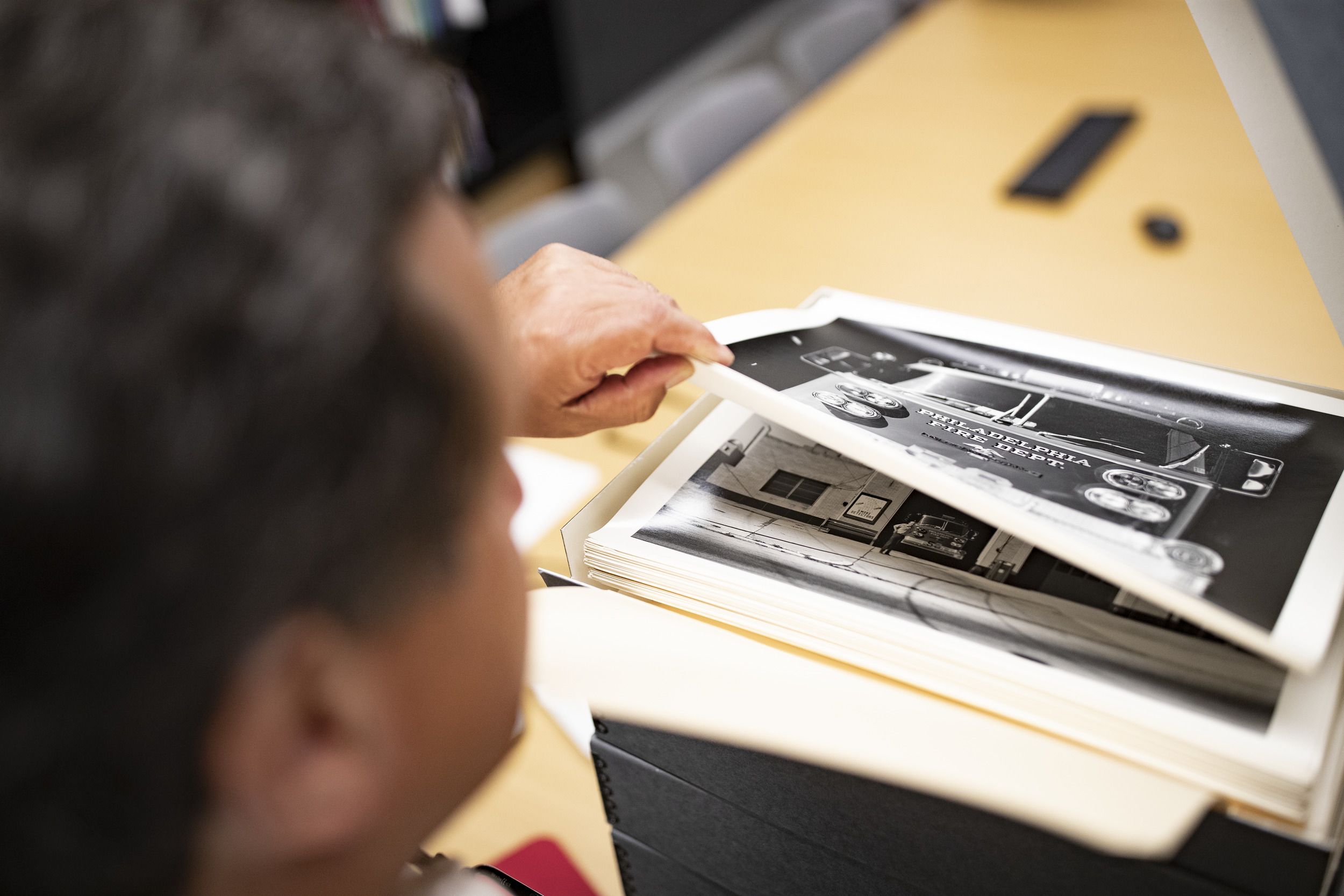
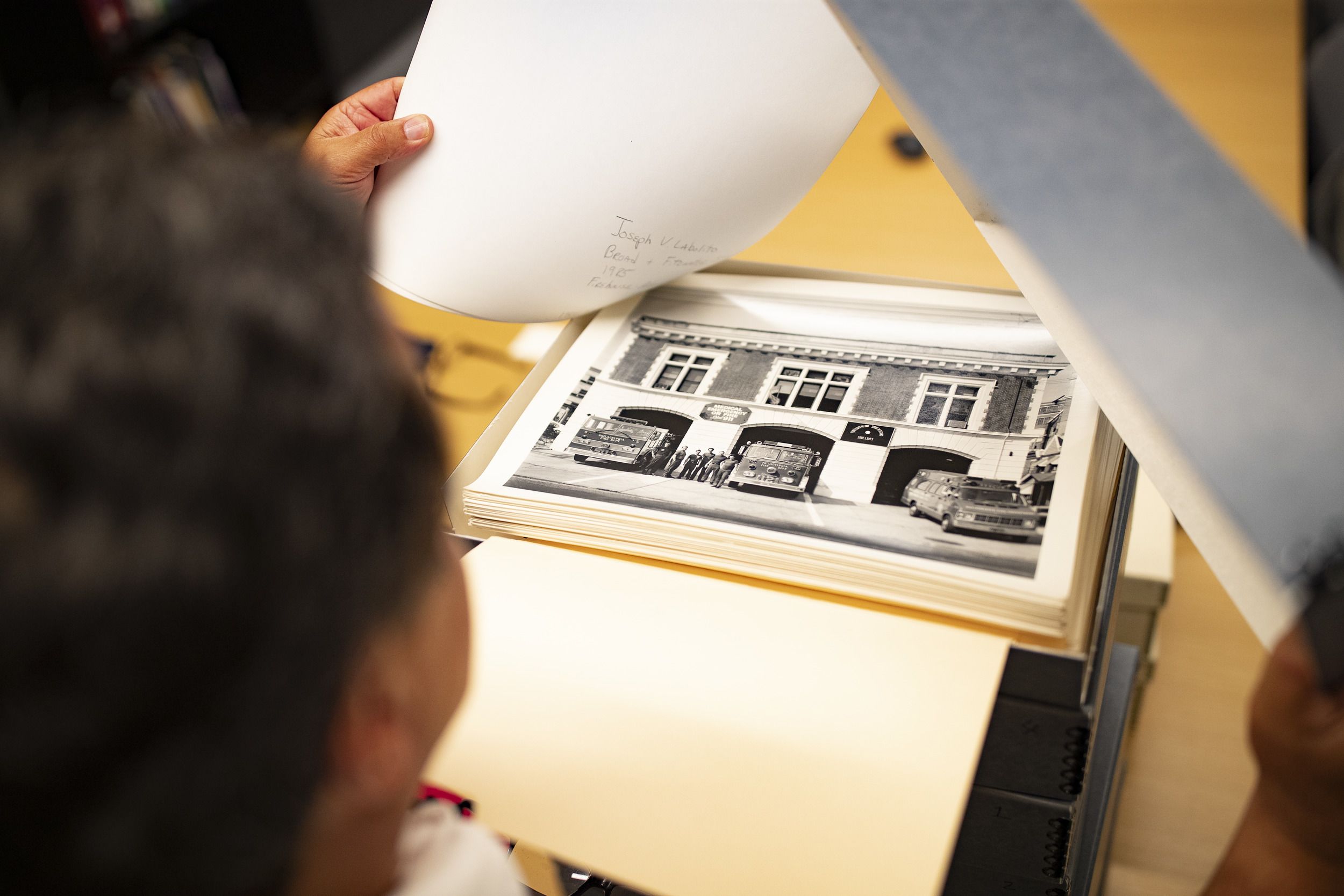
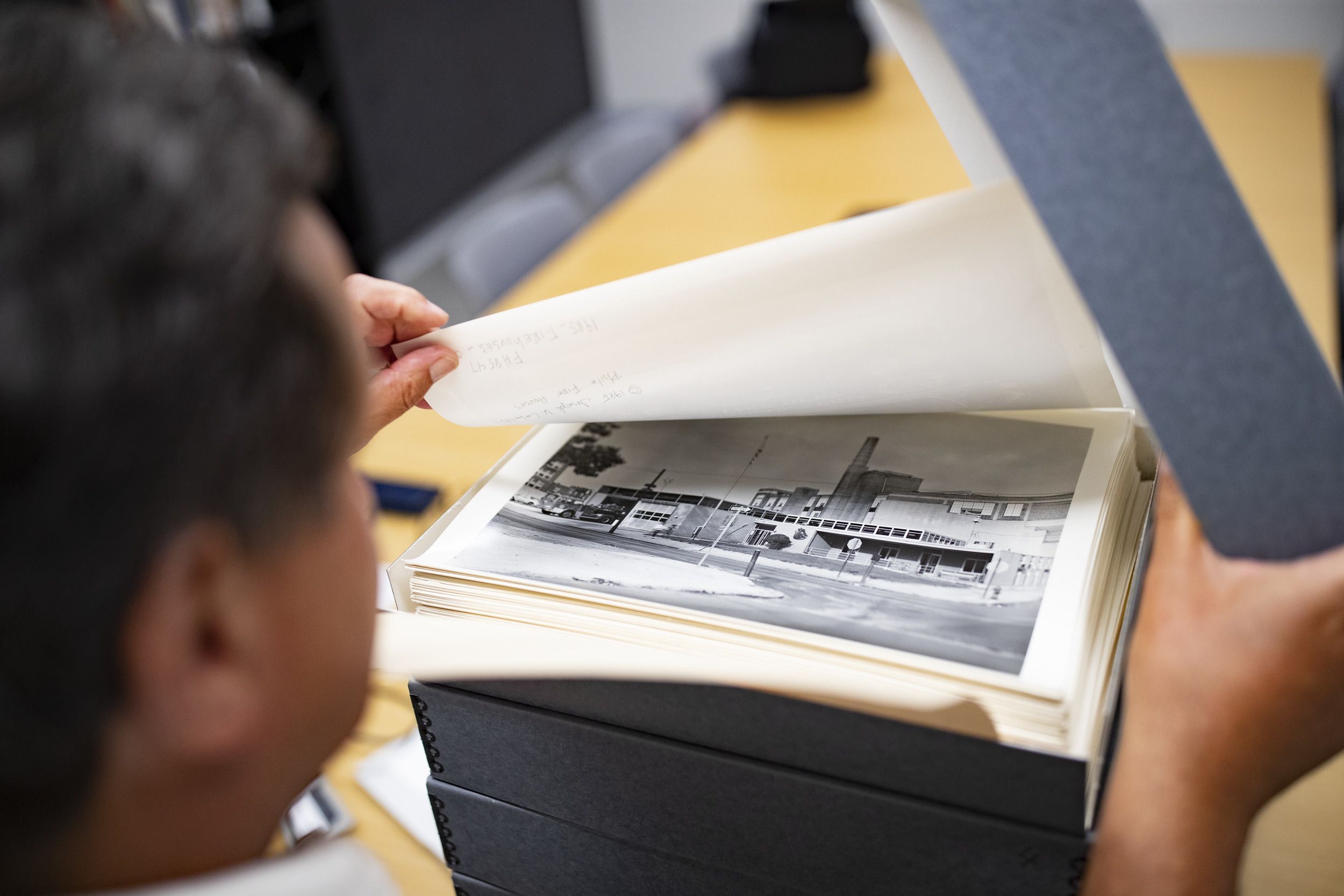
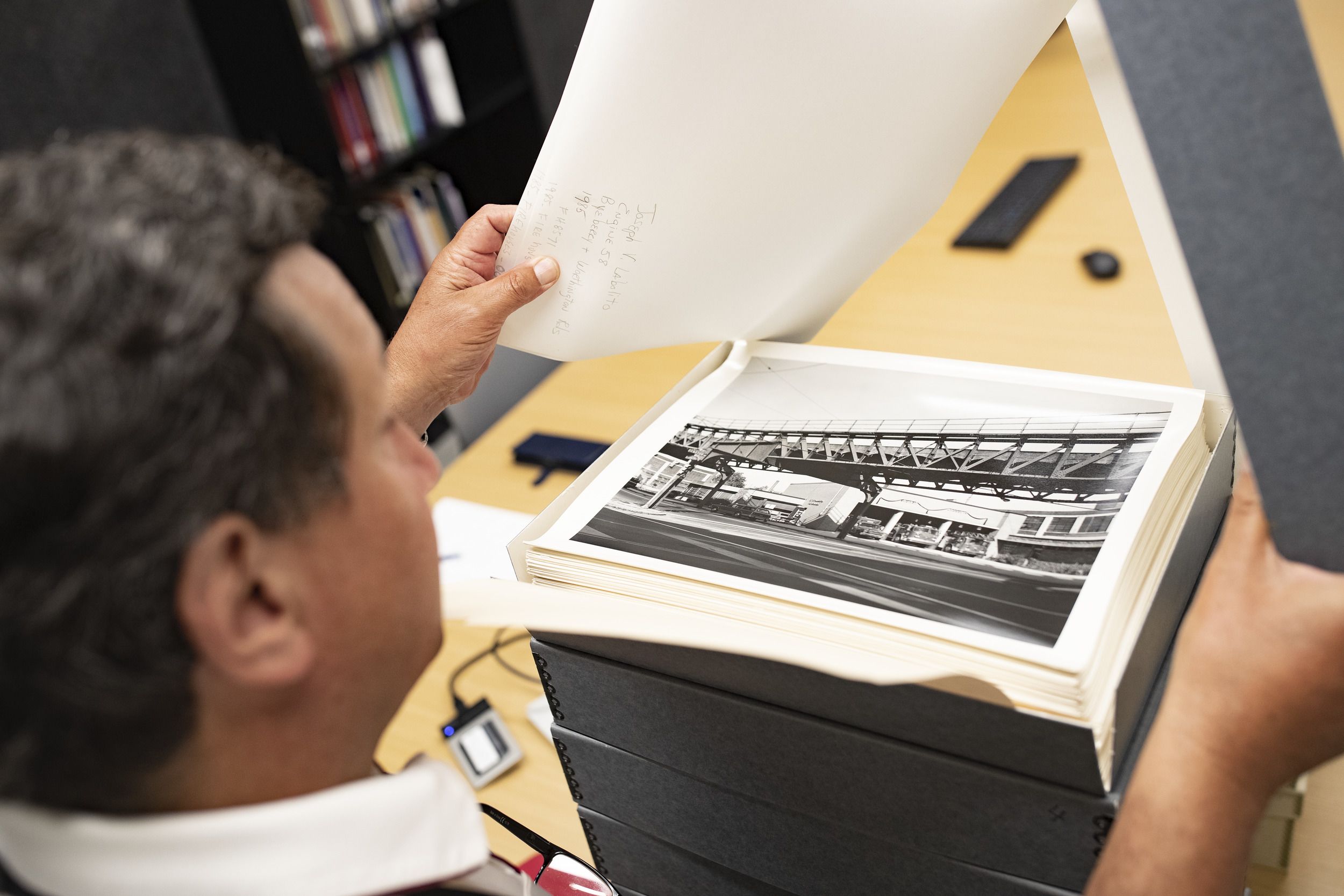
“It became interesting to me that I was photographing things that are going to change, so allowing the pictures to age, knowing that at some point it will be cool to look back at because it is not going to look that way anymore,” he explained.
“The fact that Temple is a research university and people come here to study Philadelphia, I thought it should be in Temple’s collection,” he said. “And as good as Temple has been to my family and me, I feel really good about giving back to them.”
Evolution of Constructing Philadelphia
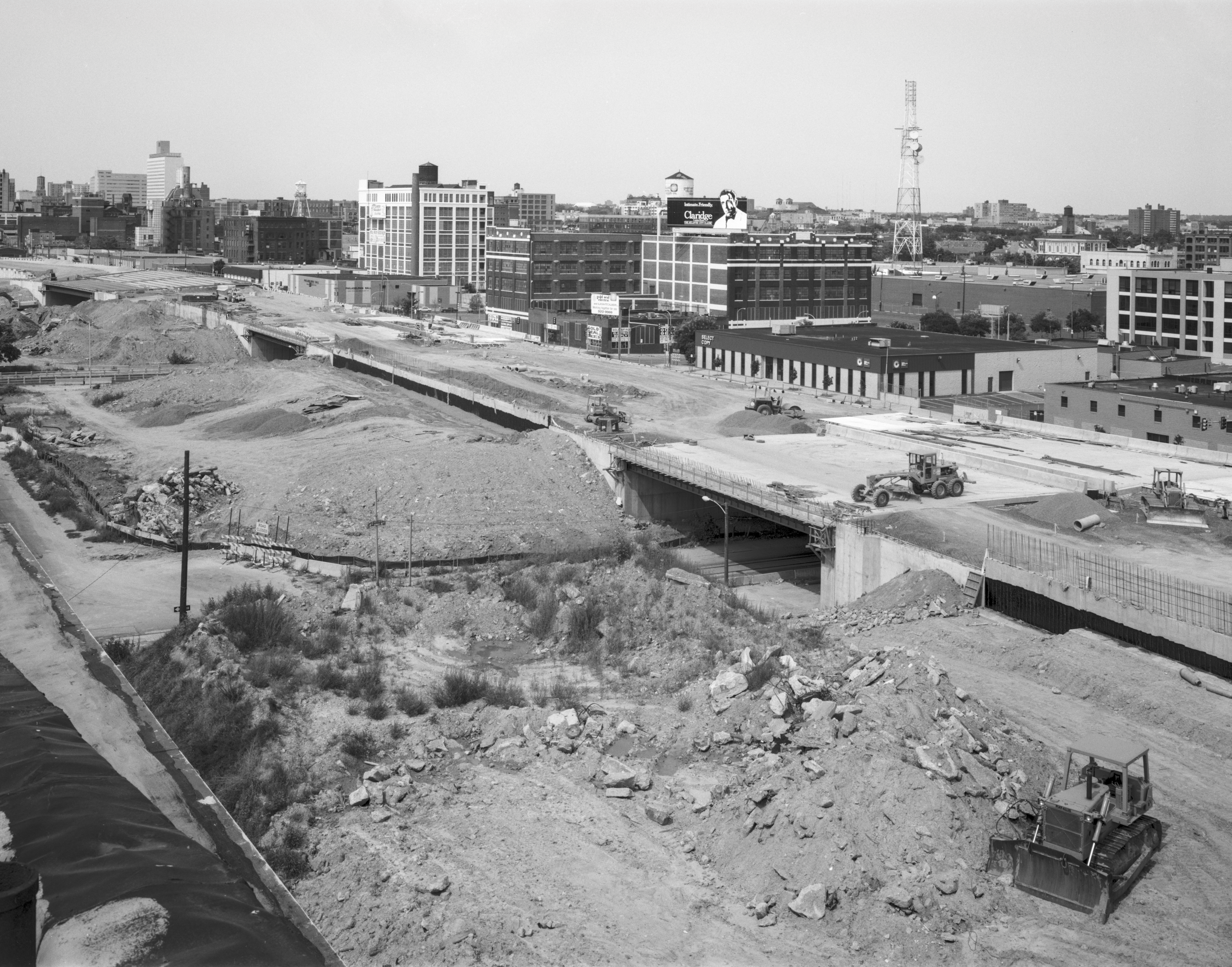
The image of the Independence Mall was taken from the Penn Mutual Building at Walnut Street between 5th and 6th streets, 1999.
The image of the Independence Mall was taken from the Penn Mutual Building at Walnut Street between 5th and 6th streets, 1999.
Philadelphia Stadiums, Buildings and Construction Sites in the 80's 90's and 00's
The Drake Hotel on the 1500 block of Spruce Street, Center City, Philadelphia.
The Drake Hotel on the 1500 block of Spruce Street, Center City, Philadelphia.
1984
The Philadelphia Inquirer building at North Broad and Callowhill streets.
The Philadelphia Inquirer building at North Broad and Callowhill streets.
1986
The construction site of the Vine Street Expressway, a foundation structure for the ramp to Interstate 95.
The construction site of the Vine Street Expressway, a foundation structure for the ramp to Interstate 95.
1988
Heavy traffic riding north up South Broad Street from Interstate 95 during a regular season NFL game of the Minnesota Vikings against Philadelphia Eagles in 1989. JFK Stadium, the Spectrum and Veterans Stadium are pictured in the background.
Heavy traffic riding north up South Broad Street from Interstate 95 during a regular season NFL game of the Minnesota Vikings against Philadelphia Eagles in 1989. JFK Stadium, the Spectrum and Veterans Stadium are pictured in the background.
1989
The construction site of the PA Convention Center.
The construction site of the PA Convention Center.
1990
An image of John F. Kennedy Stadium, an open-air stadium that once held concerts and sporting events in South Philadelphia.
An image of John F. Kennedy Stadium, an open-air stadium that once held concerts and sporting events in South Philadelphia.
1991
The construction site of the PA Convention Center.
The construction site of the PA Convention Center.
1992
The construction site of the Wells Fargo Center, originally called the Spectrum II replaced the Spectrum as the home arena of the Philadelphia Flyers and Philadelphia 76ers. In addition, this is the former site of JFK Stadium. Veterans Stadium and the Spectrum are pictured in the background.
The construction site of the Wells Fargo Center, originally called the Spectrum II replaced the Spectrum as the home arena of the Philadelphia Flyers and Philadelphia 76ers. In addition, this is the former site of JFK Stadium. Veterans Stadium and the Spectrum are pictured in the background.
1995
The picture of Holmesburg Prison is taken from Tower 4 of the prison at 8215 Torresdale Ave., Northeast Philadelphia.
The picture of Holmesburg Prison is taken from Tower 4 of the prison at 8215 Torresdale Ave., Northeast Philadelphia.
1995
Inside a holding cell at Holmesburg Prison, 8215 Torresdale Ave., Northeast Philadelphia.
Inside a holding cell at Holmesburg Prison, 8215 Torresdale Ave., Northeast Philadelphia.
1995
Robert Engman’s Triune sculpture, a 20-foot-high web of interlocking bronze curves at 15th Street and South Penn Square across from City Hall.
Robert Engman’s Triune sculpture, a 20-foot-high web of interlocking bronze curves at 15th Street and South Penn Square across from City Hall.
1999
The construction site of Barnes Foundation near 21st Street and the Benjamin Franklin Parkway.
The construction site of Barnes Foundation near 21st Street and the Benjamin Franklin Parkway.
2011
Special Collections Research Center
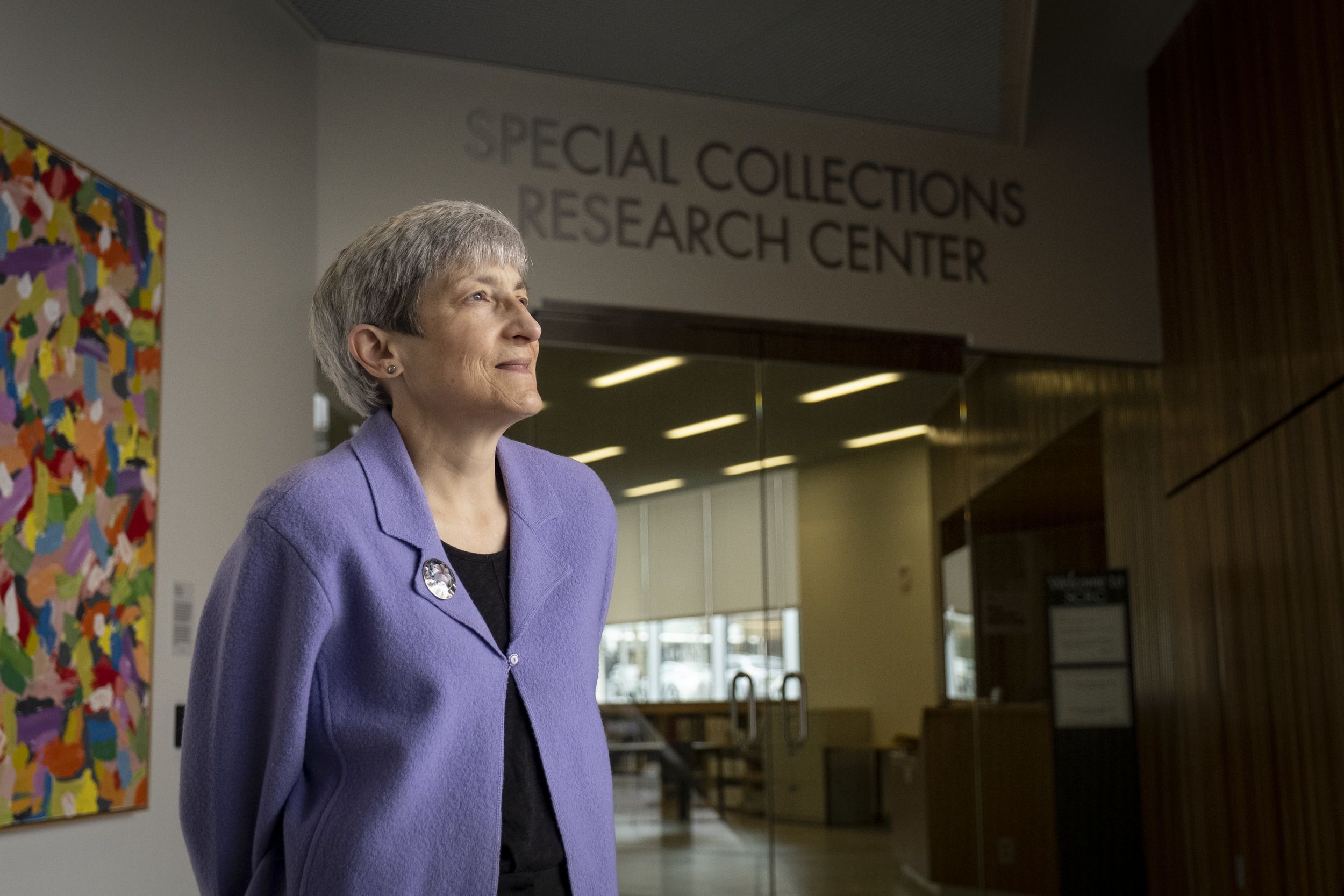
SCRC is the principal repository and steward of Temple Libraries’ rare books, manuscripts, archives and university records. It collects, preserves and makes accessible primary resources and rare materials to support research, teaching, learning and administration.
Labolito had his first conversation with Margery Sly, director of SCRC, about the collection at the start of the COVID-19 pandemic in 2020. The two had several conversations over the phone and Zoom about it for over a year, and after viewing the complete collection she knew it was a natural fit for Temple Libraries.
“It fits great with the other collections that we have in the SCRC archives because we actively collect neighborhood history,” she said. “There are many entry points for students and researchers, and that’s a tribute to Joe because it’s such a rich and diverse collection.”
“And for him to have trust in donating his collection to SCRC is an acknowledgment that our urban archives are a premier collection documenting the history of Philly,” she added.
She explained that it is important to collect and preserve raw materials of Philadelphia’s history in SCRC to ensure it is documented and accessible for researchers, students and the city to view how the neighborhoods have changed over time.
“And Joe has done such a good job documenting what he photographed,” she said.
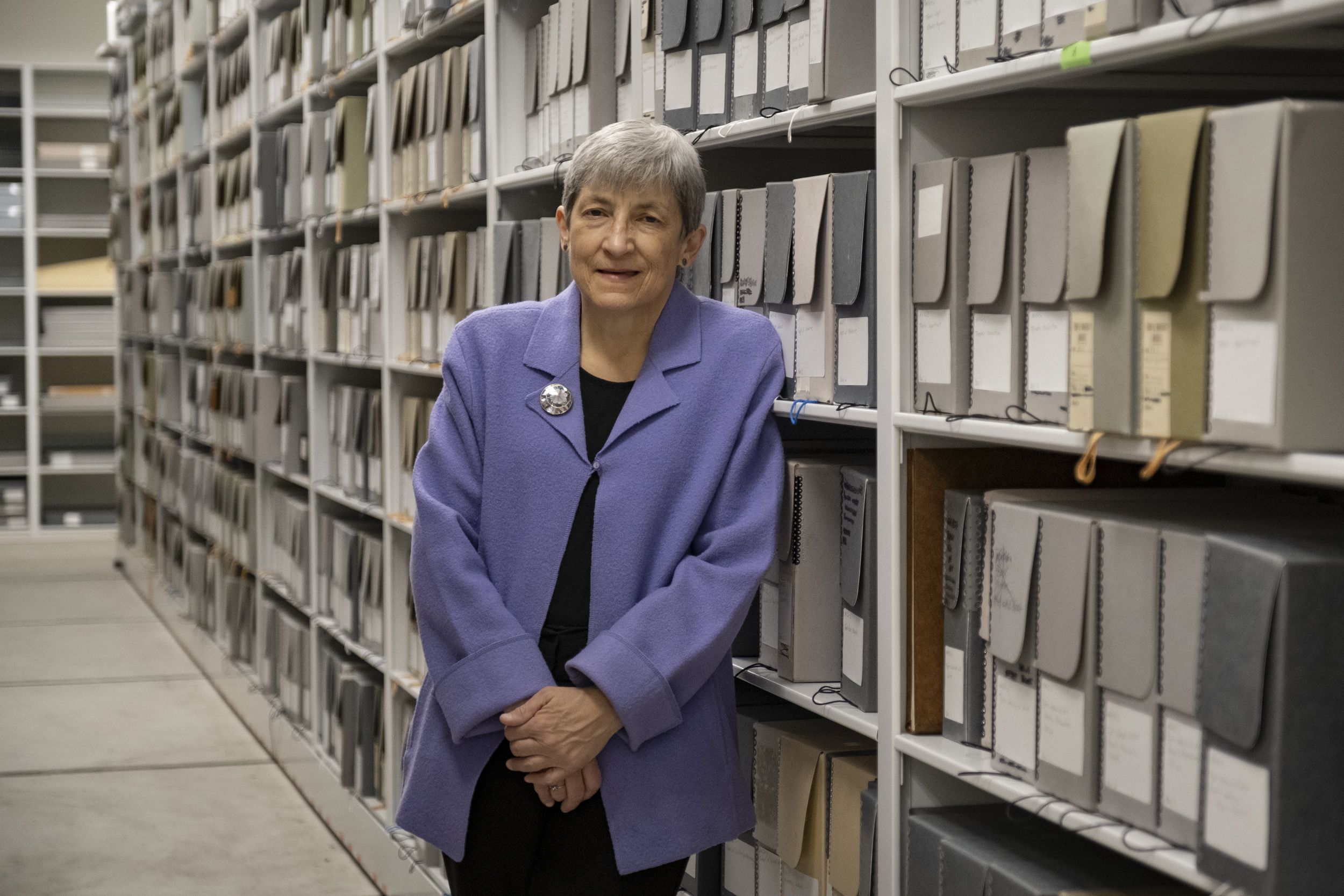
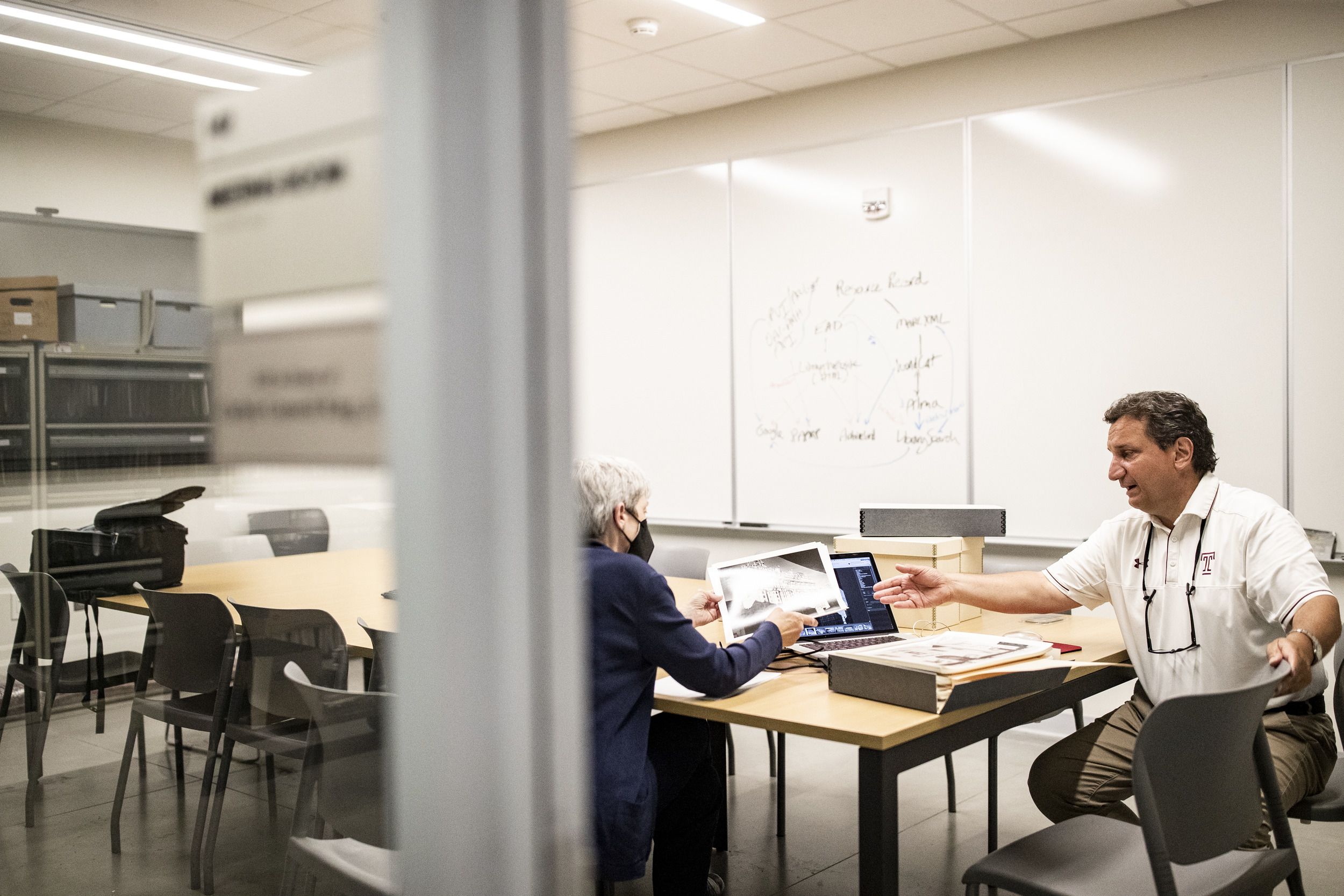
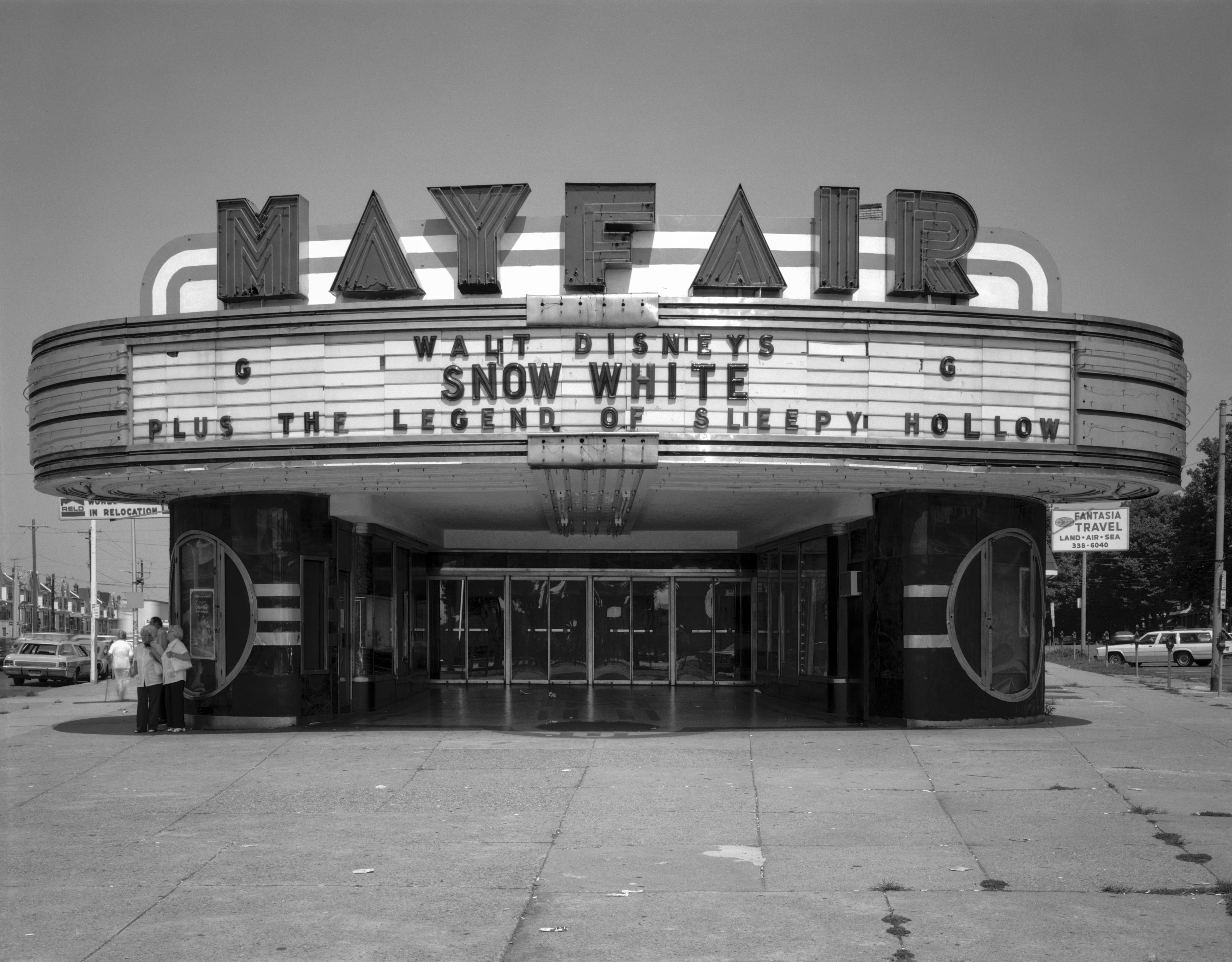
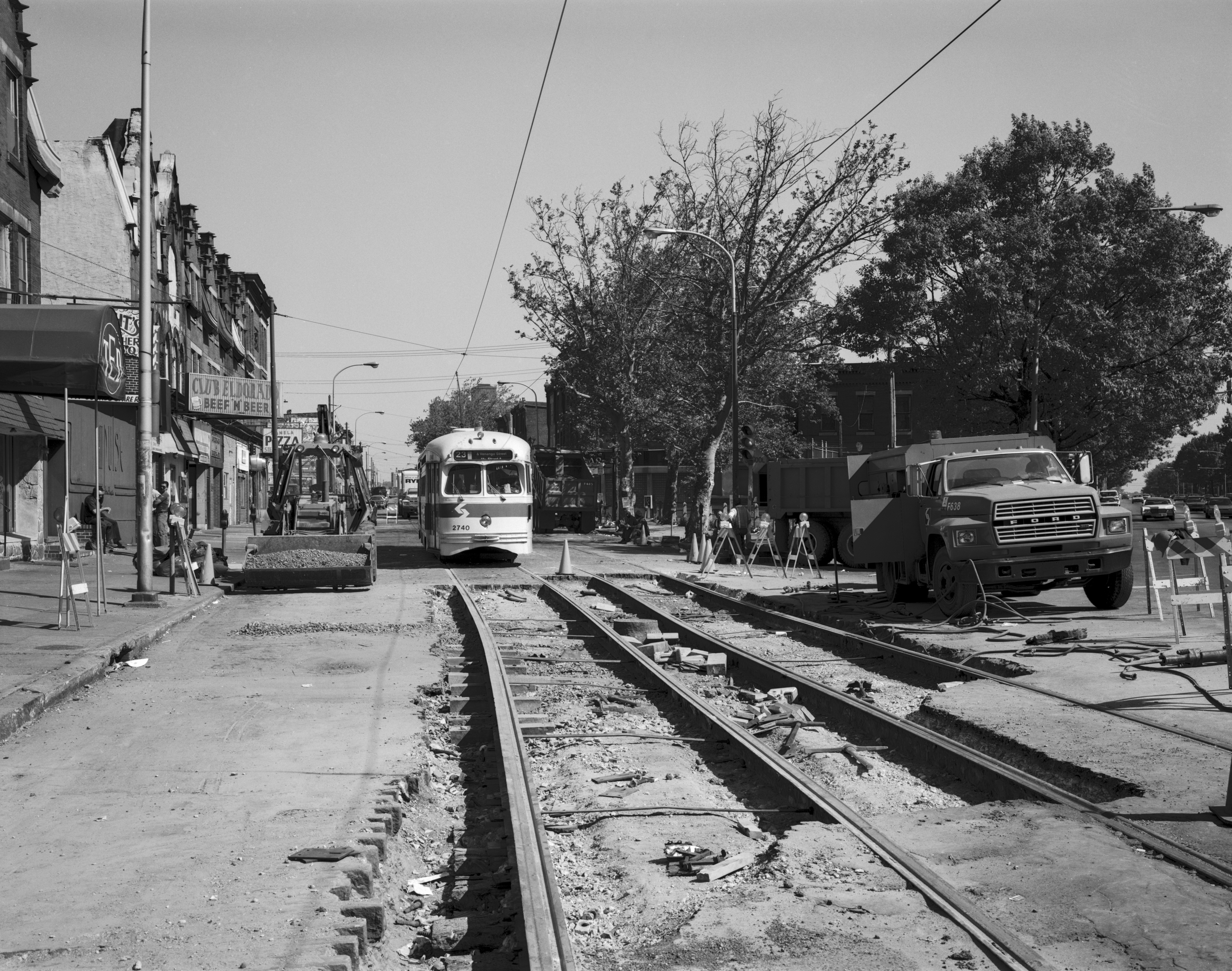
Labolito first shared the images with Byron Wolfe, a program director and art department chair of photography at the Tyler School of Art and Architecture. Wolfe explained to him that the images should be organized into a collection.
“Byron said to me that there is a lot of great stuff here, but he asked if I ever thought of a long-term plan for the images? Had I ever considered how they might be used to help serve future generations? I told him no.” laughed Labolito. “But he got me thinking I should organize these images so that my daughters do not have to do it to continue the collection’s legacy.”
Labolito then started speaking with Sly, who played a major role in mentoring him on how to organize and develop the pictures in a way that would be acceptable to a library.
“Back in the ’80s I was not your typical organized photographer that I am now. Everything was in an envelope packed up in my closet,” he laughed. “I was really jammed in sorting it out and trying to transcribe the information that’s on the back of each print, but Margery truly mentored me through organizing it in a way that a library would accept it.
“She let me into the world of how they do this kind of work by coaching me about different websites, suppliers and vendors. And so I invested in a high-end scanner for the negatives,” he added.
A group of people purchasing movie tickets at the Orleans Movie Theater near Cottman and Bustleton avenues, 1984.
A group of people purchasing movie tickets at the Orleans Movie Theater near Cottman and Bustleton avenues, 1984.
Donato D. Silveri, a pastor, is pictured inside St. Mary Magdalene de Pazzi, the first Italian national parish in the United States, 714 Montrose St., 1991.
Donato D. Silveri, a pastor, is pictured inside St. Mary Magdalene de Pazzi, the first Italian national parish in the United States, 714 Montrose St., 1991.
A man posing in front of the Boot and Saddle Bar at South Broad and Ellsworth streets, 1989.
A man posing in front of the Boot and Saddle Bar at South Broad and Ellsworth streets, 1989.
Sly explained that SCRC digitizes images at a very high preservation quality, so she talked him through the standards around preservation scanning. And the photo prints had to be in the right physical storage, including acid-free envelopes and boxes.
“He was very willing to go through and identify when he took the images, what content it was and then apply the library-like subject headings to the content,” she said. “I think he trusts us to take good care of his collection into the future and to ensure that it’s available for researchers.
“It is an important piece of the puzzle that is the really rich history of Philadelphia, so it adds to our knowledge and the history of the city in a significant and visual way,” she added.
“The fact that I can give something to Temple that they can be the caretaker of for a piece of my legacy is really important to me,” said Labolito. “The day that I dropped the collection off, I called my daughters and said, ‘The collection’s legacy is in good hands.’”
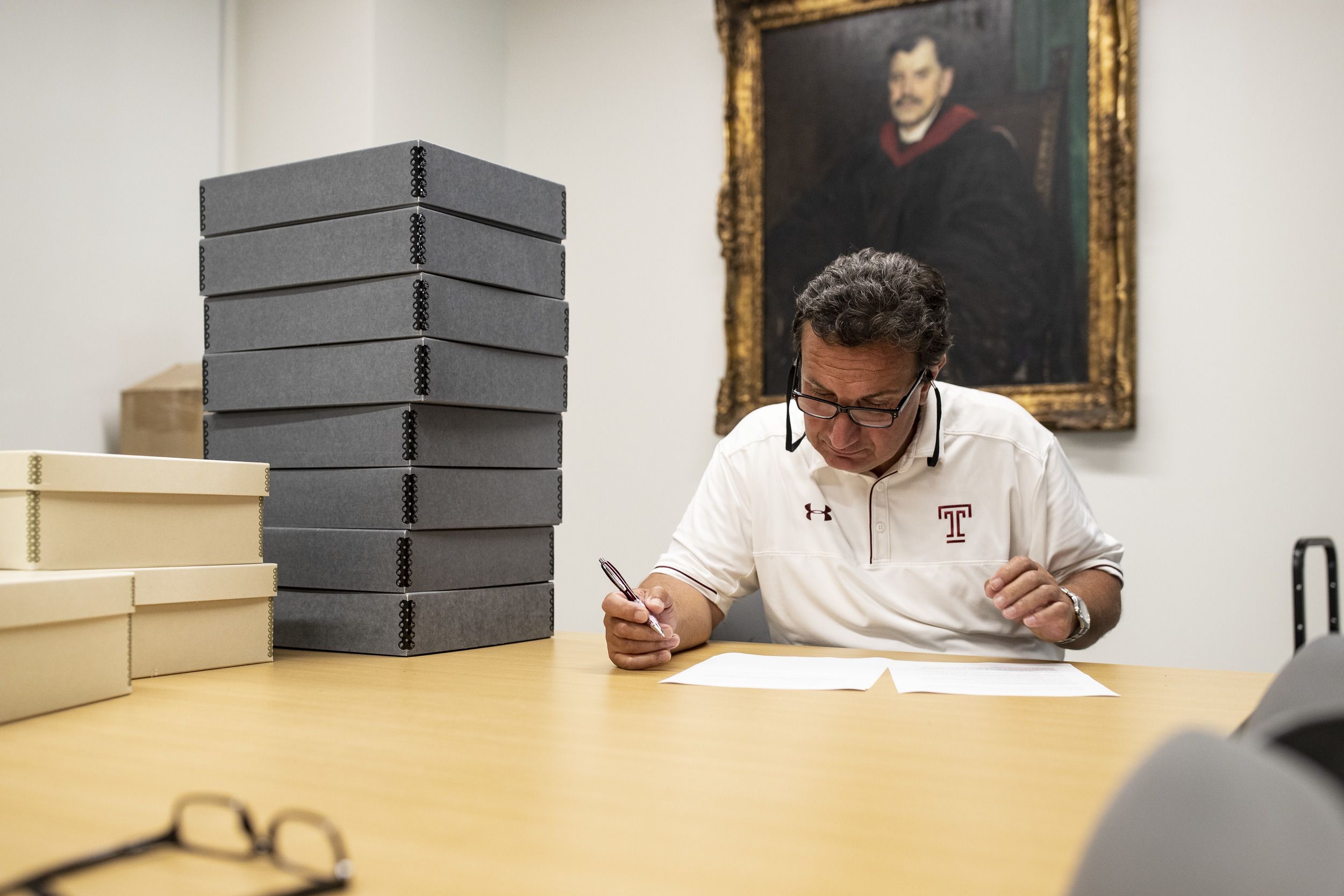

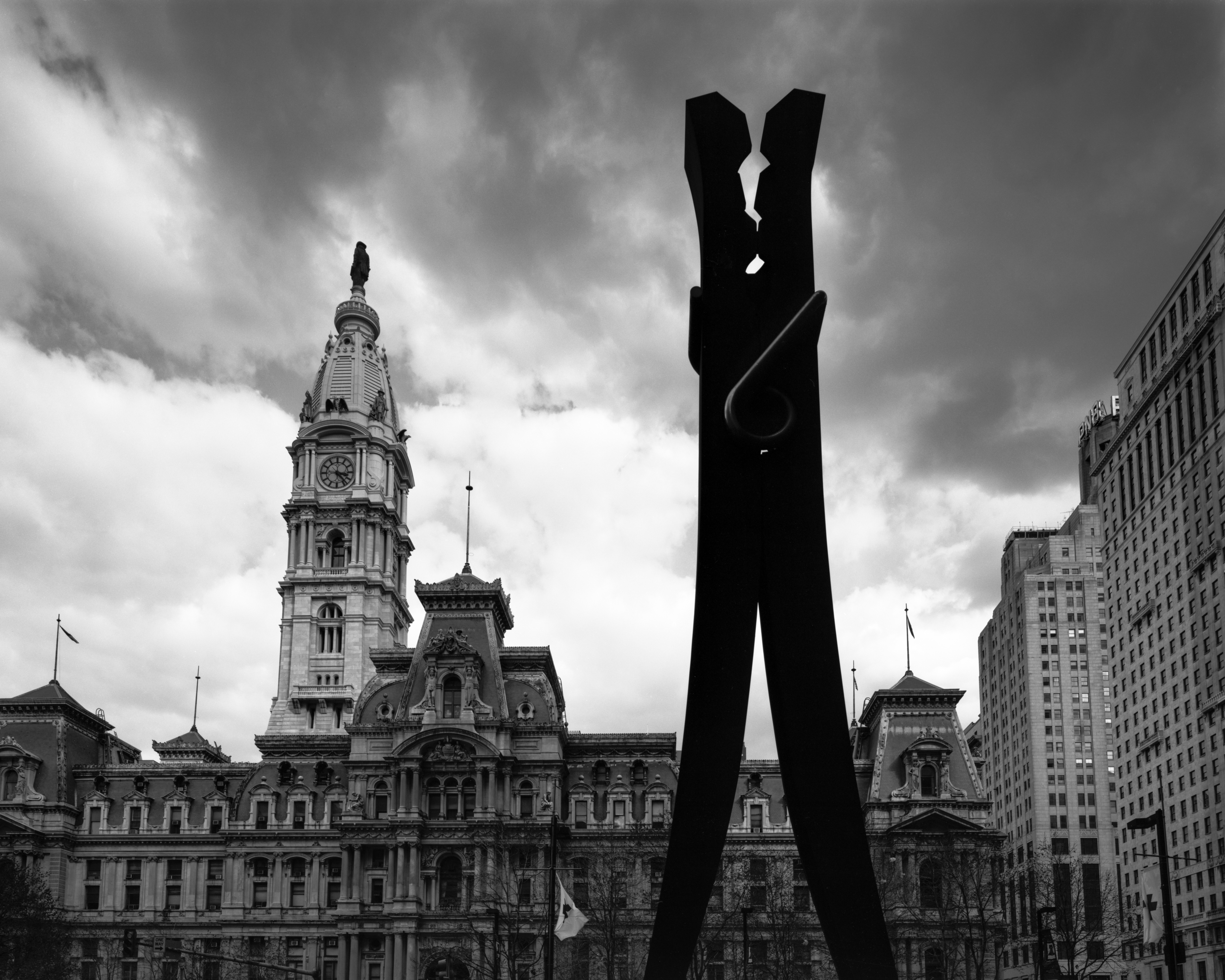

Joseph Labolito Photograph Collection
844 high-resolution digital scans from the original negatives
2,405 4x5 black and white negatives
24 4x5 color transparencies
23 rolls of 120 medium format black and white negatives
812 original 11x14 archivally processed, selenium-toned silver prints
680 proofs from original negatives
Miscellaneous documents including oral histories, model releases, commission letters, notes and research history.
The Joseph Labolito Photograph Collection of digital images can be found at labolito.com. And on Facebook, Instagram and LinkedIn at @philadelphiacollections.
The physical photo prints from the The Joseph Labolito Photograph Collection can be viewed at the Special Collections Research Center (SCRC) located in Charles Library, and the digital photo prints will be available at a later date in the Libraries’ digital collections website at digital.library.temple.edu.

